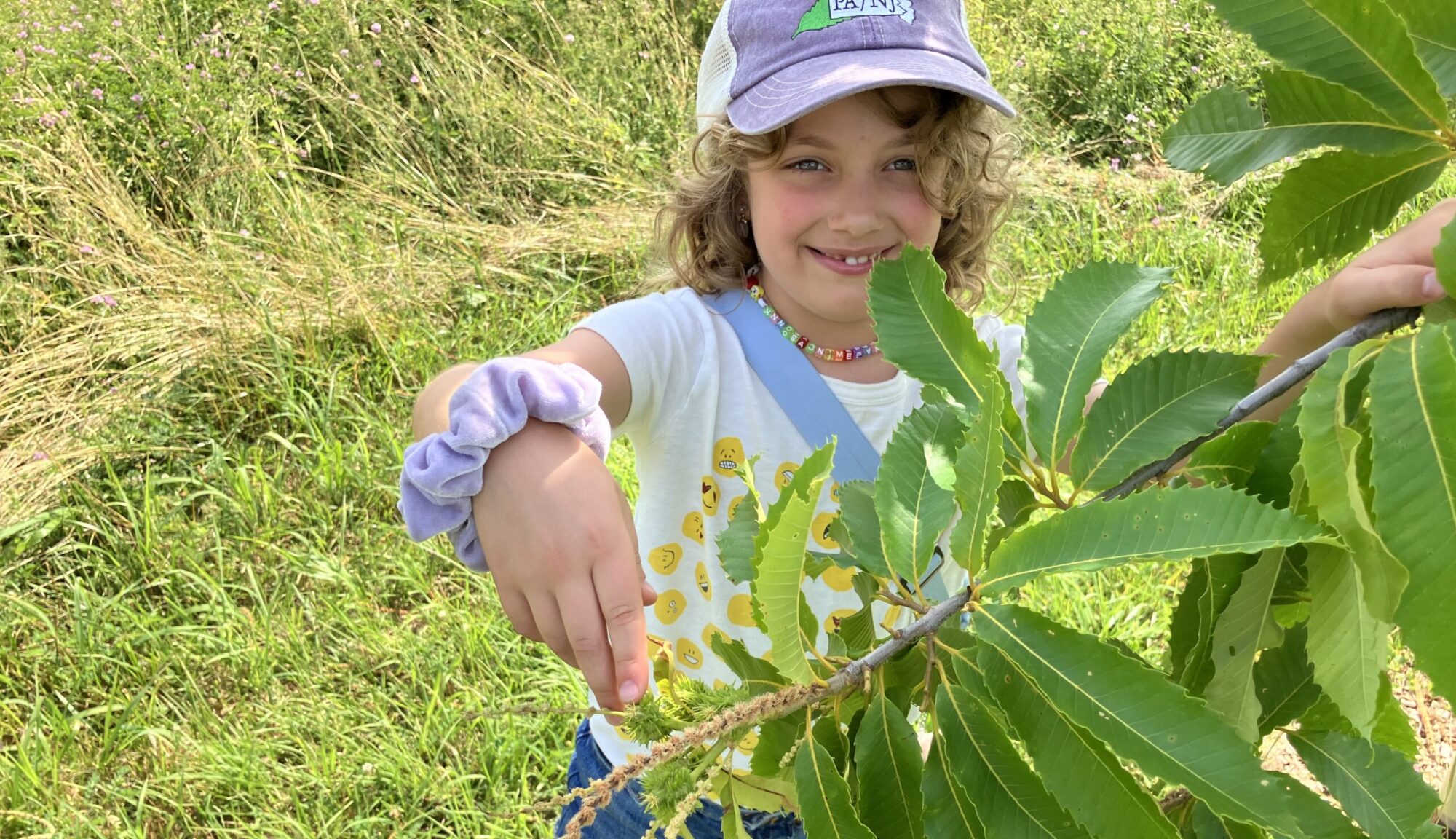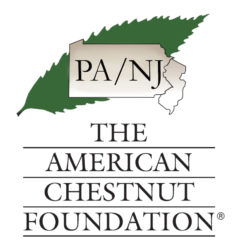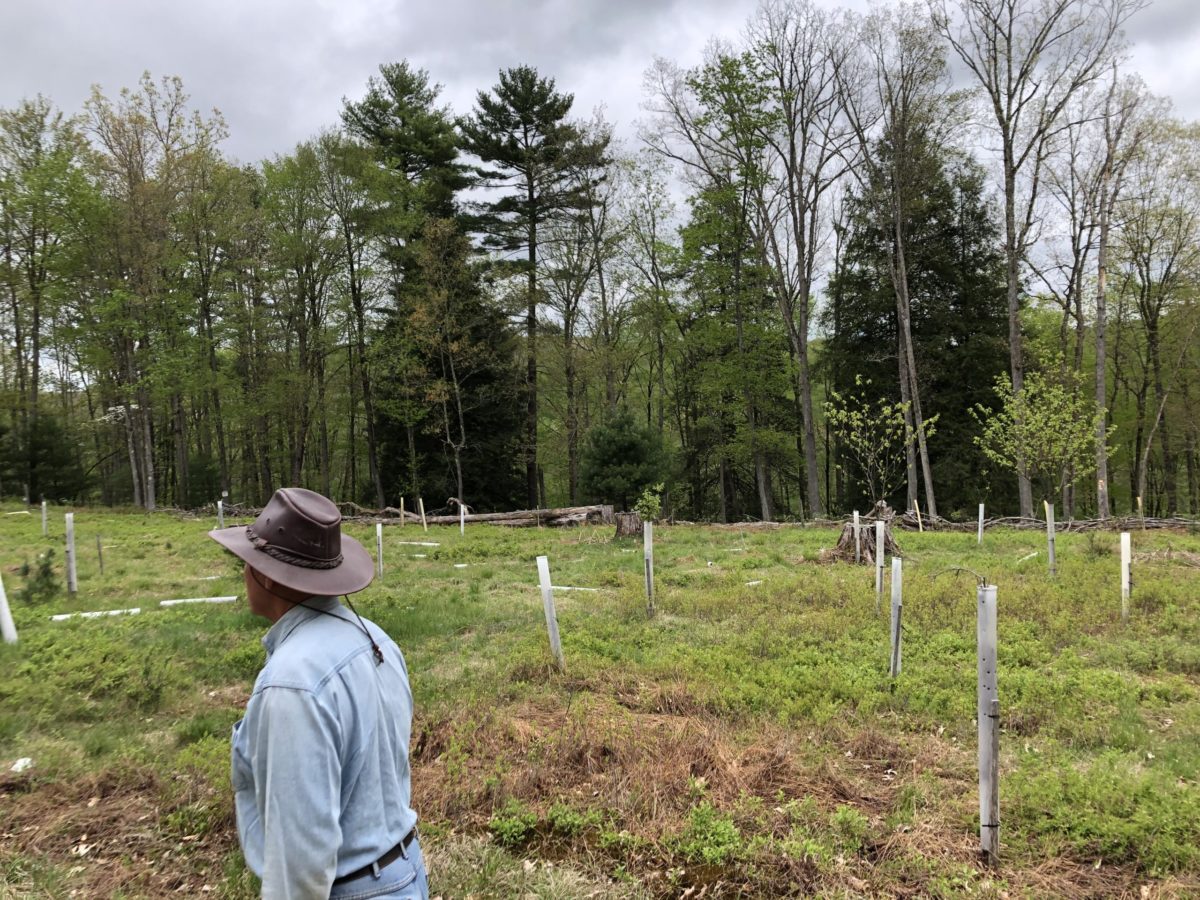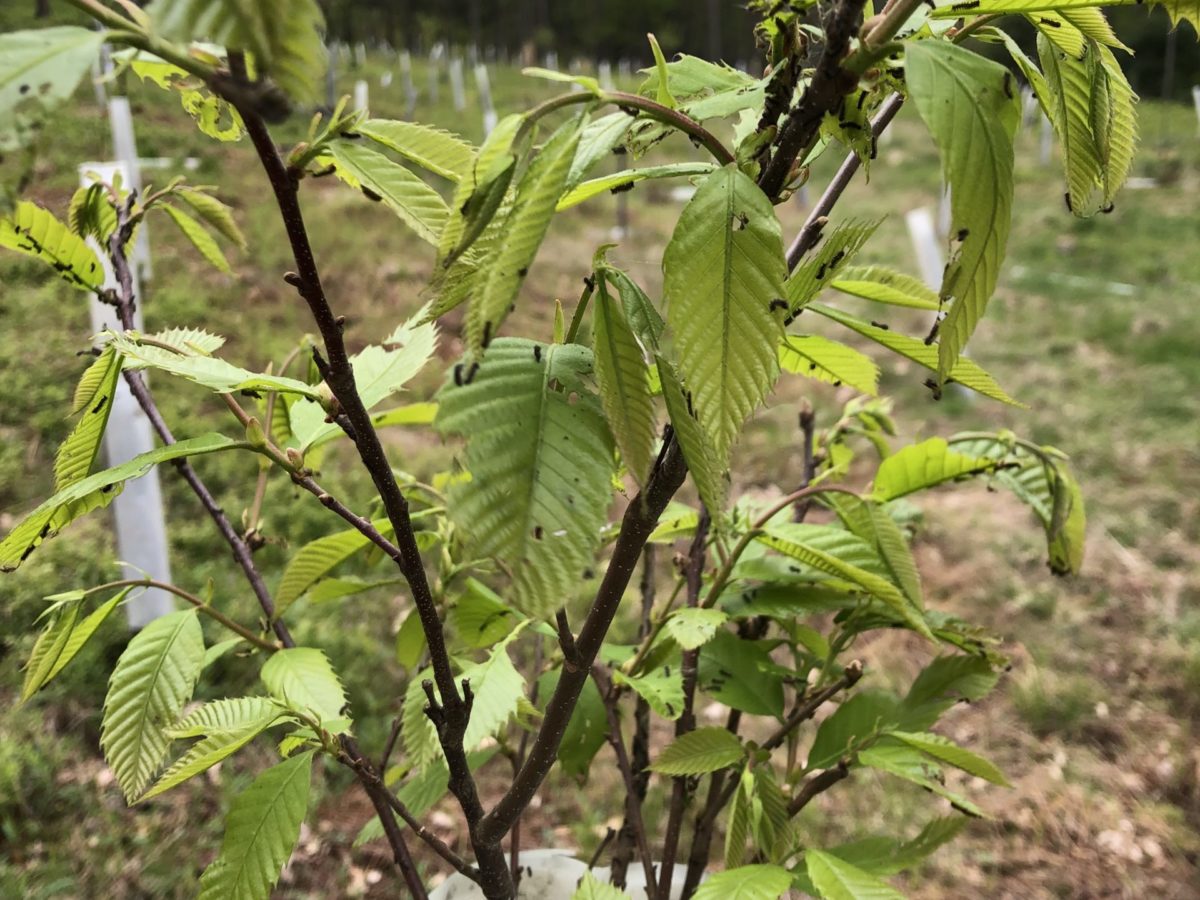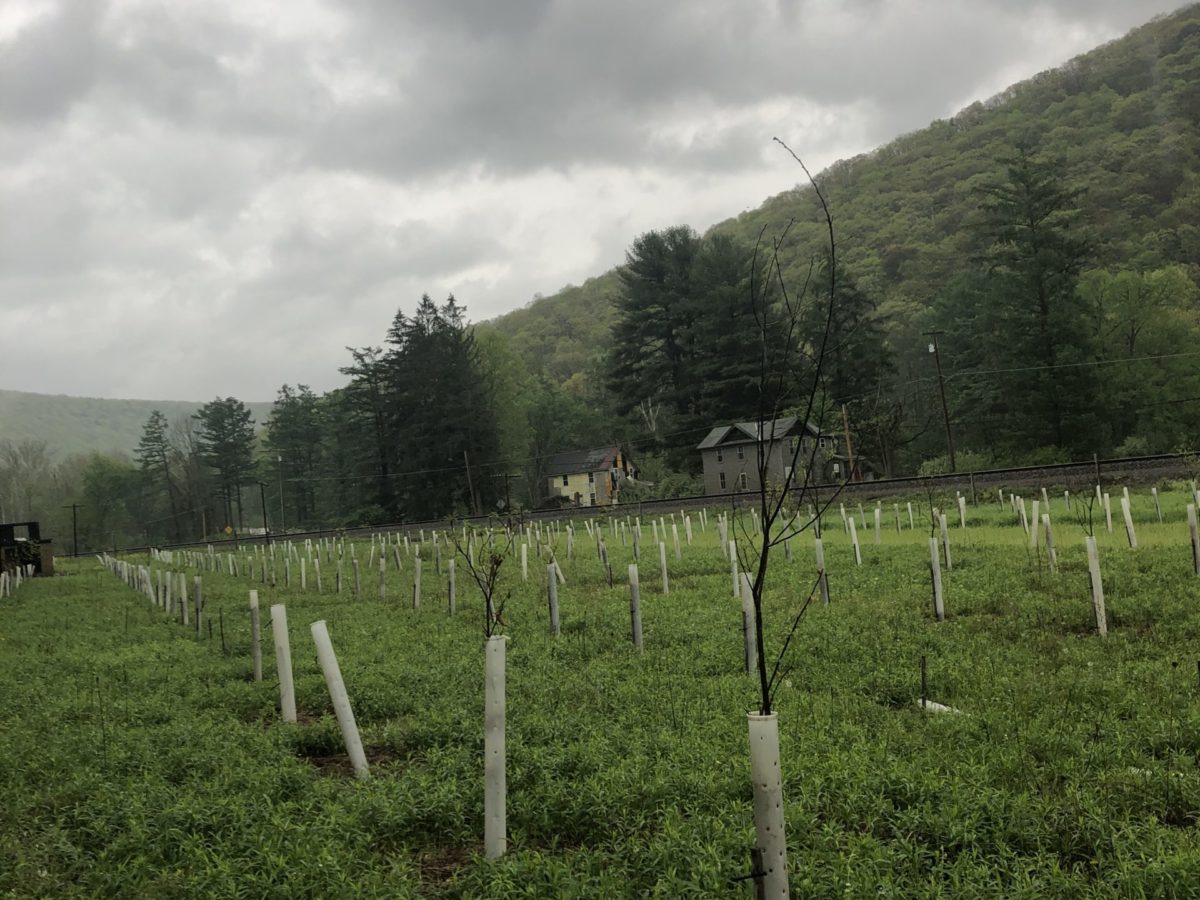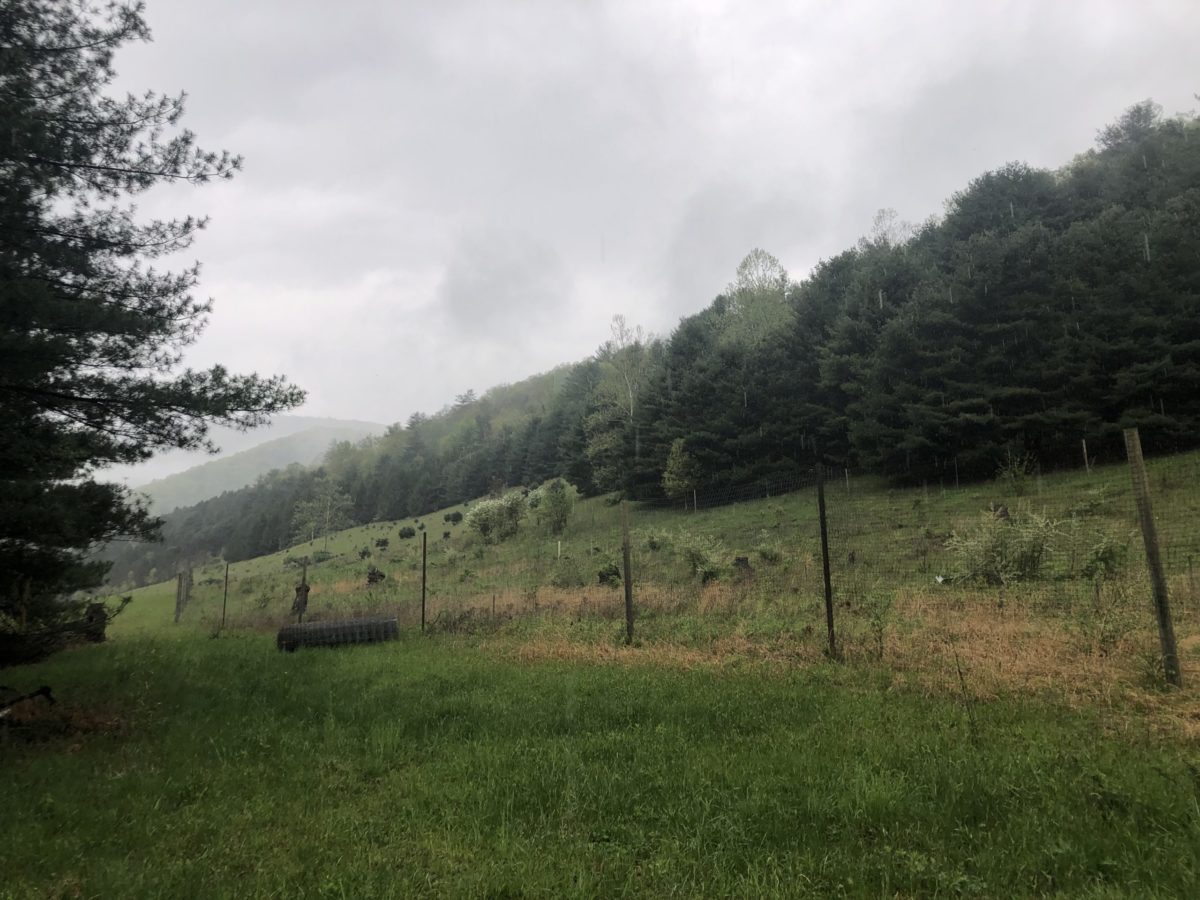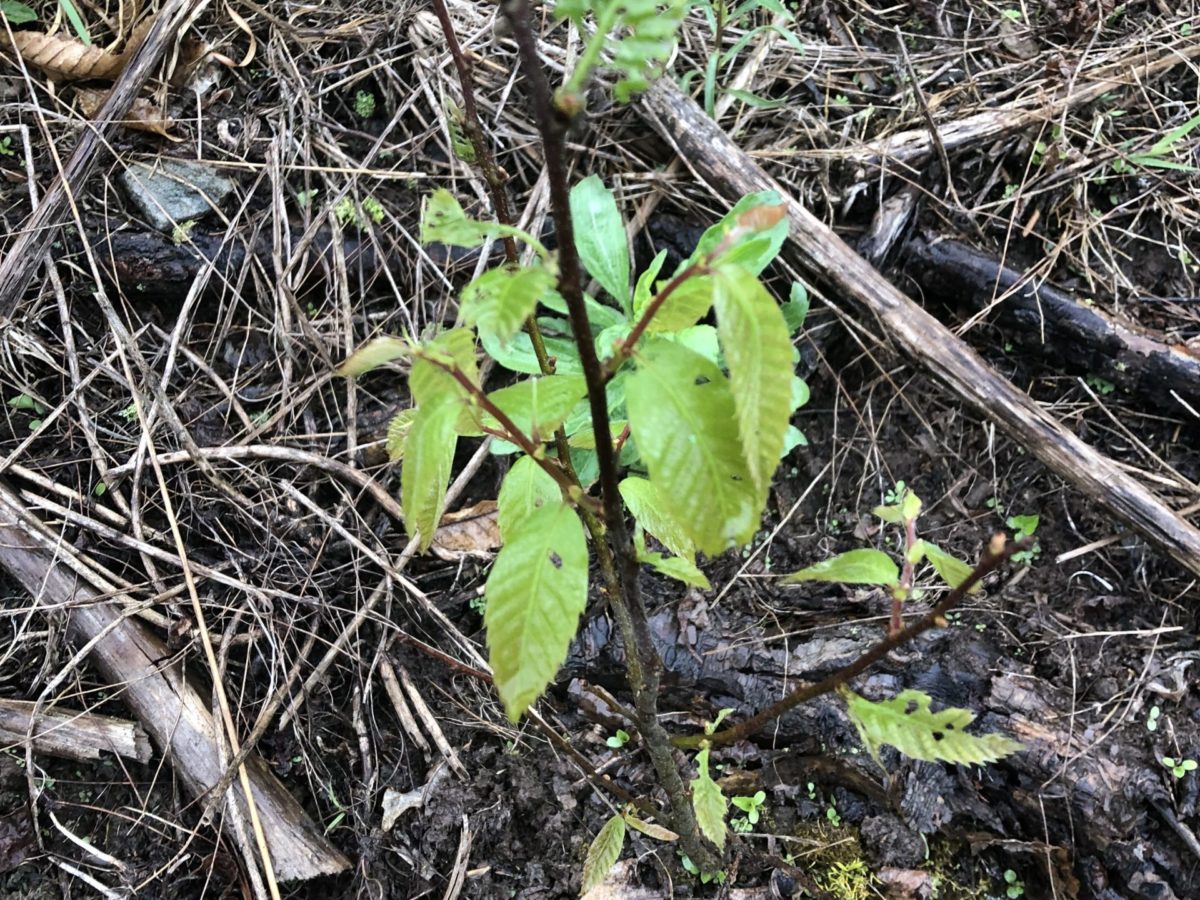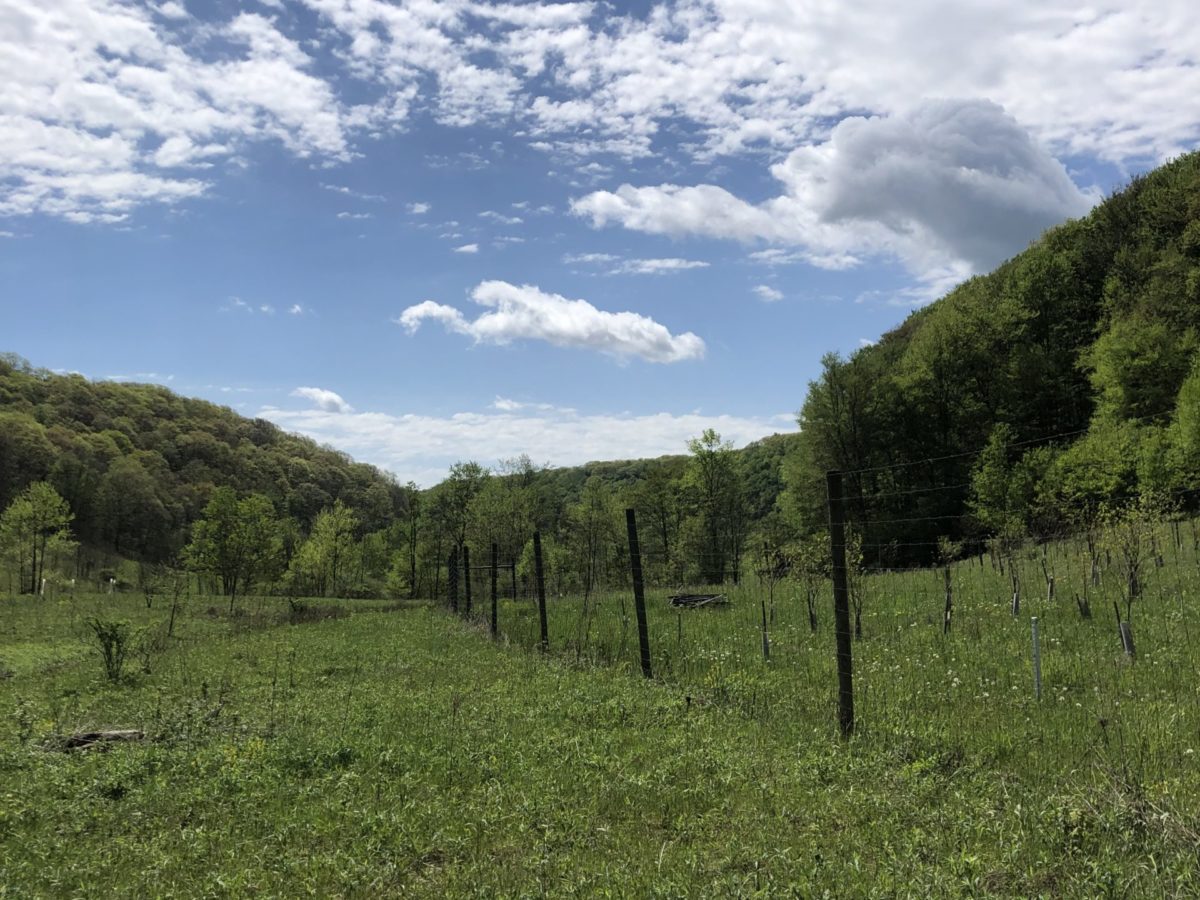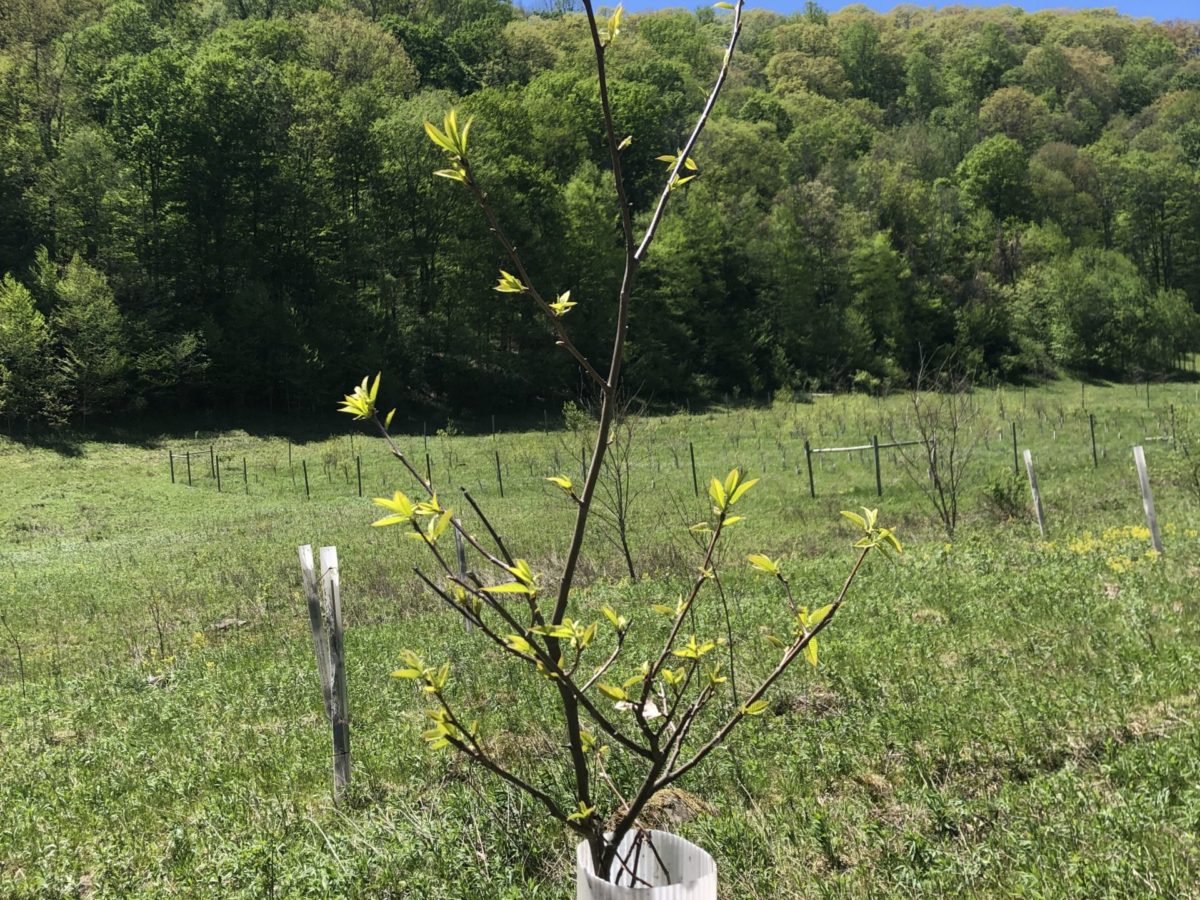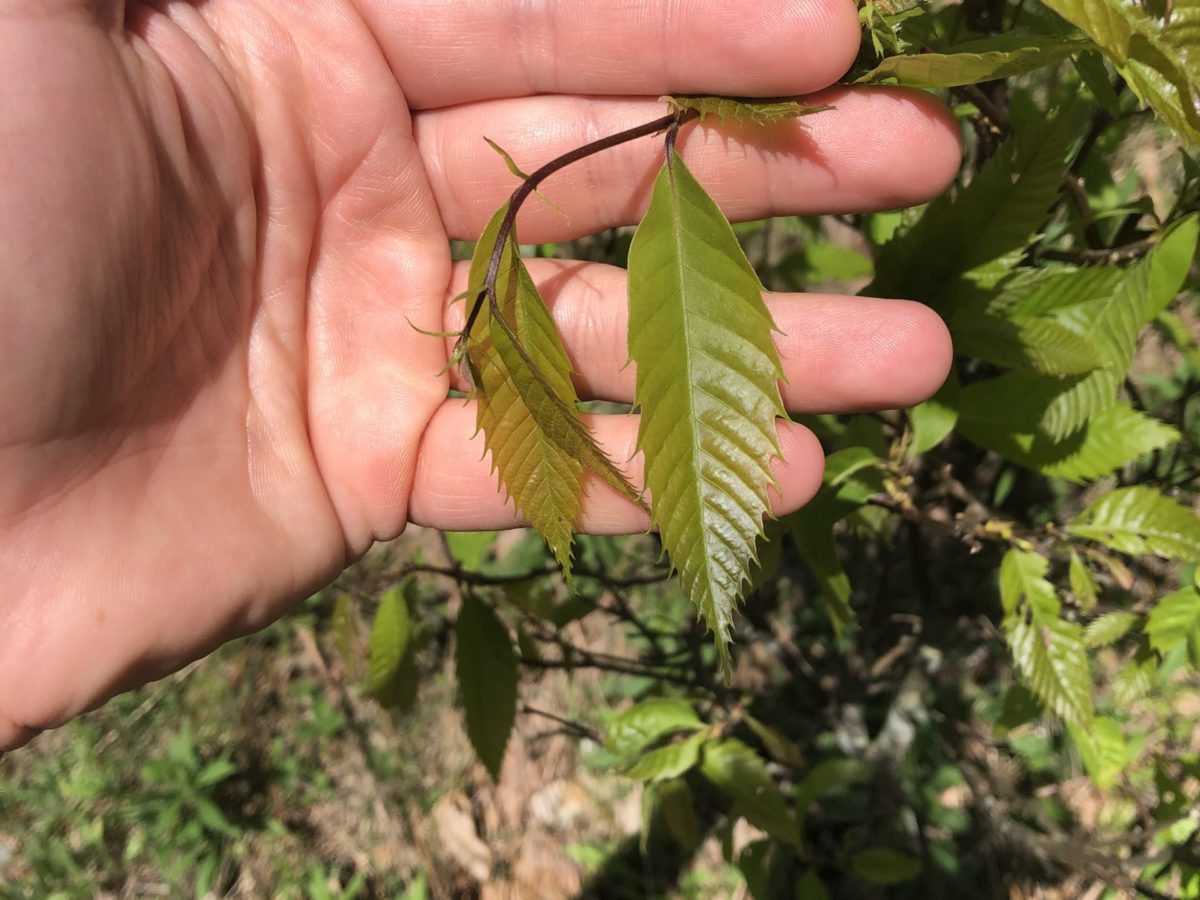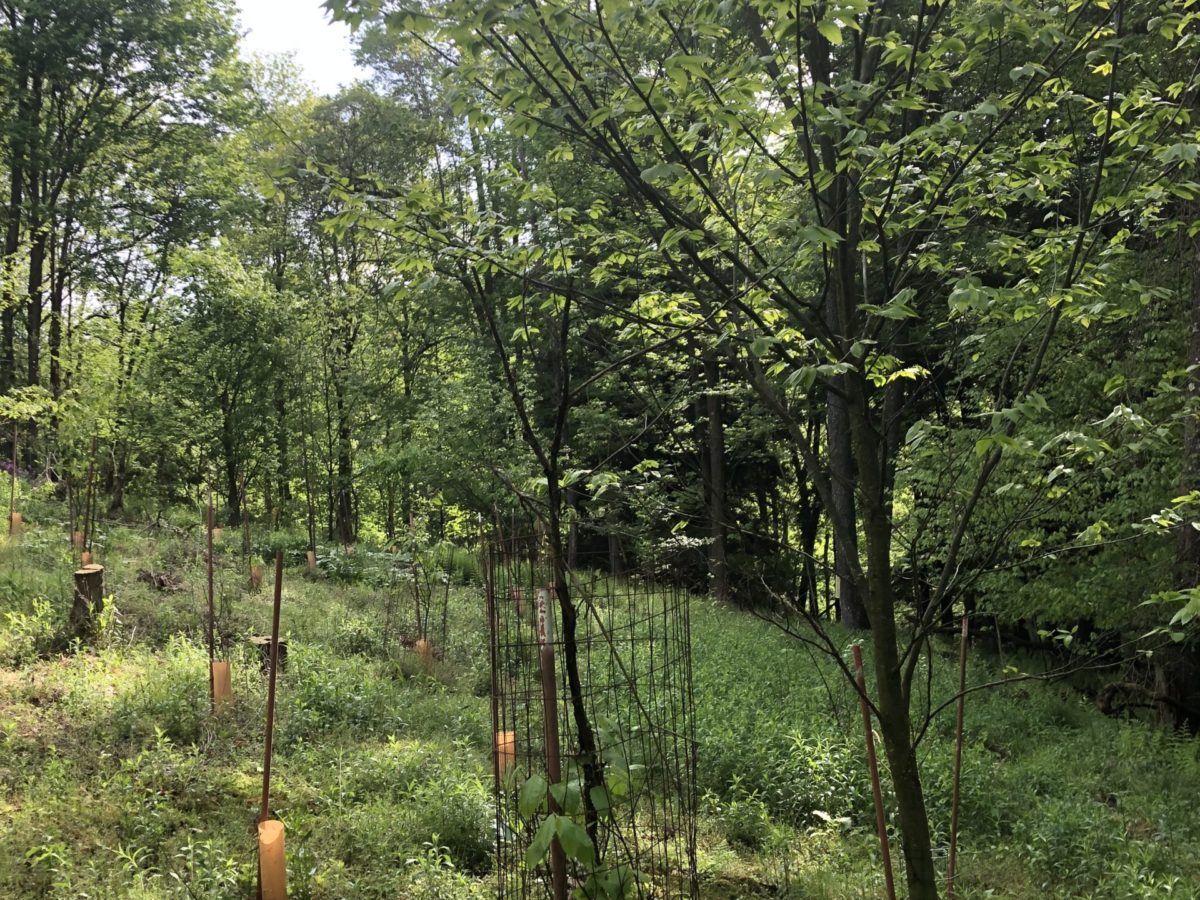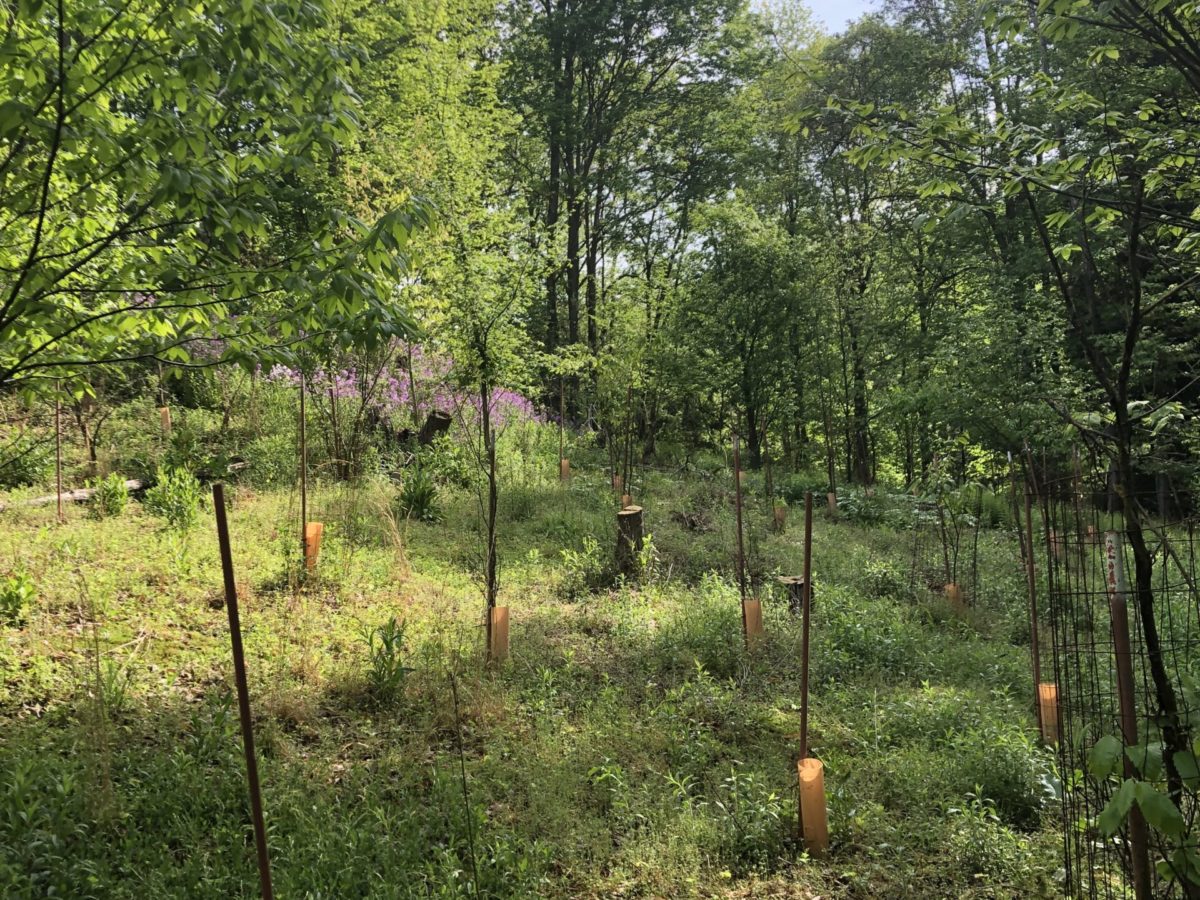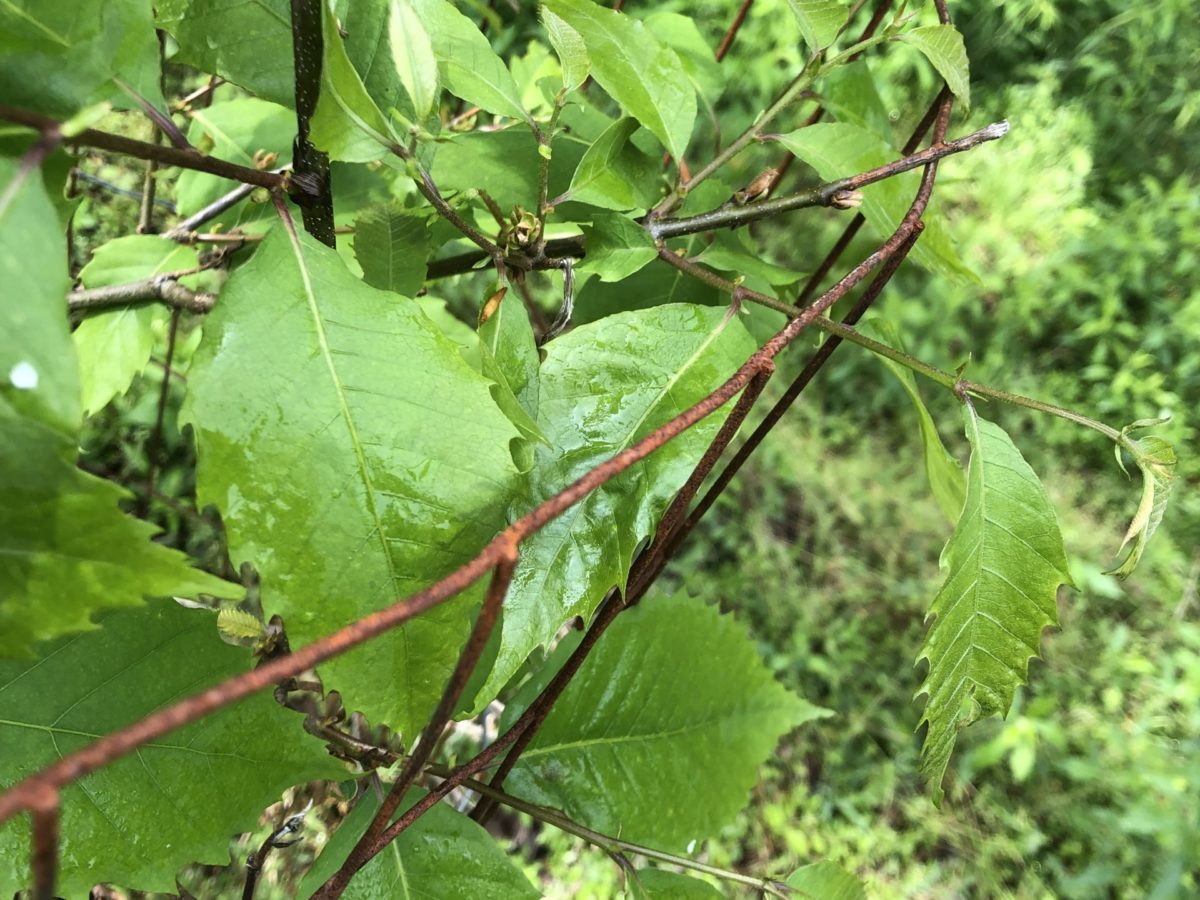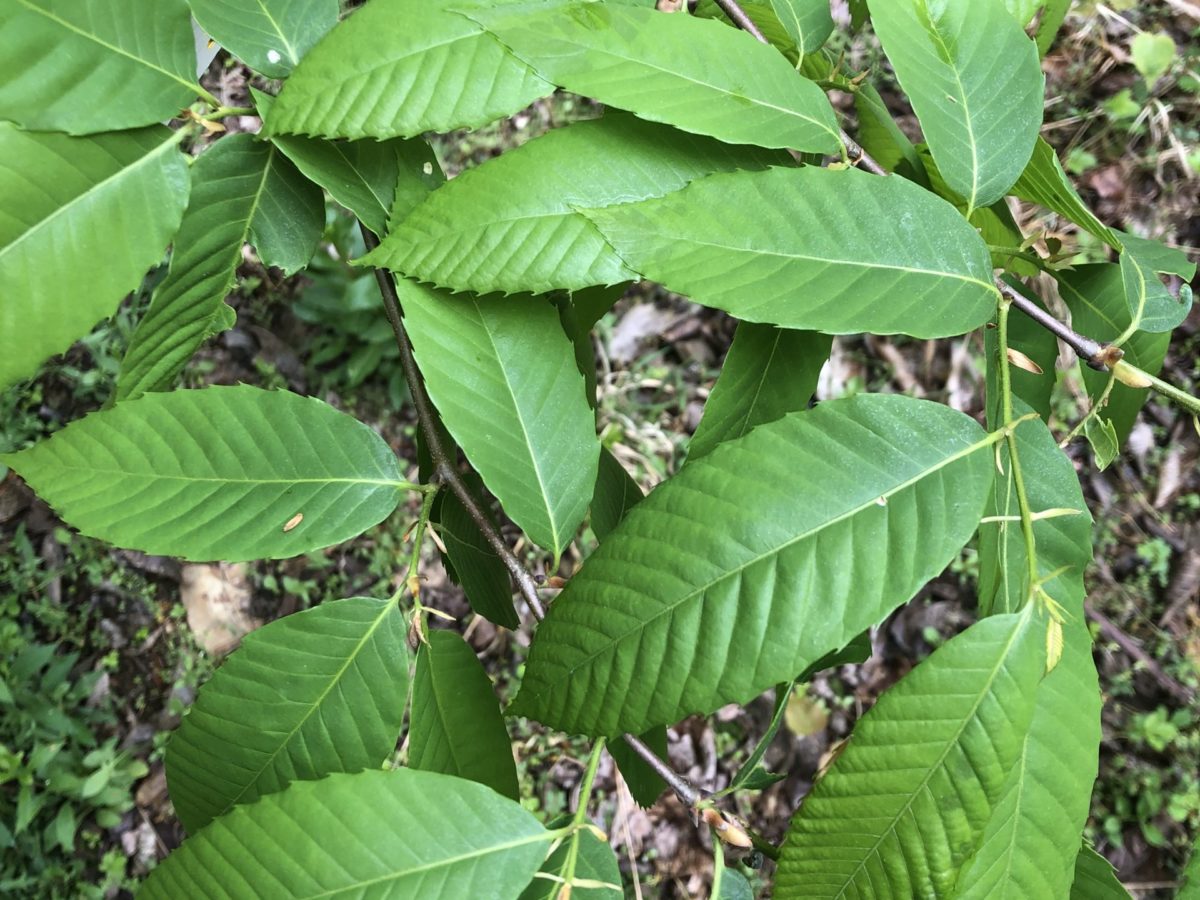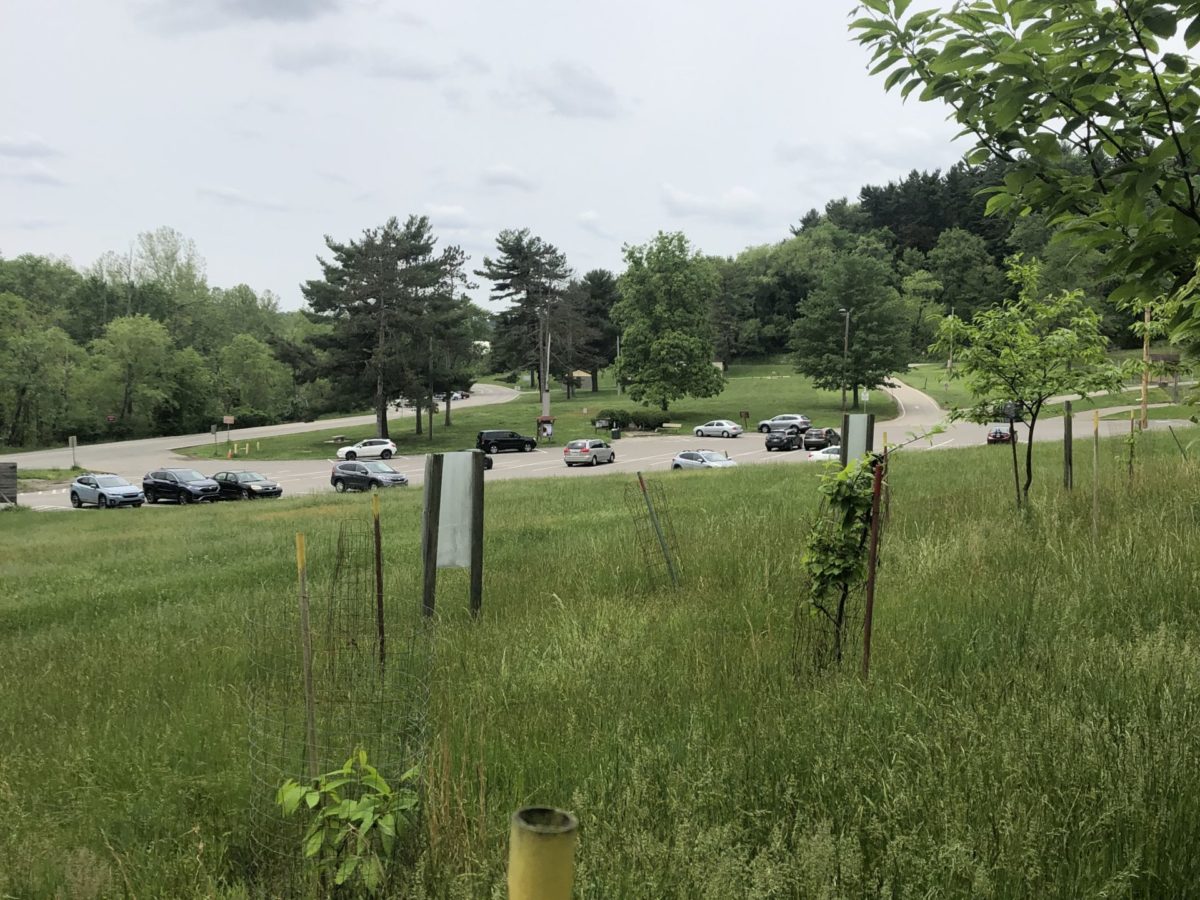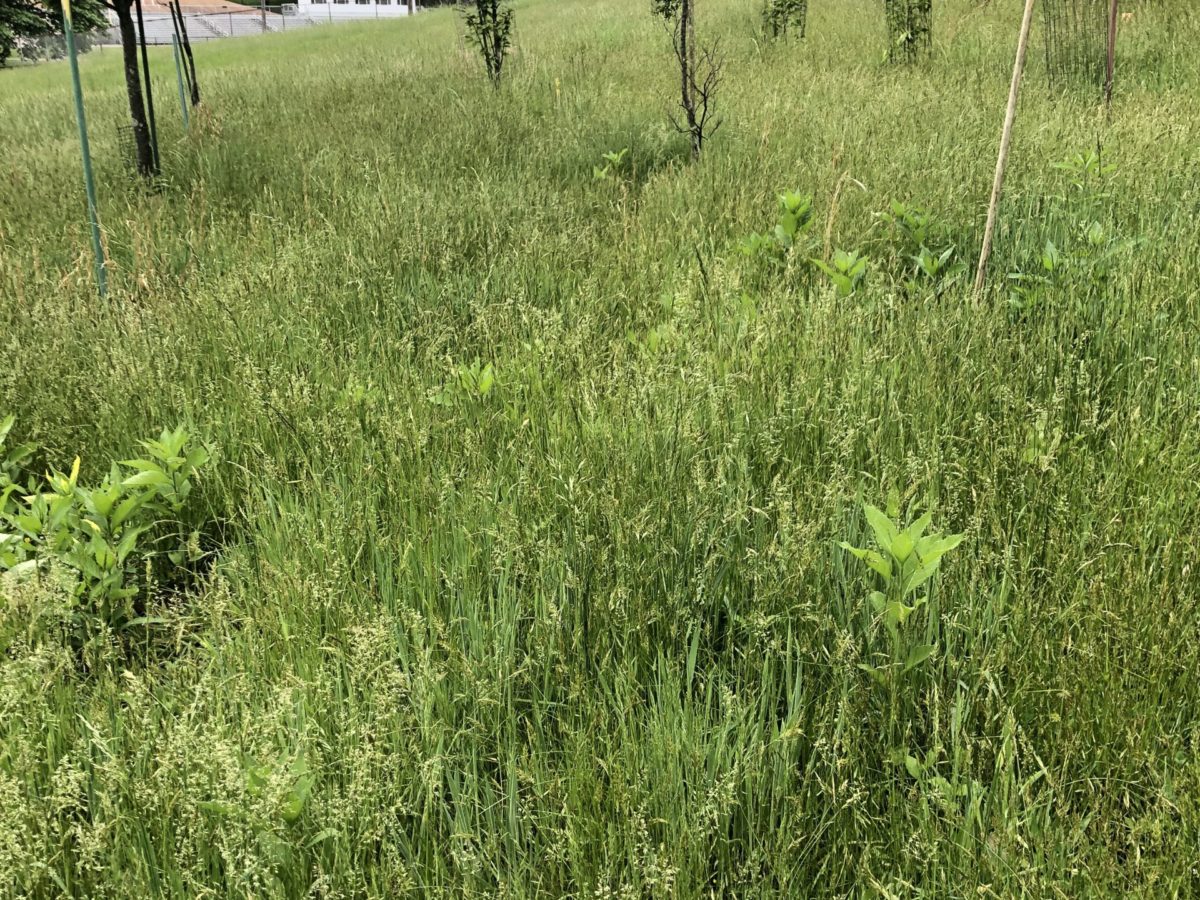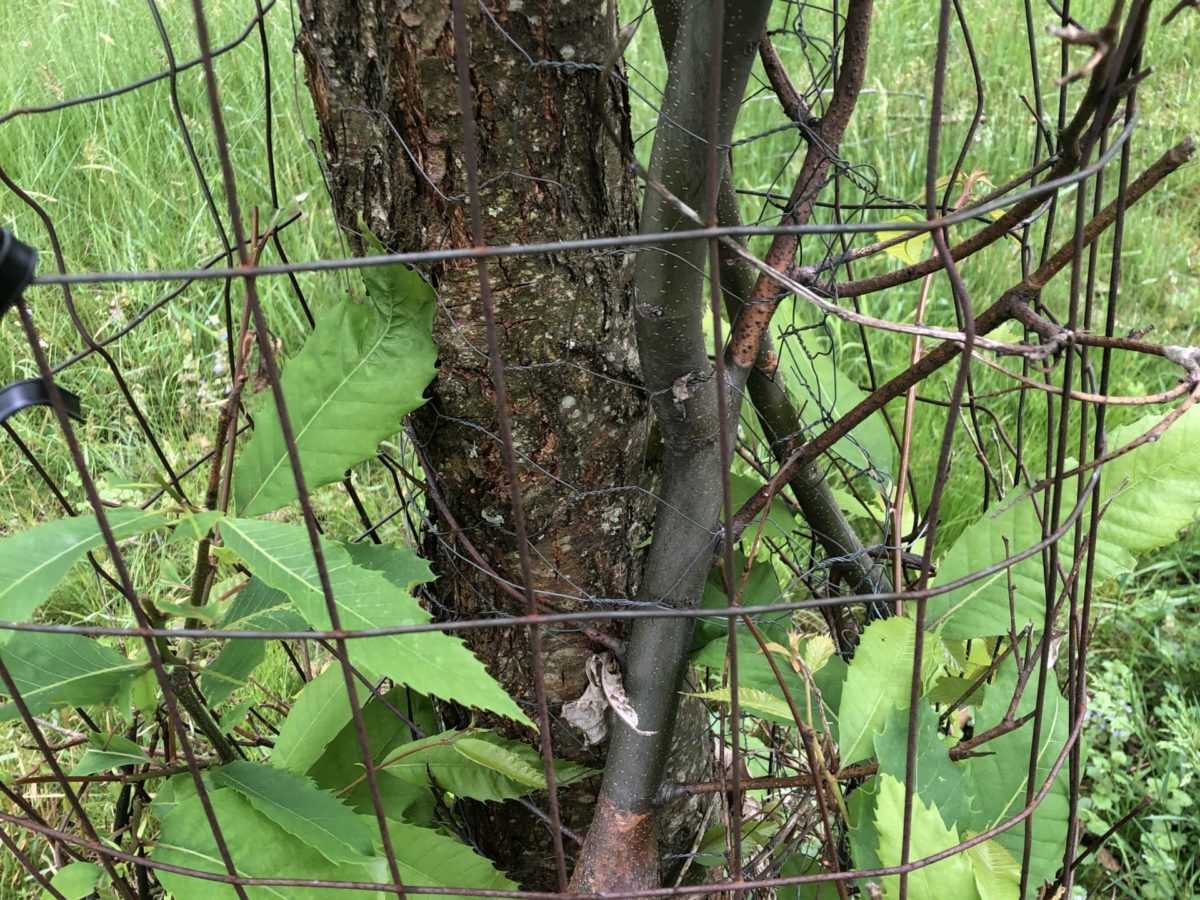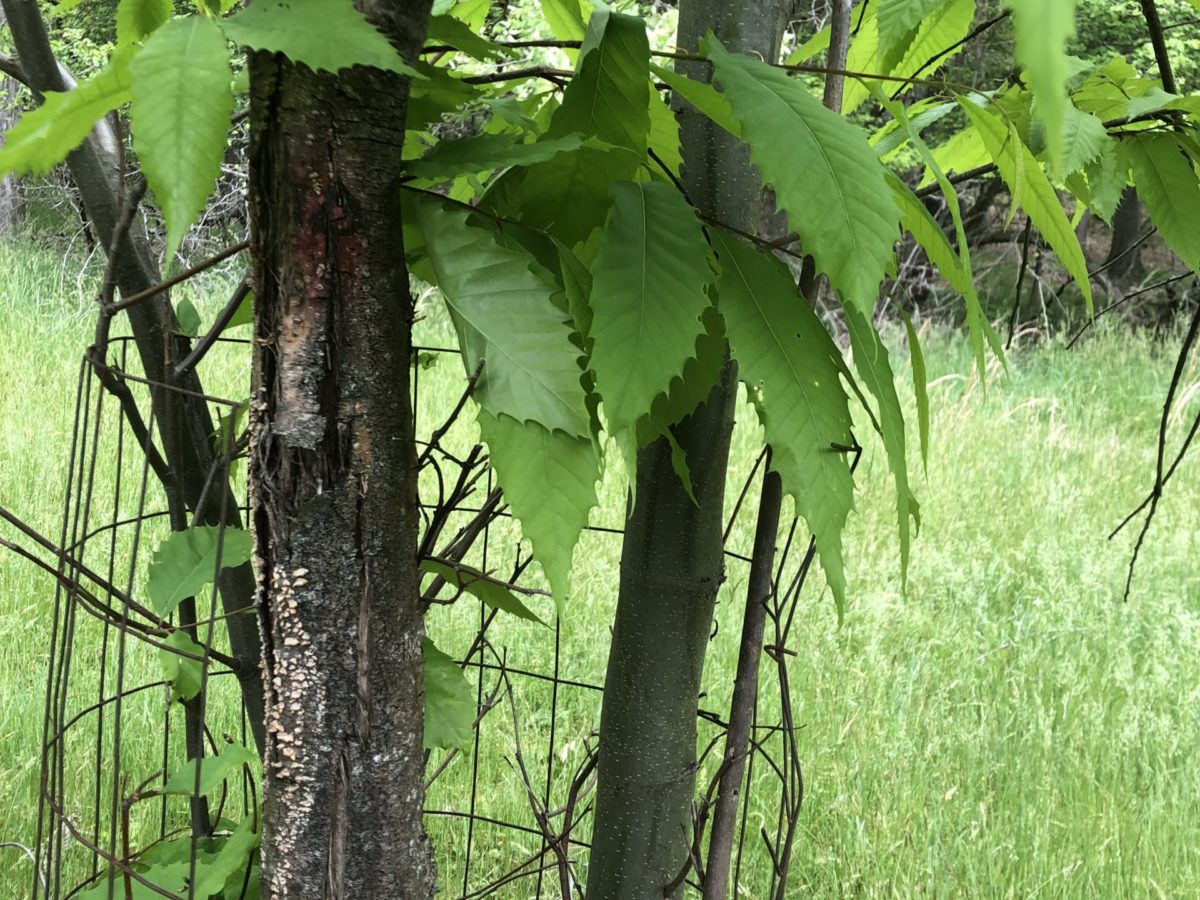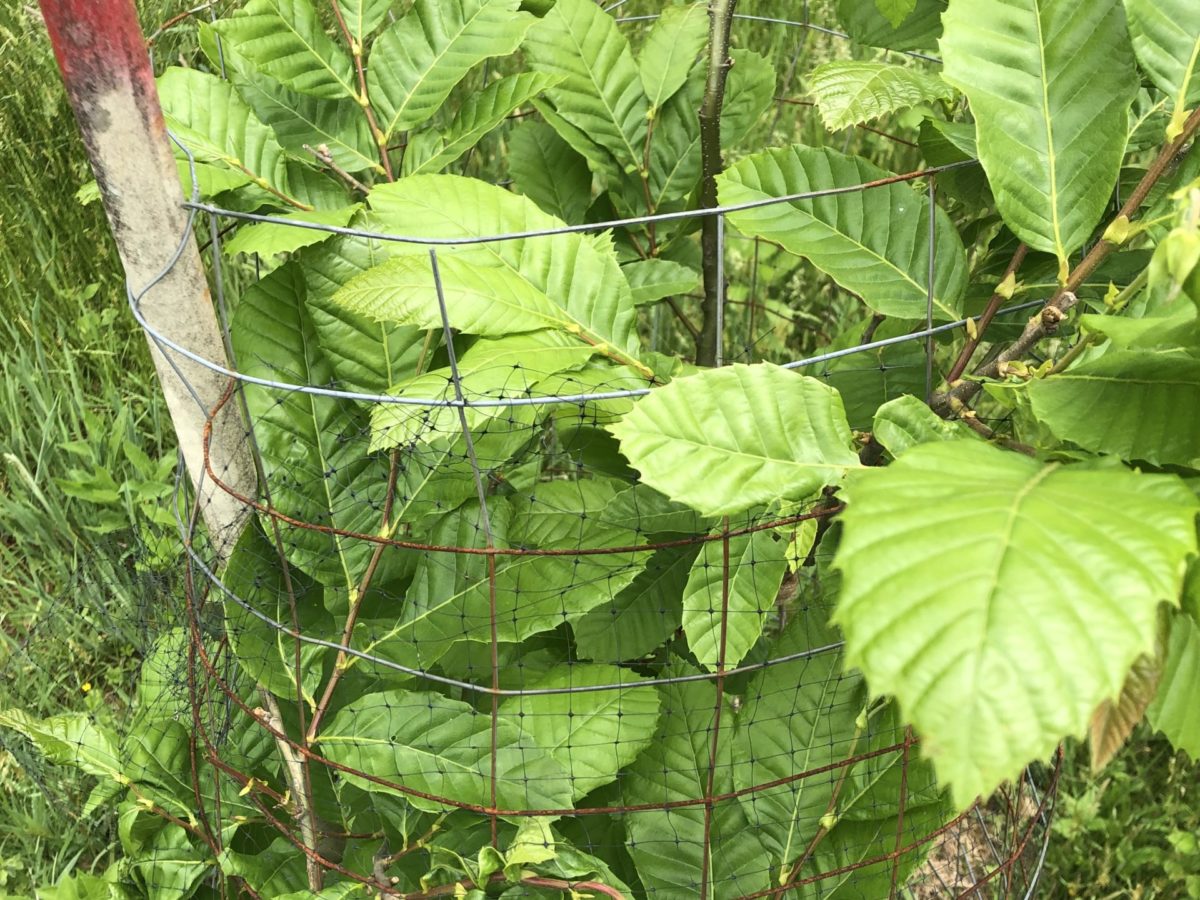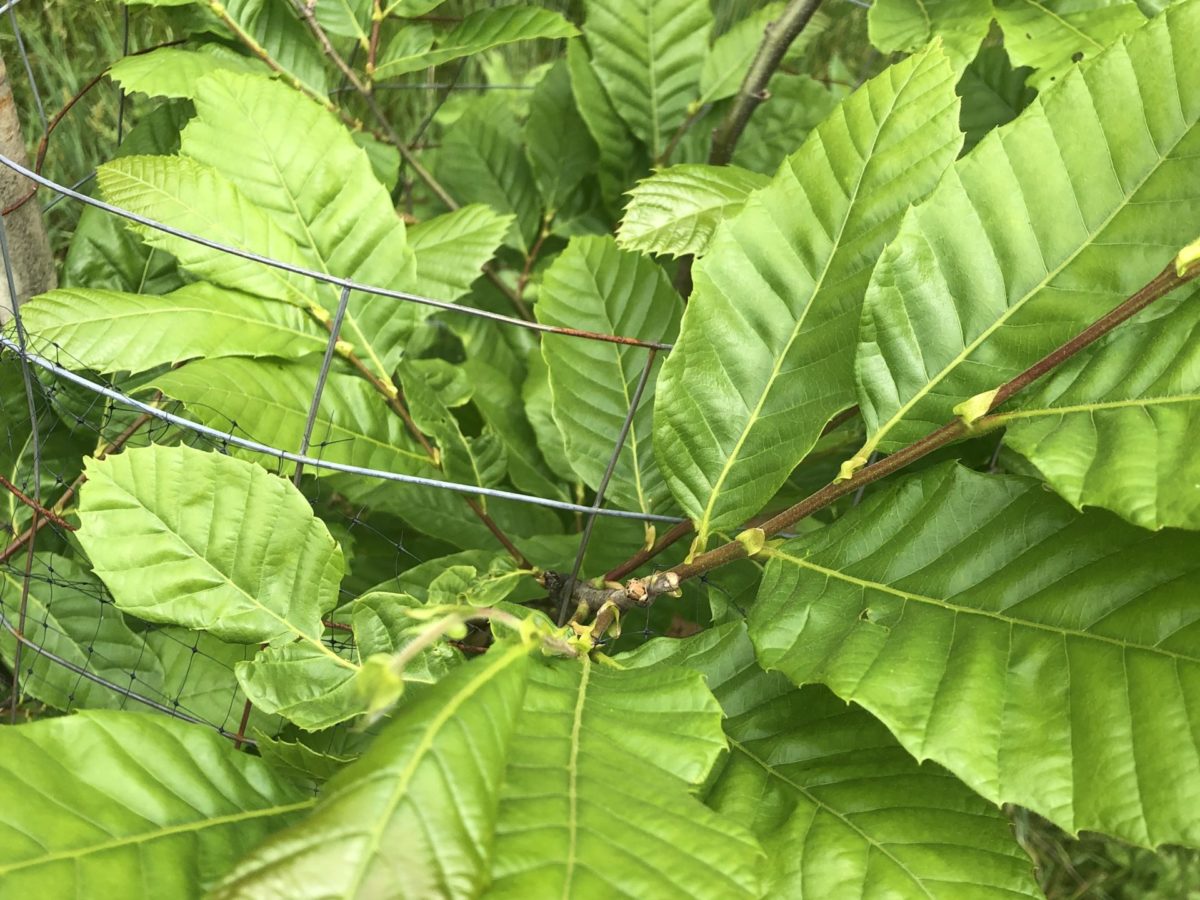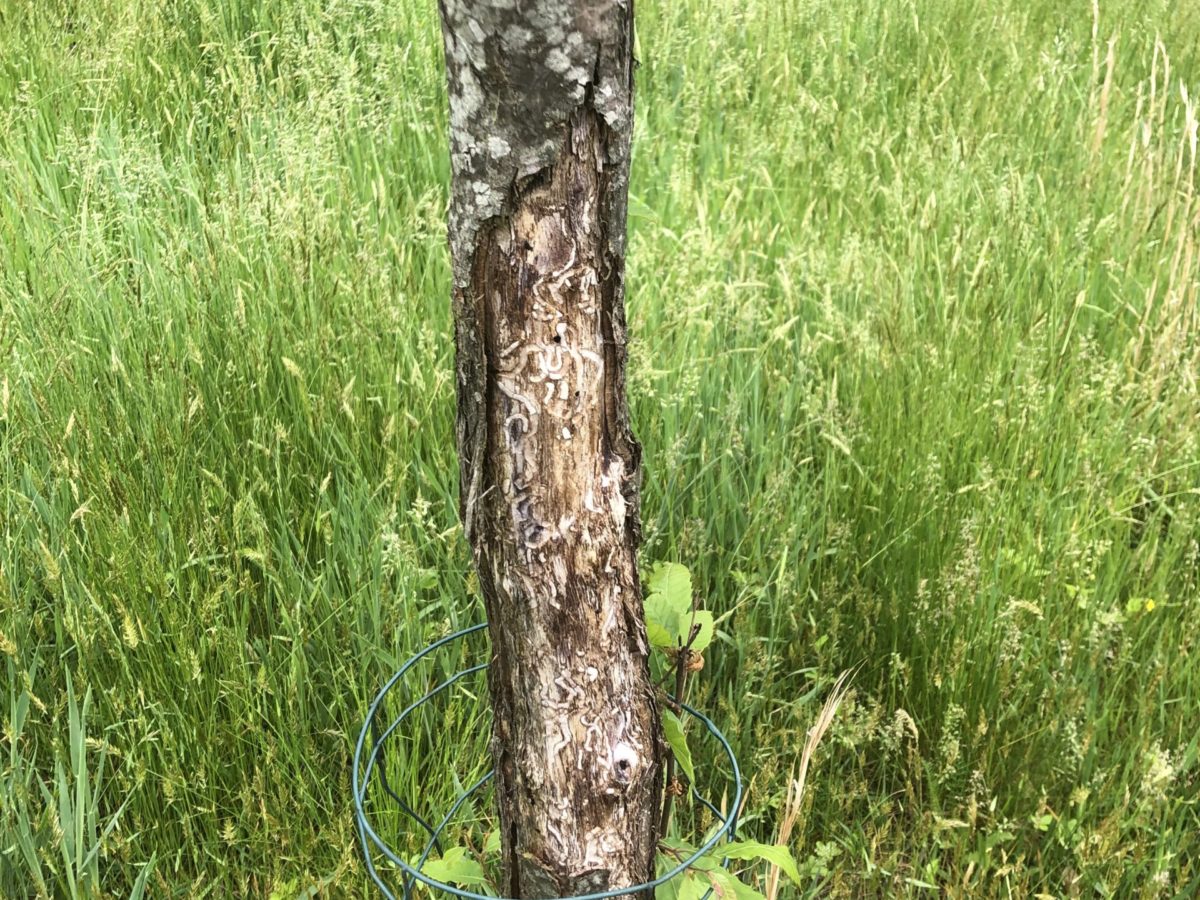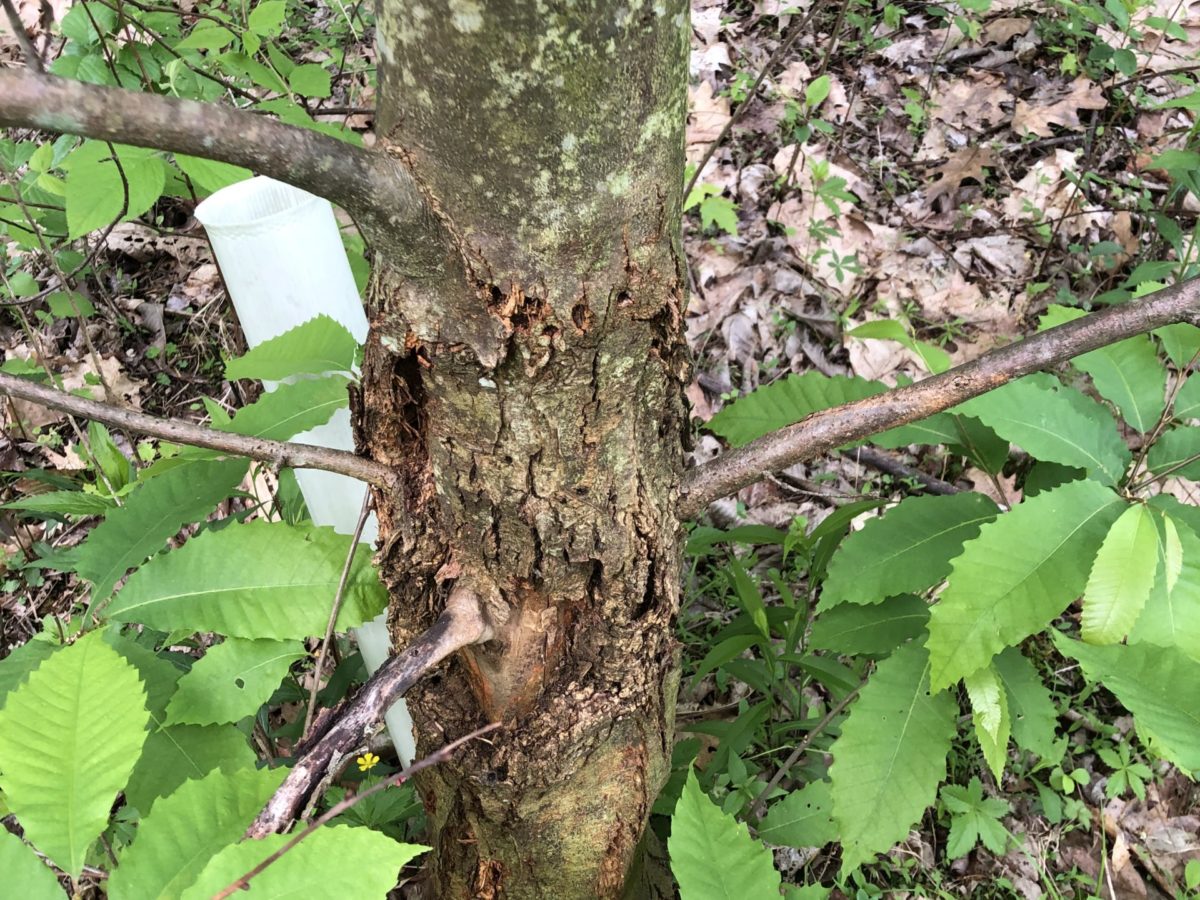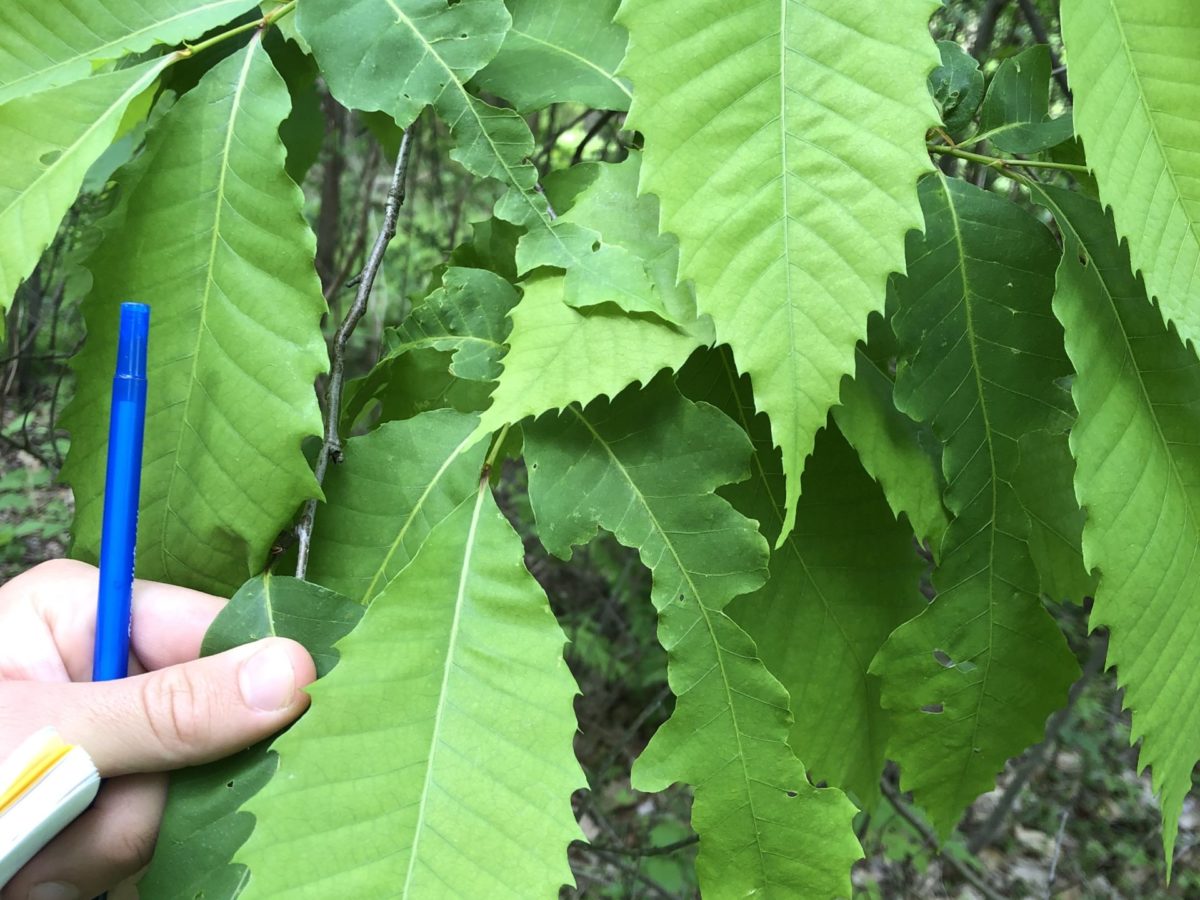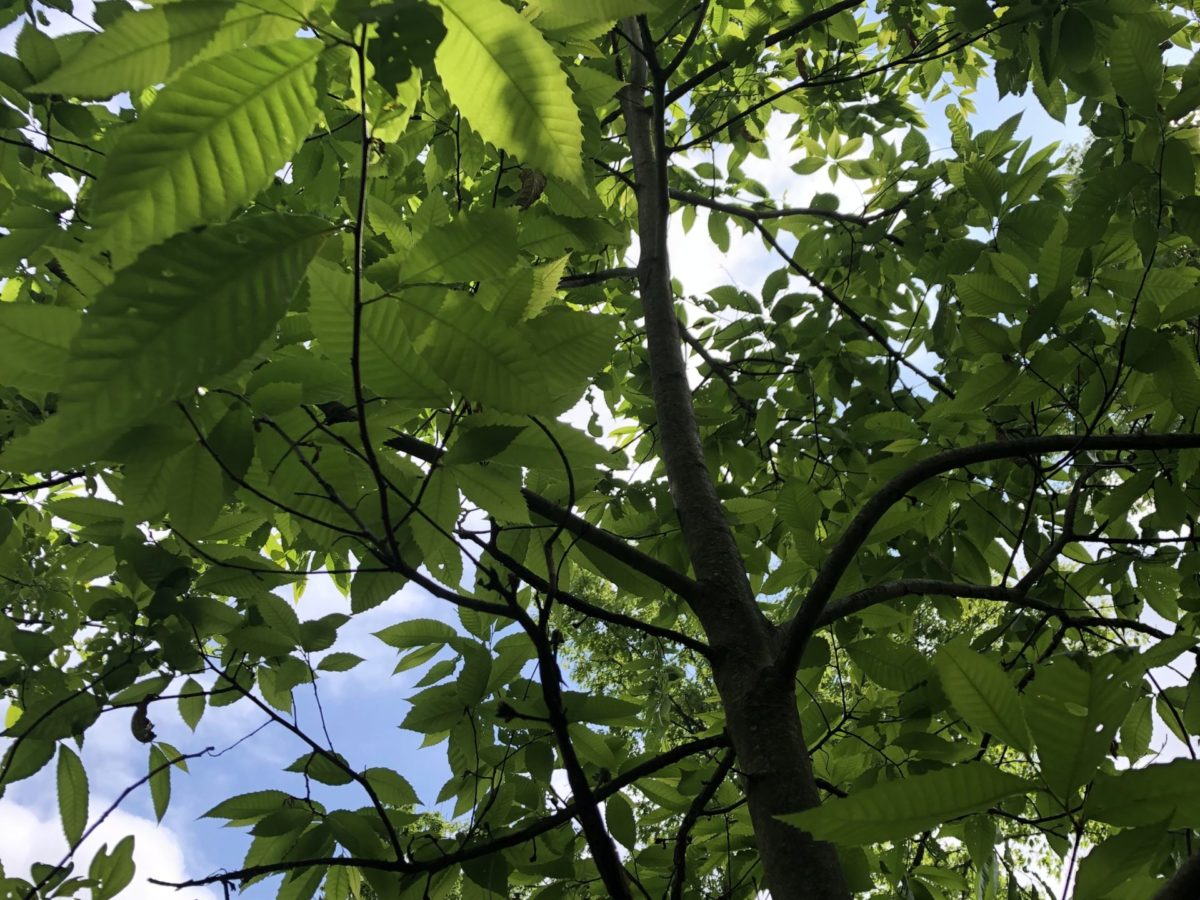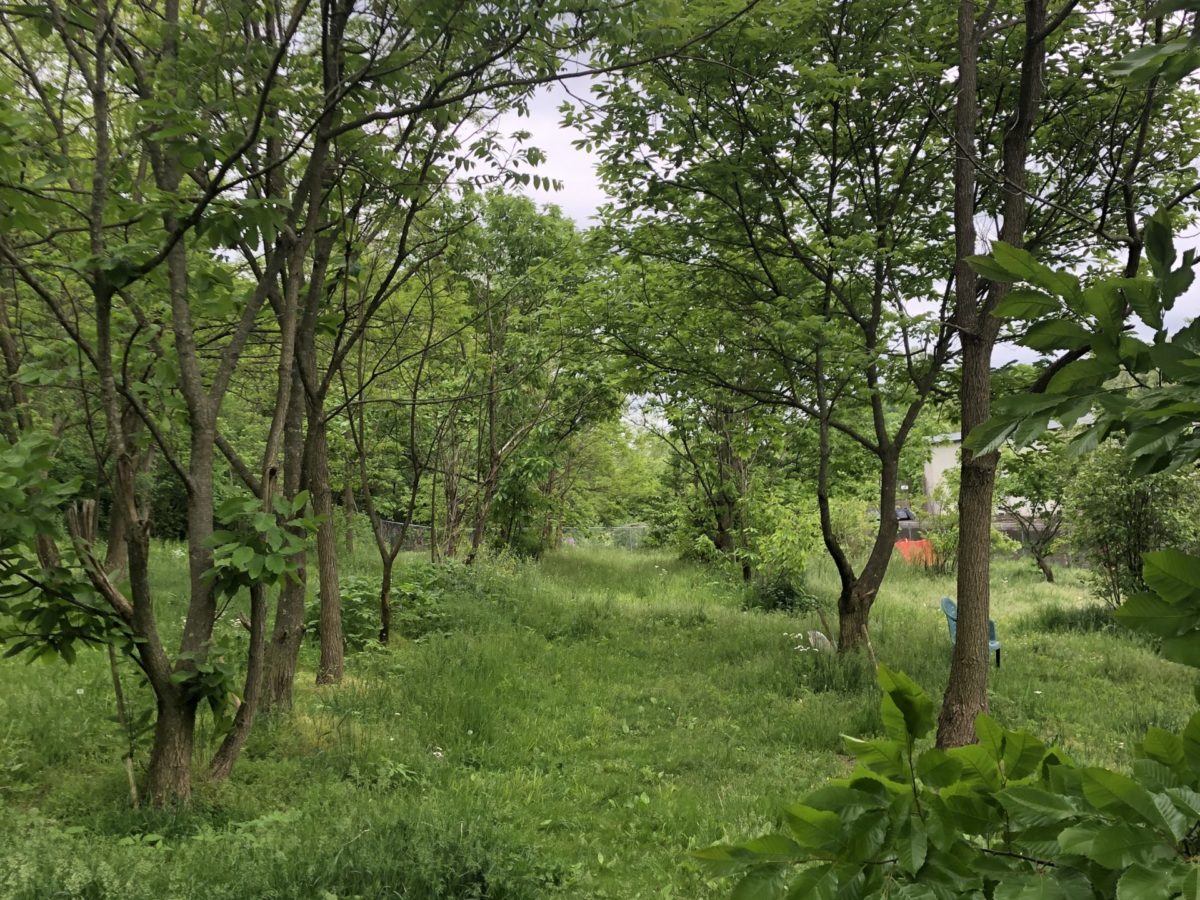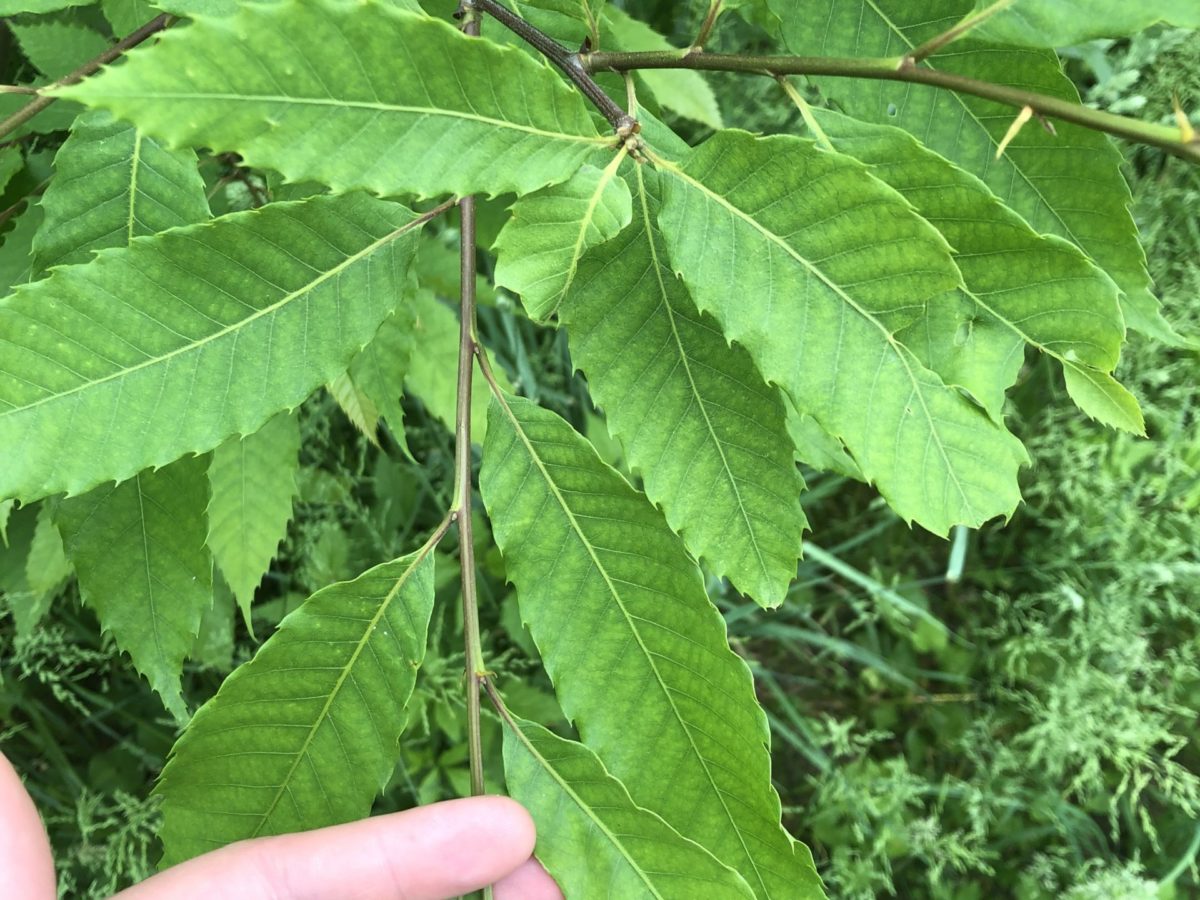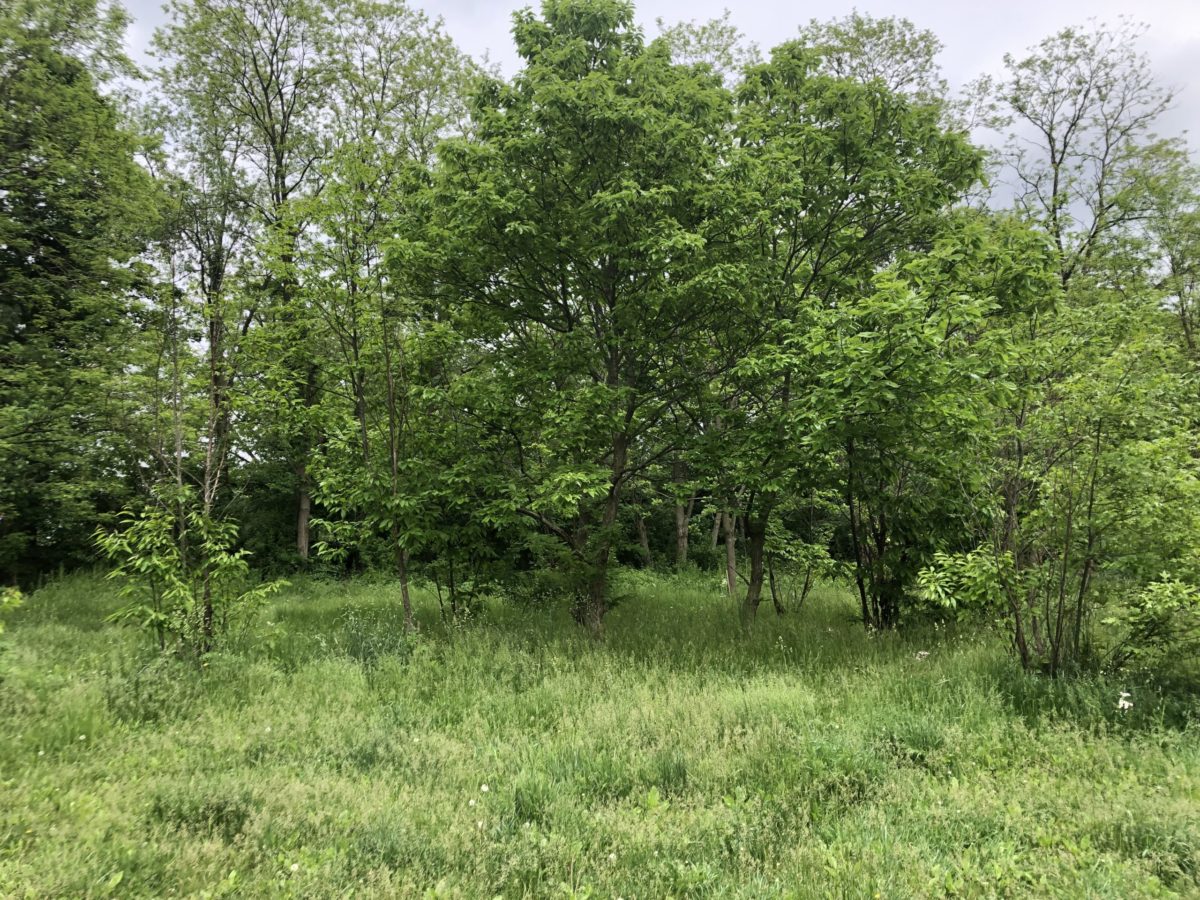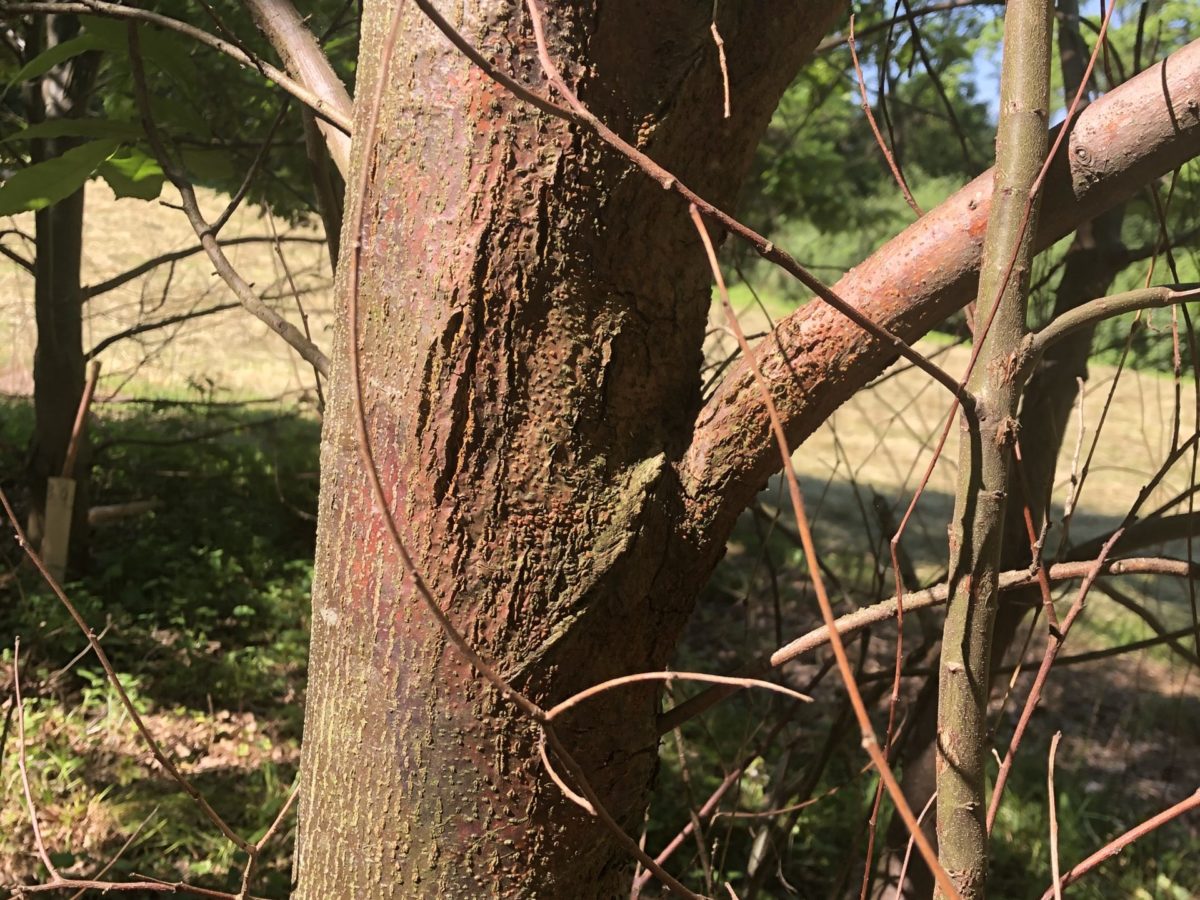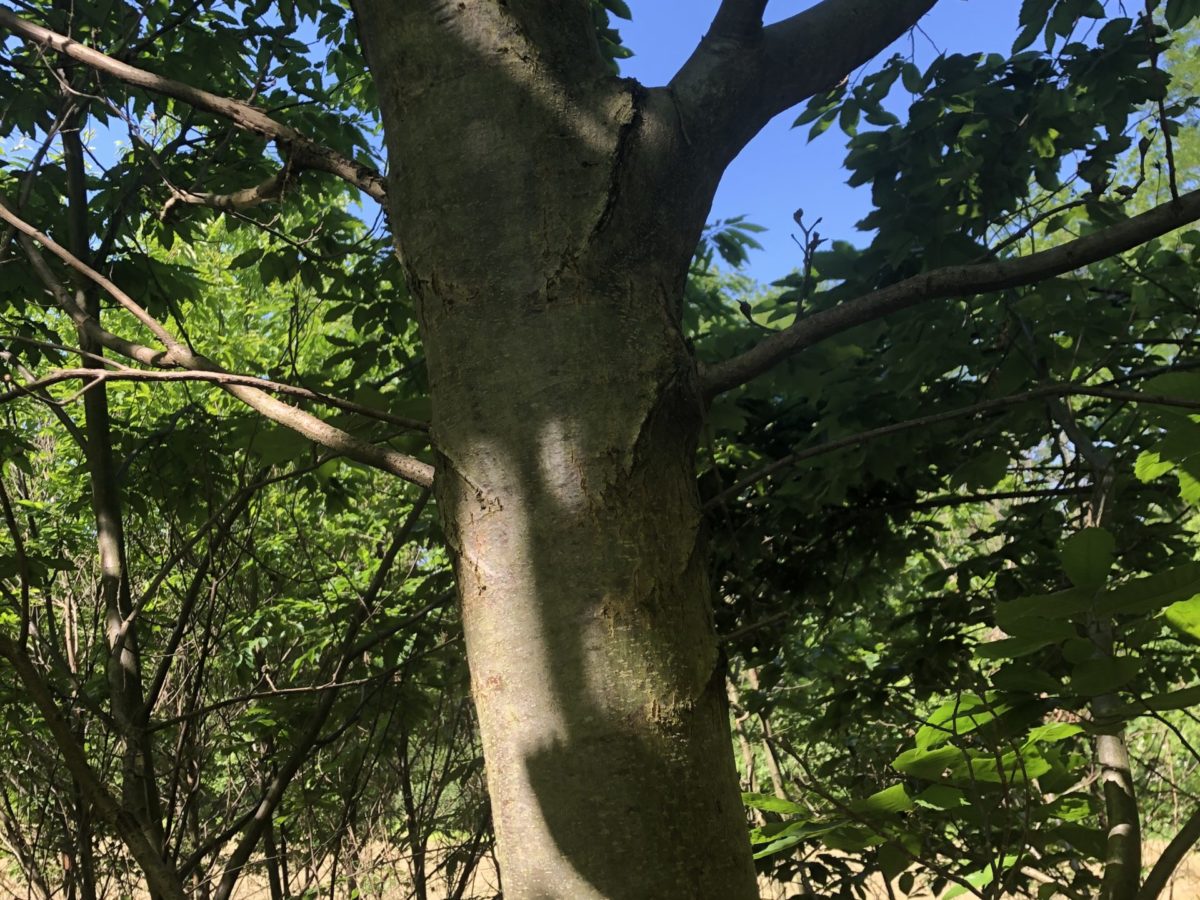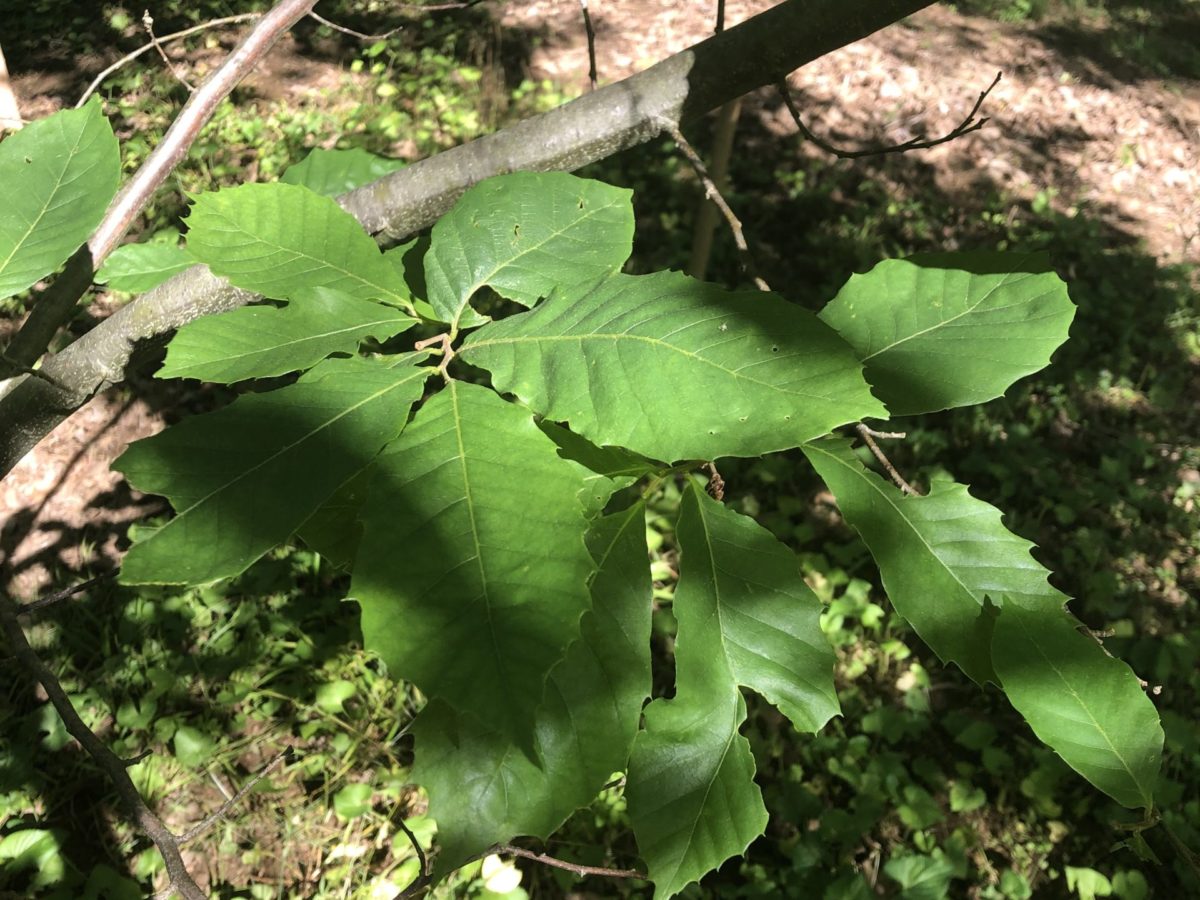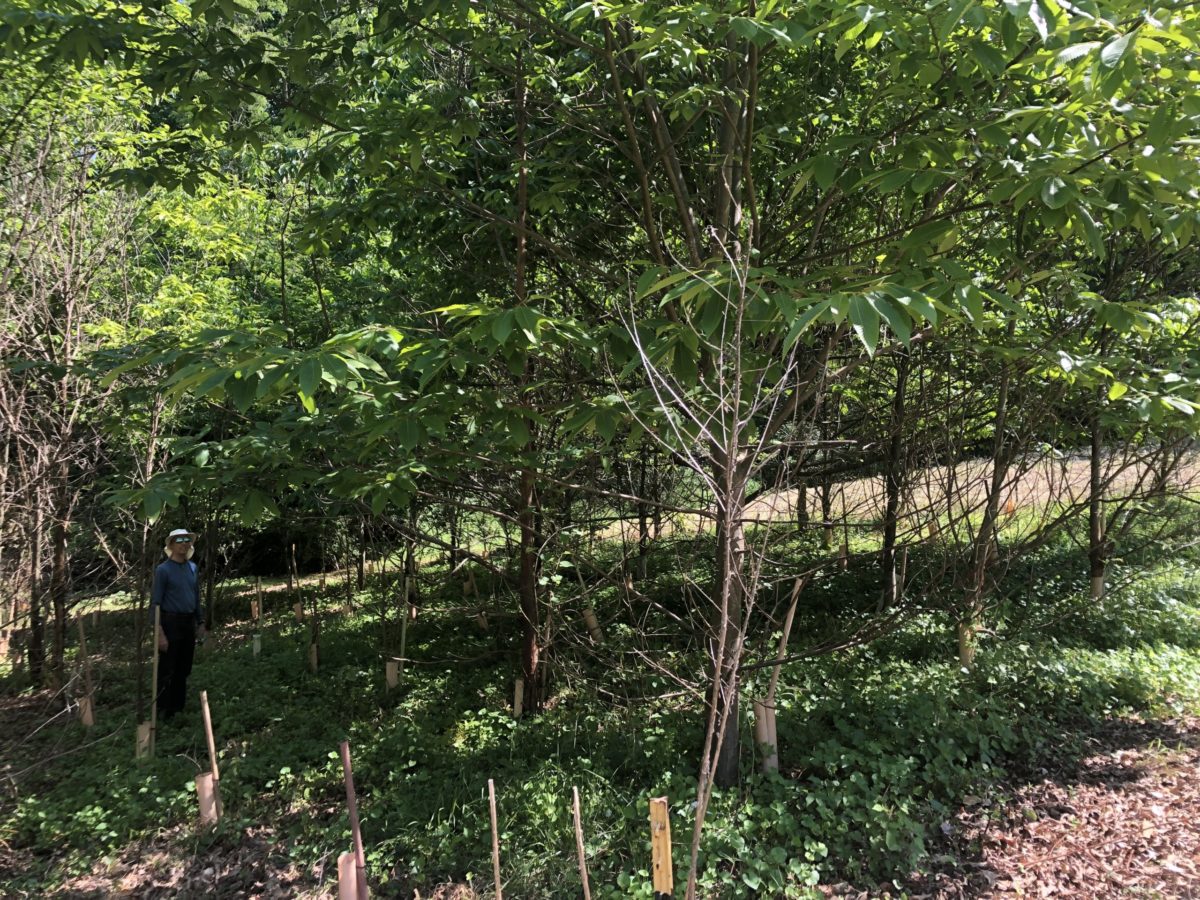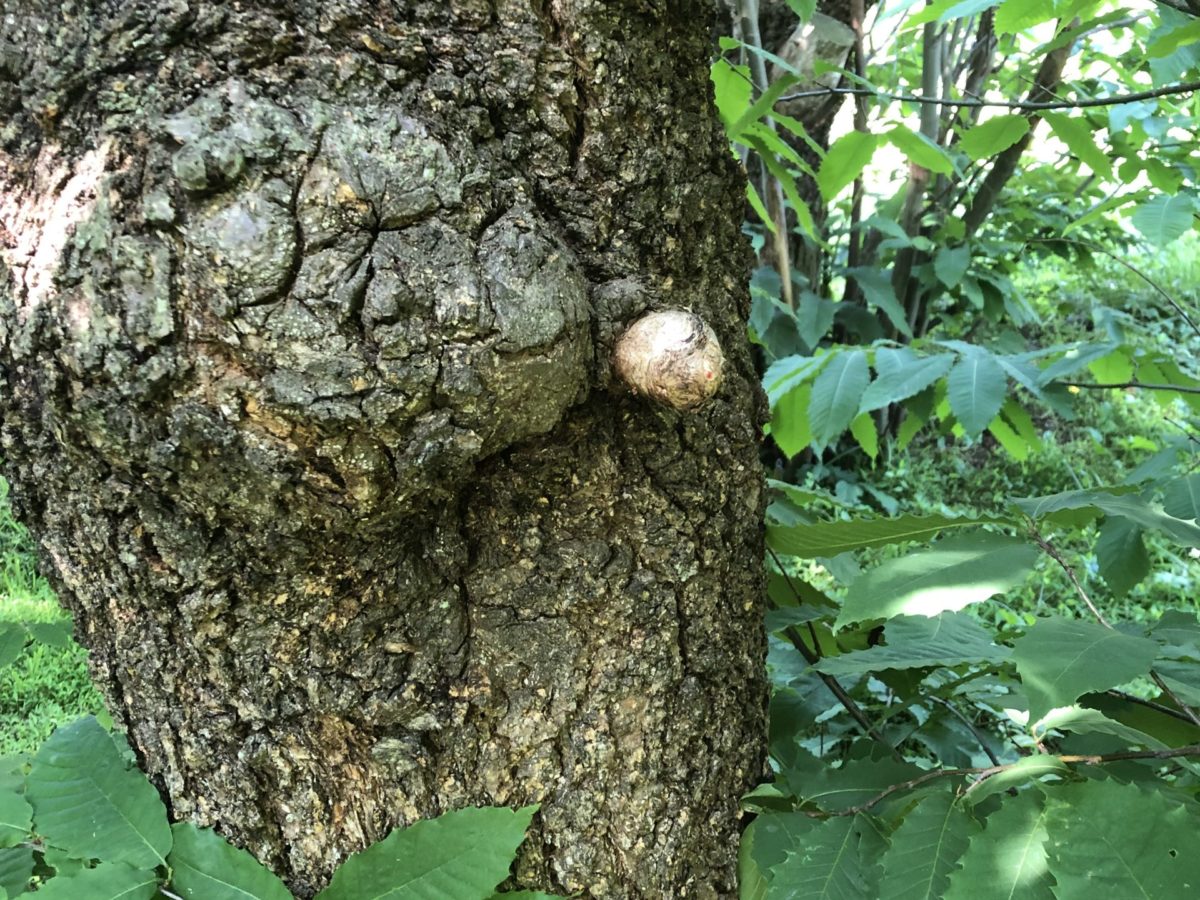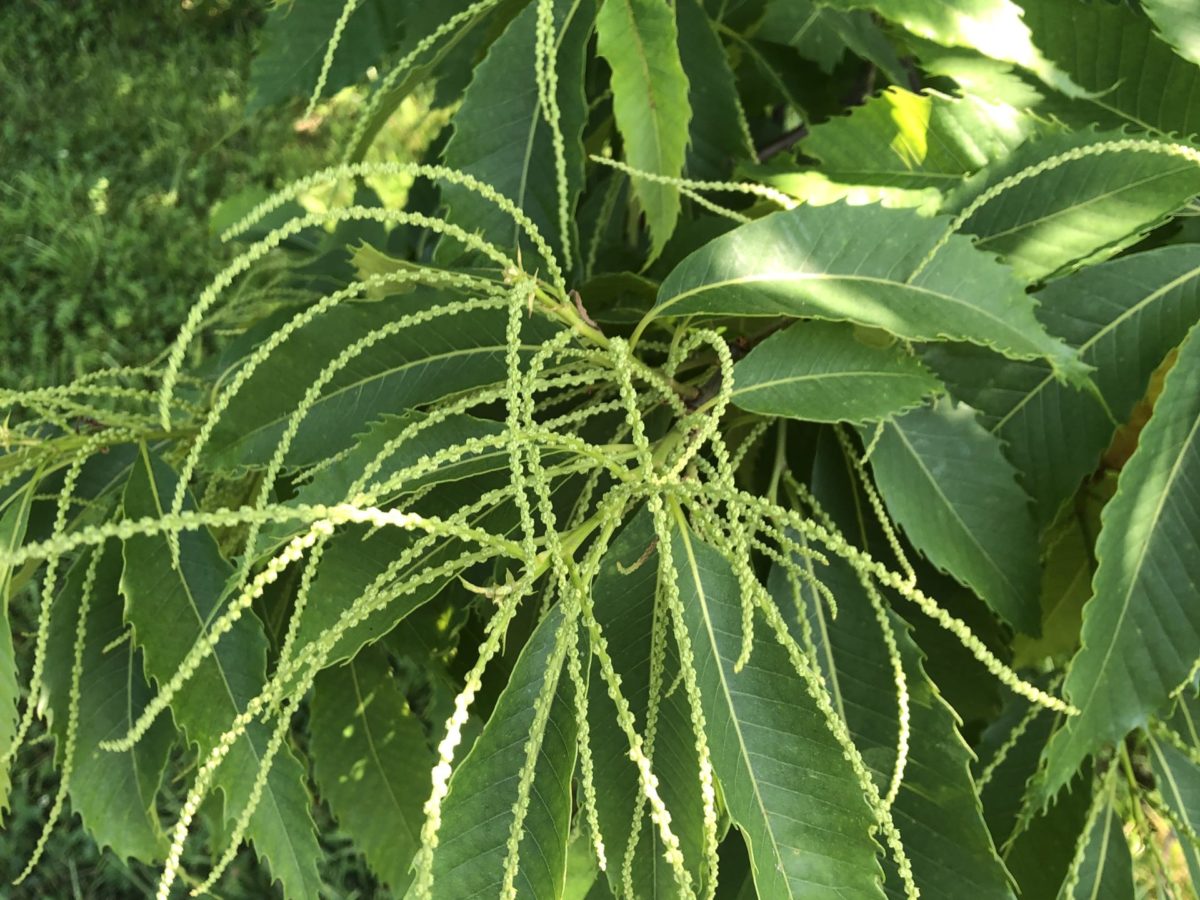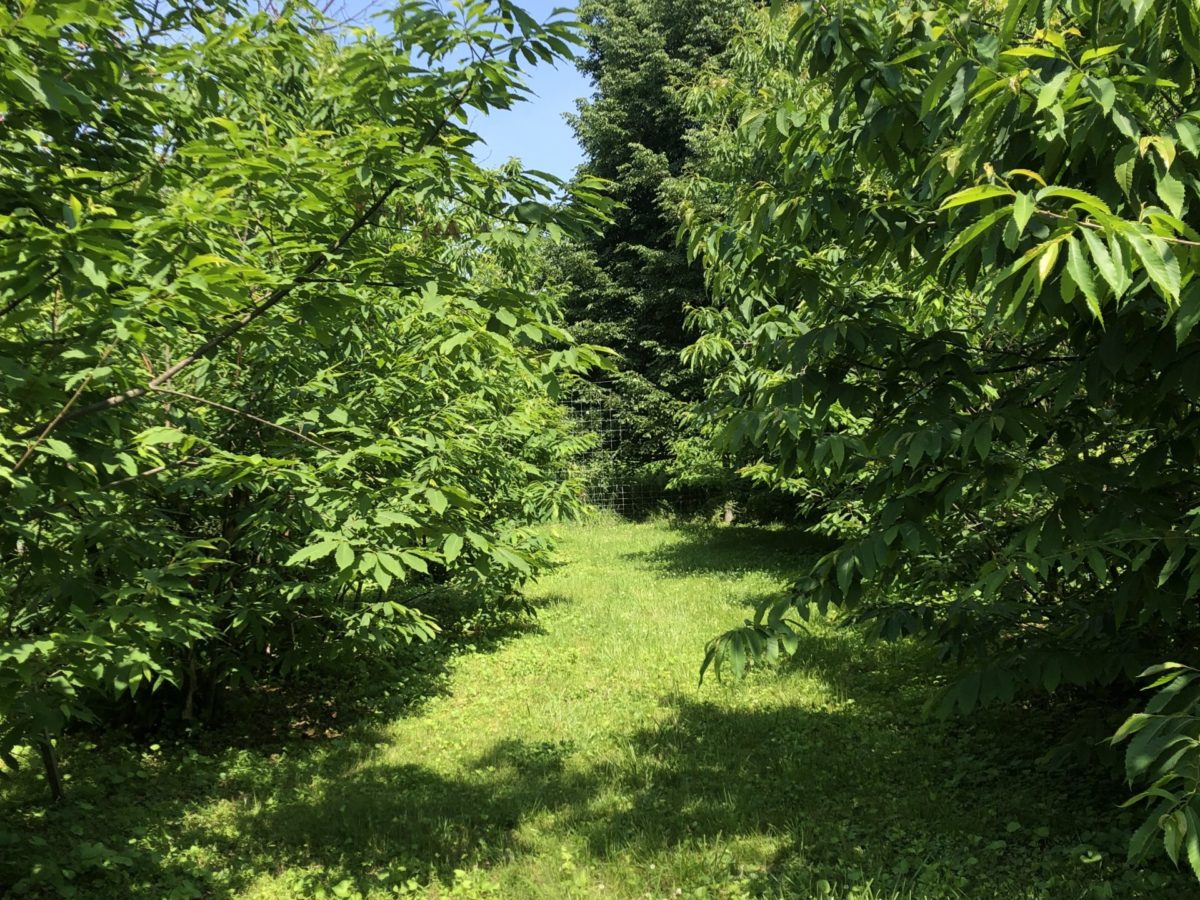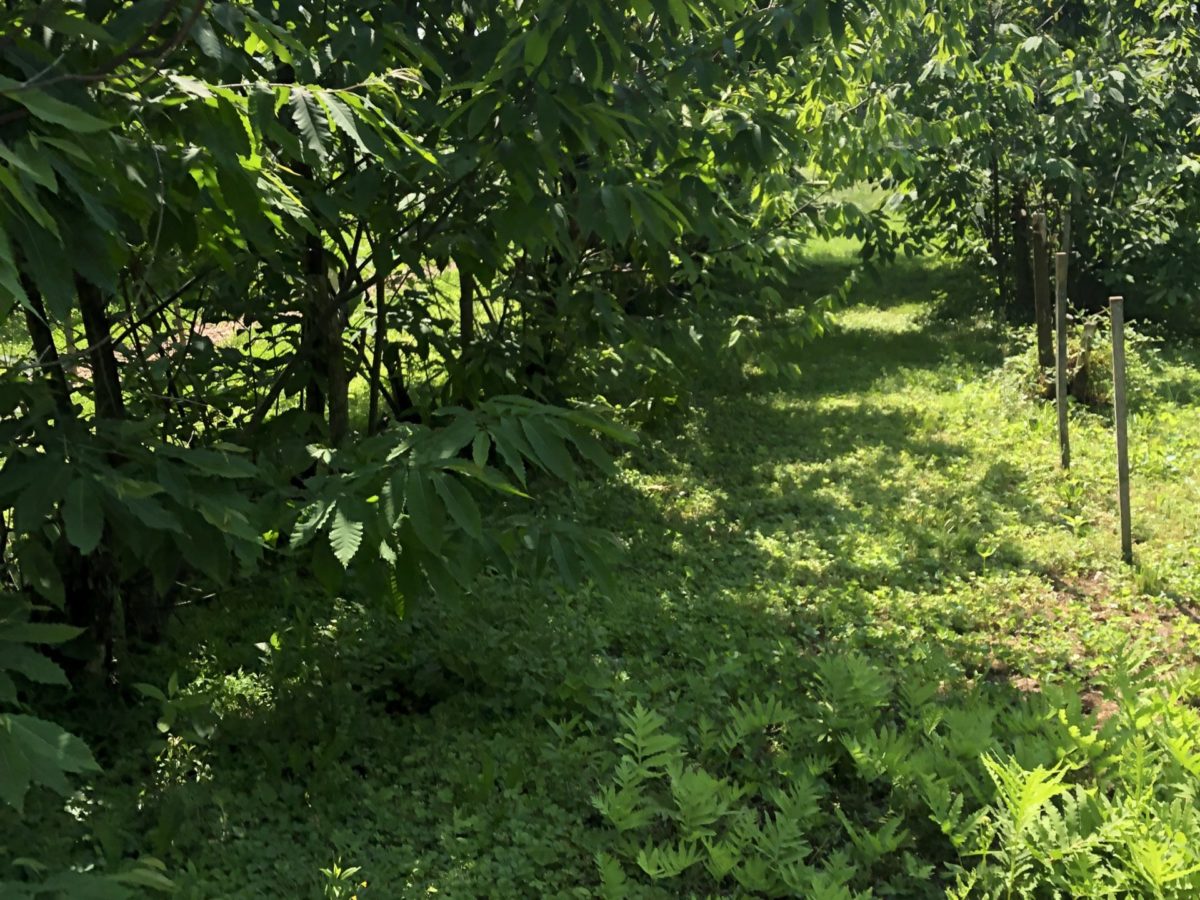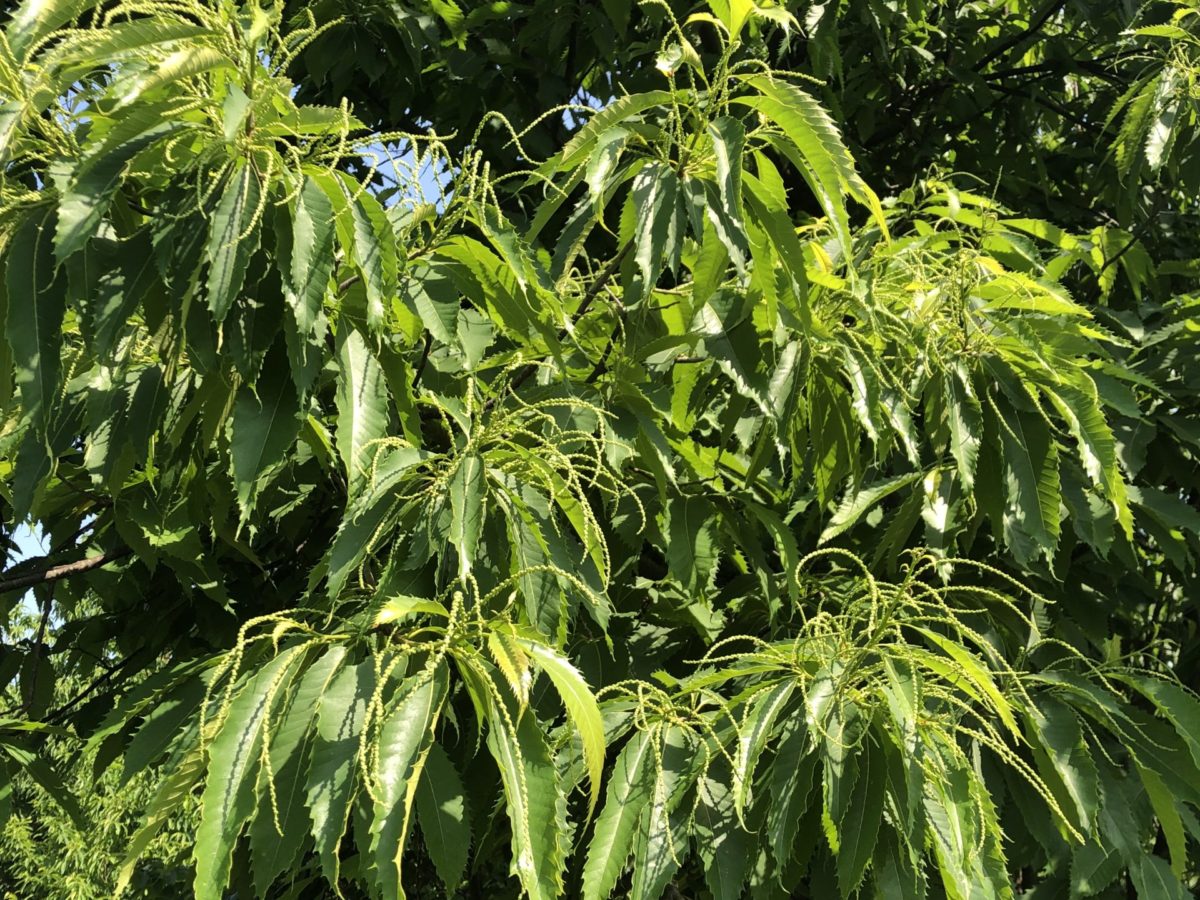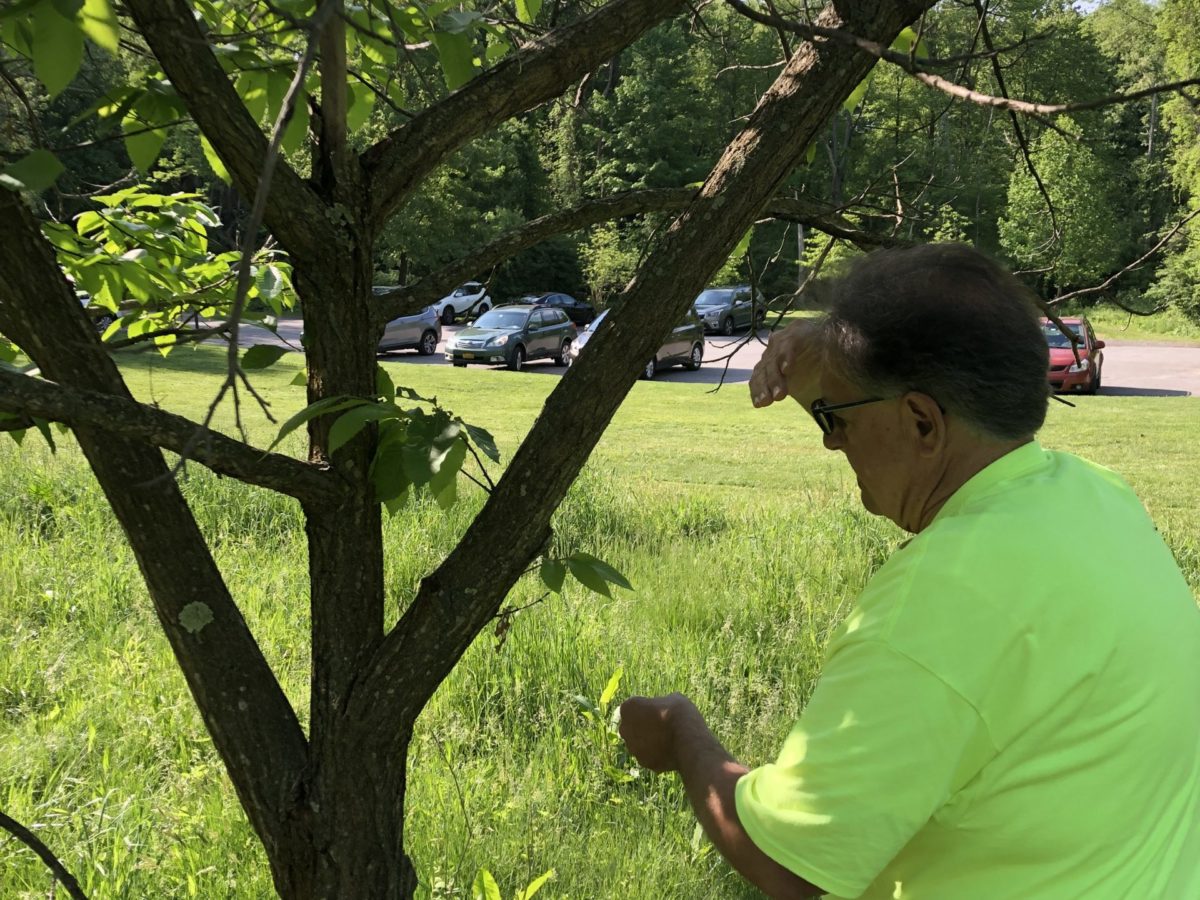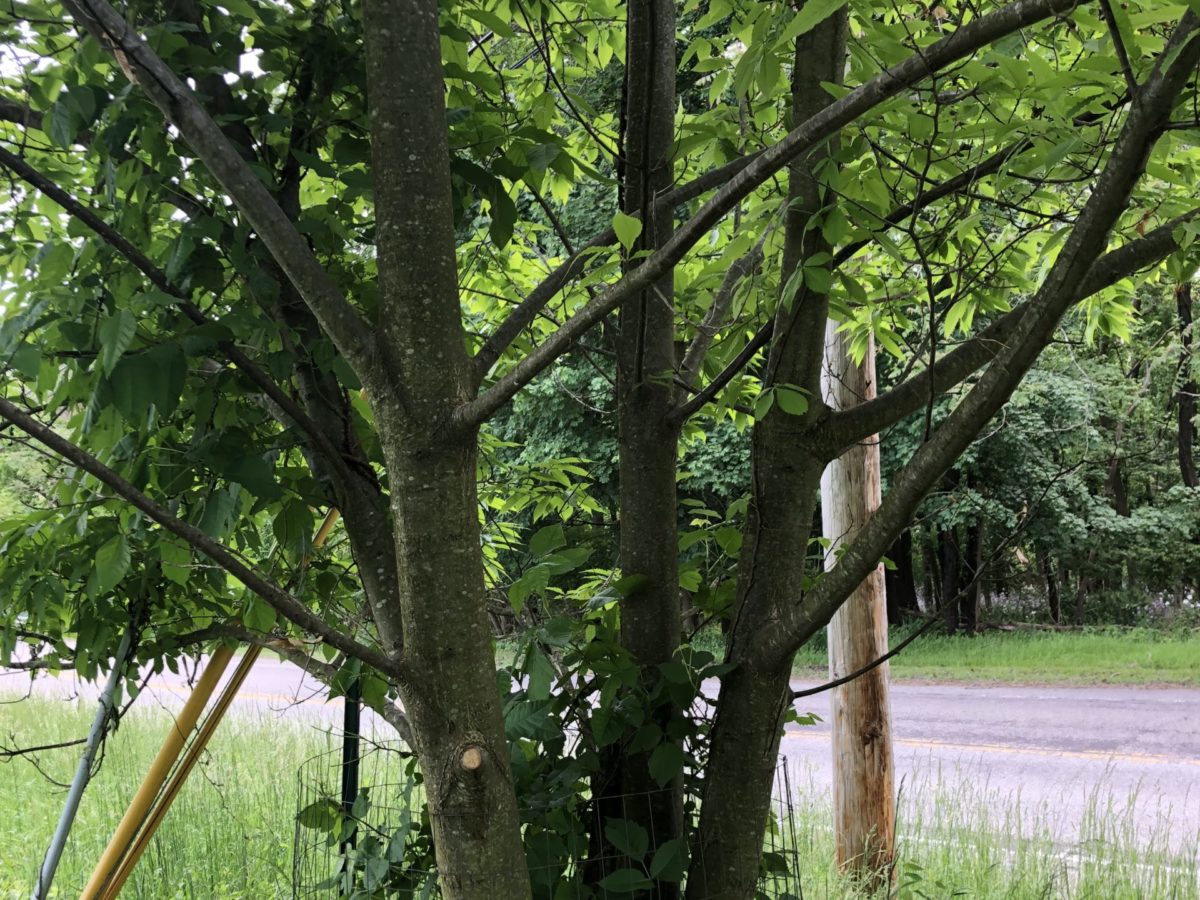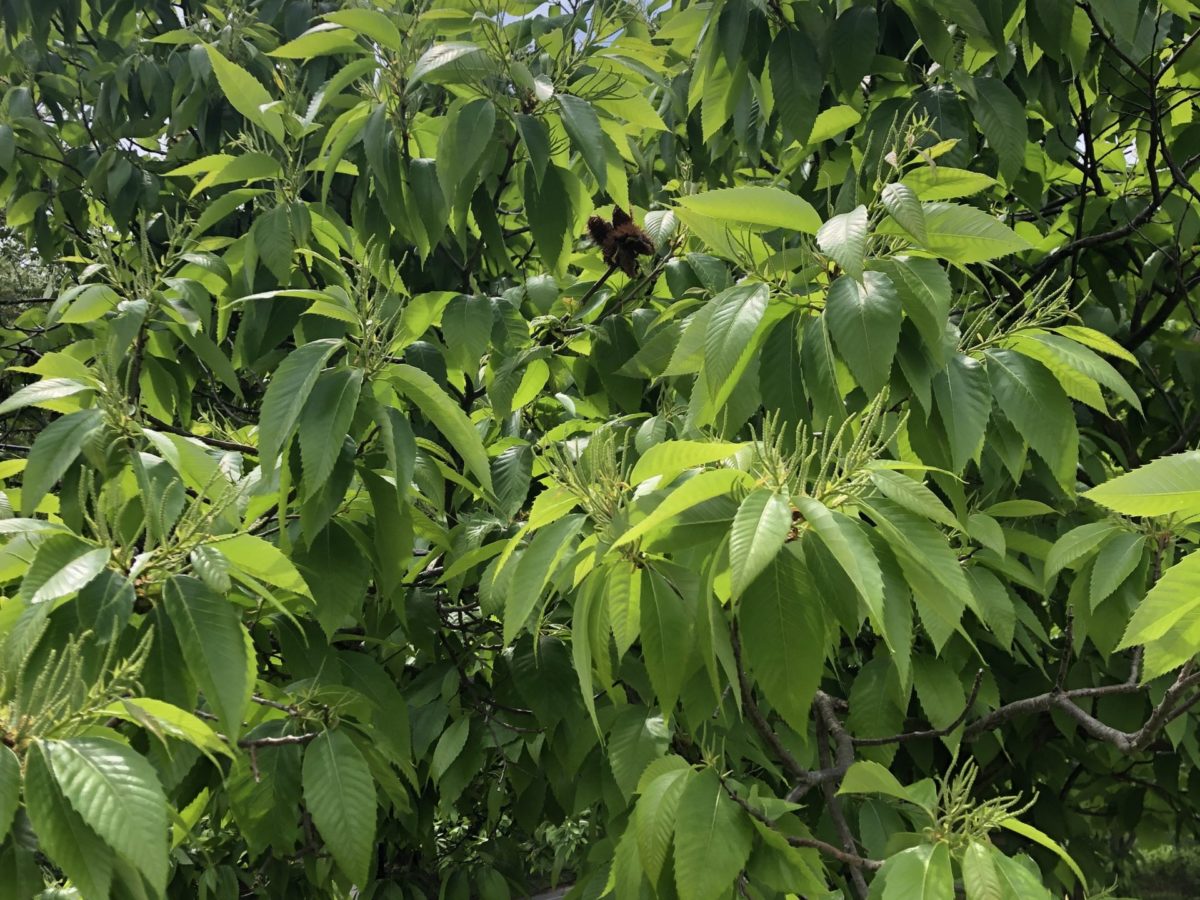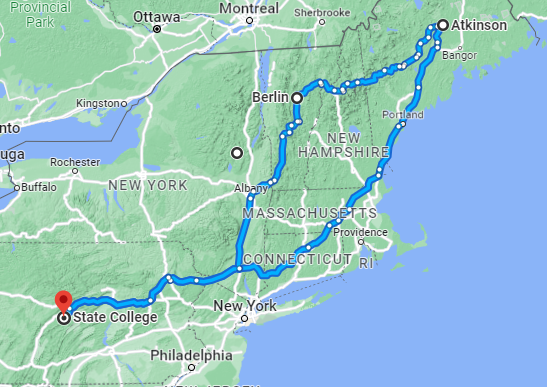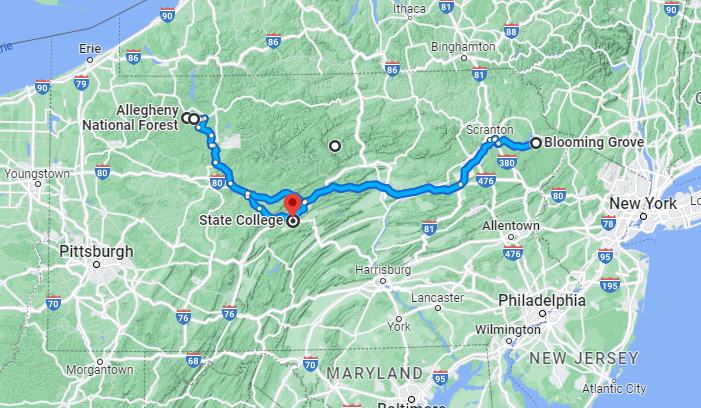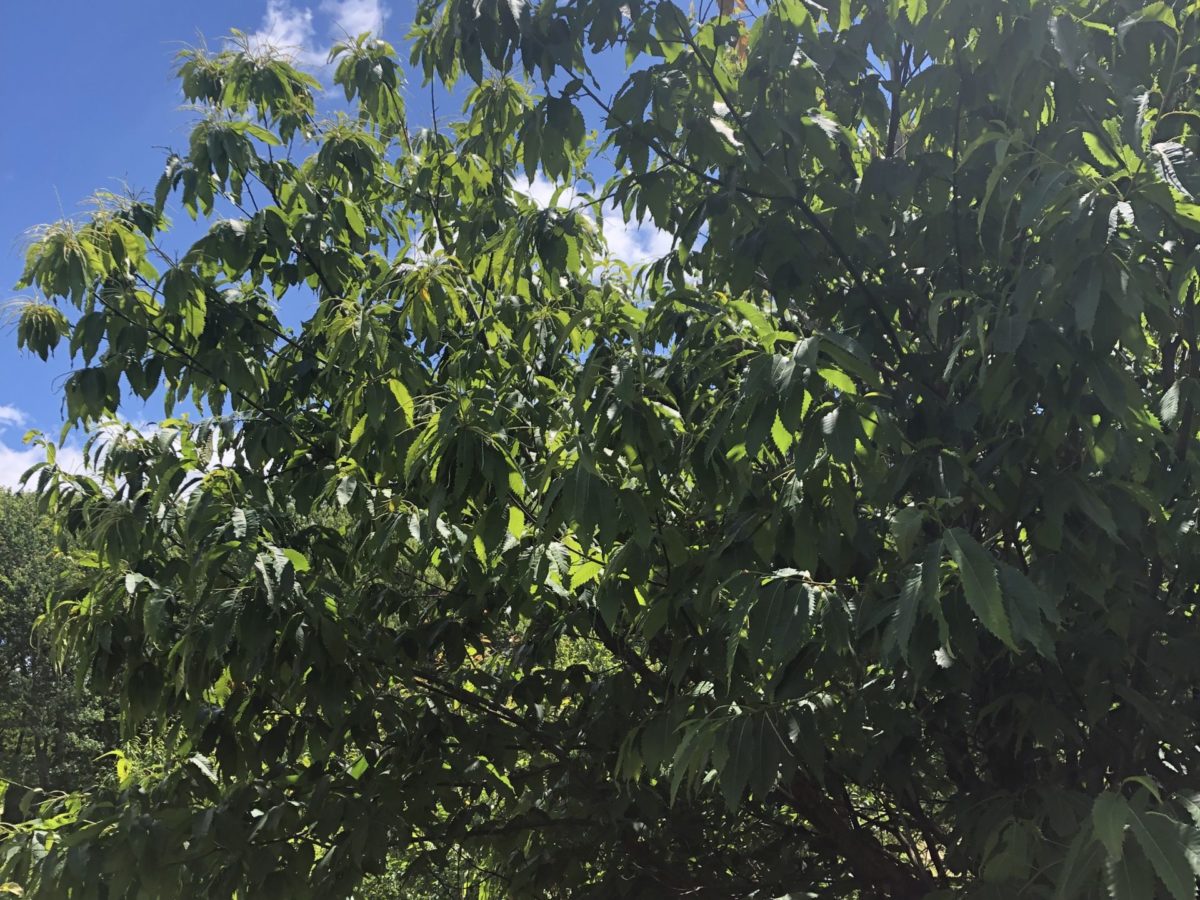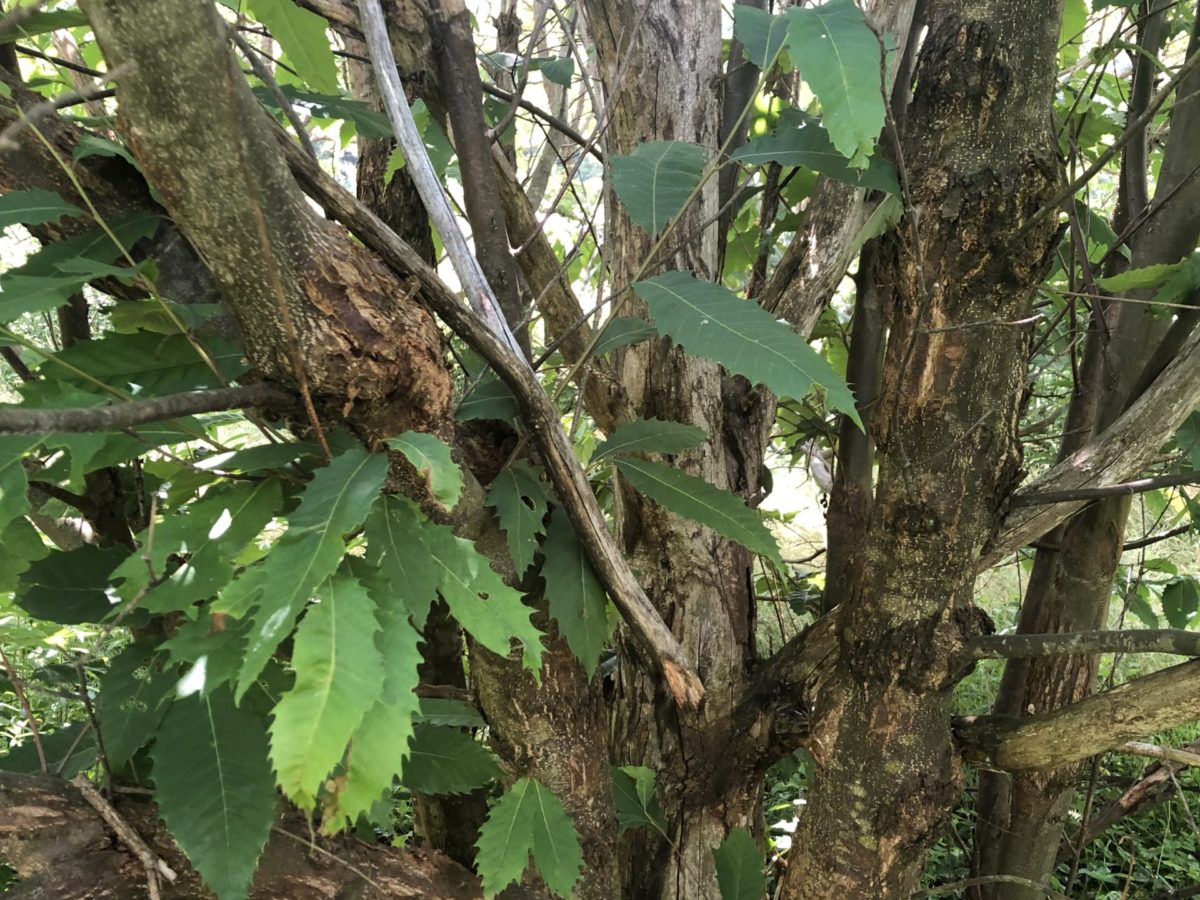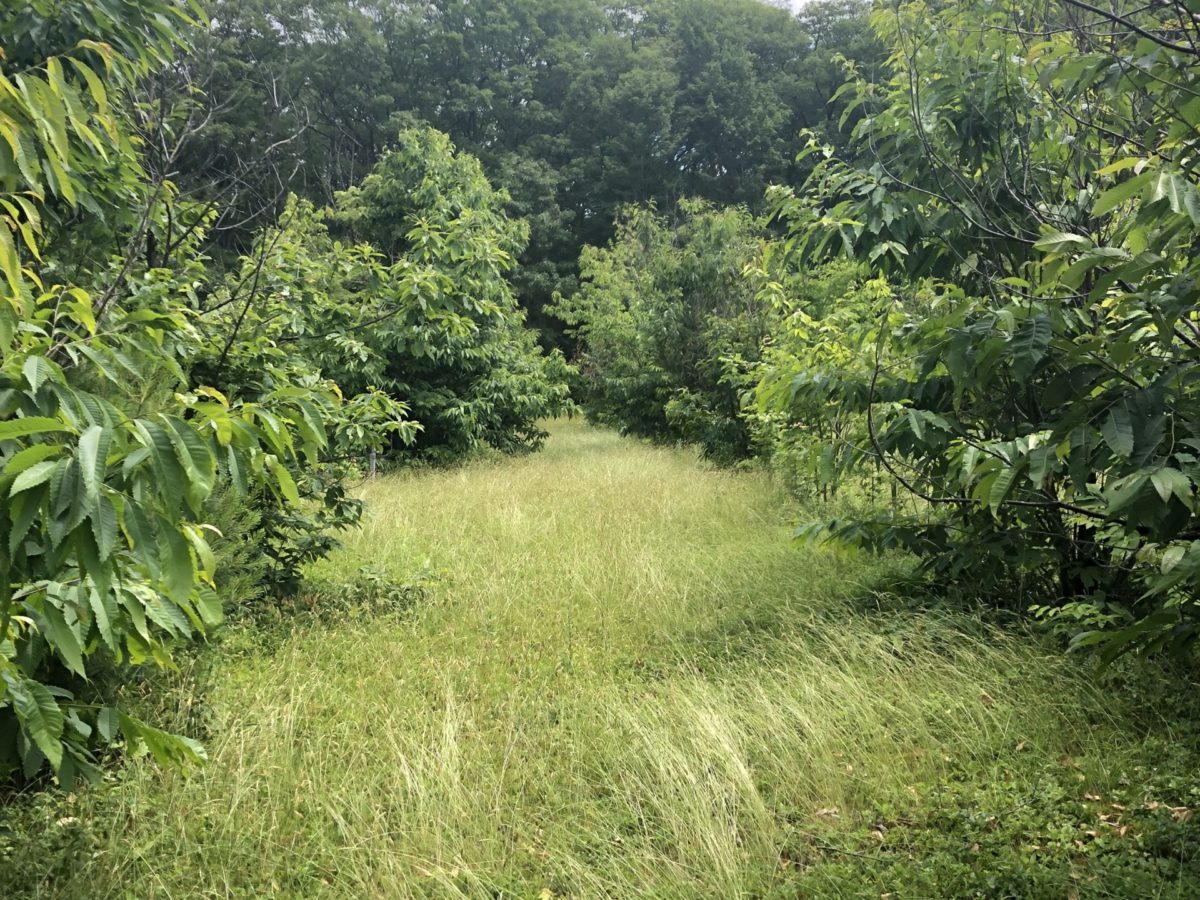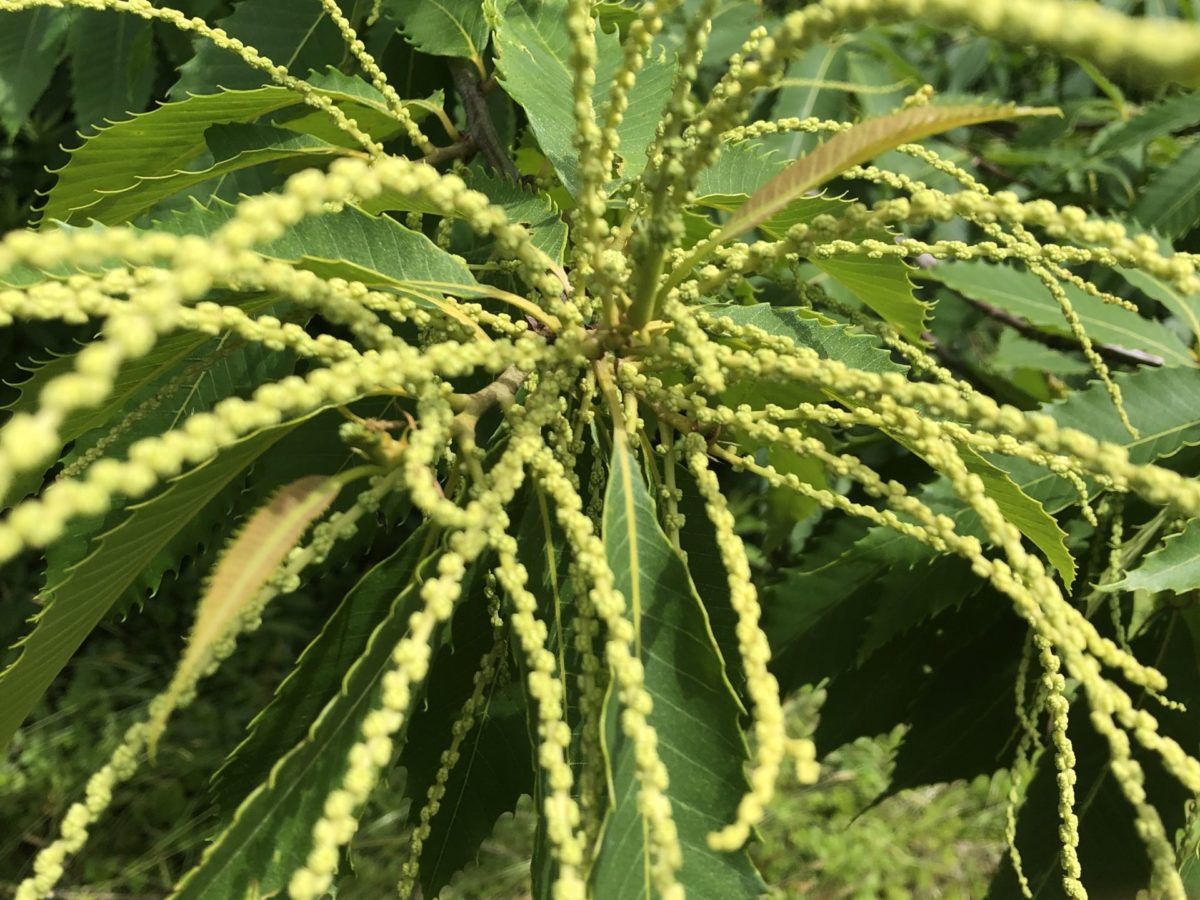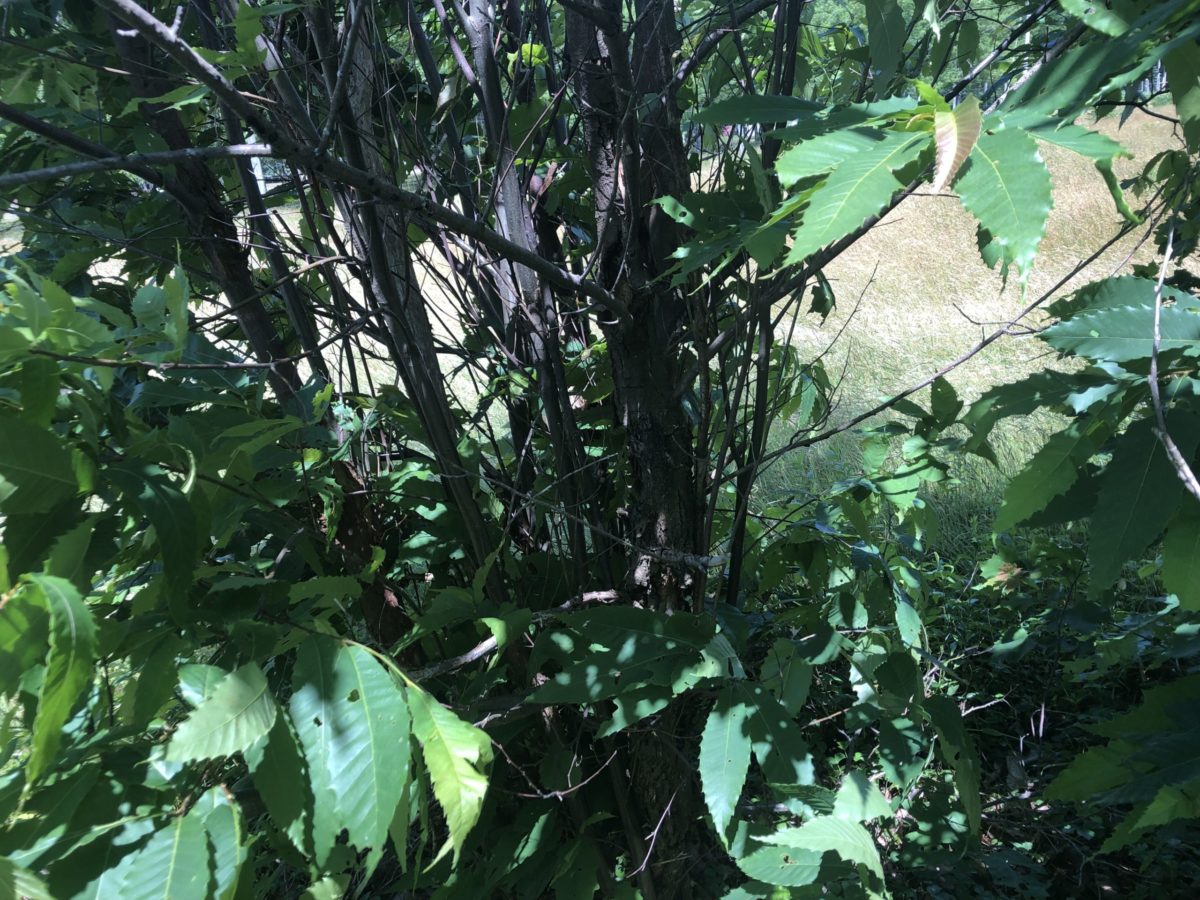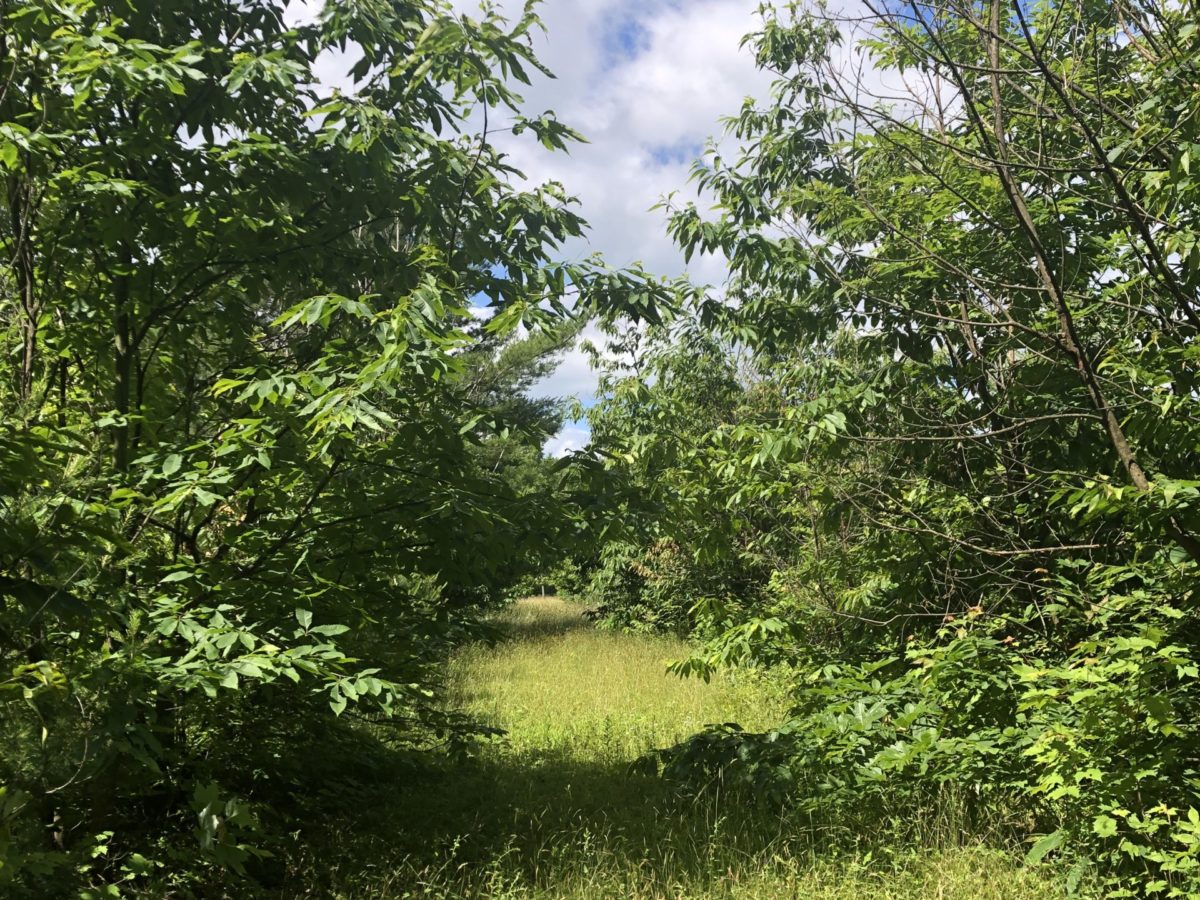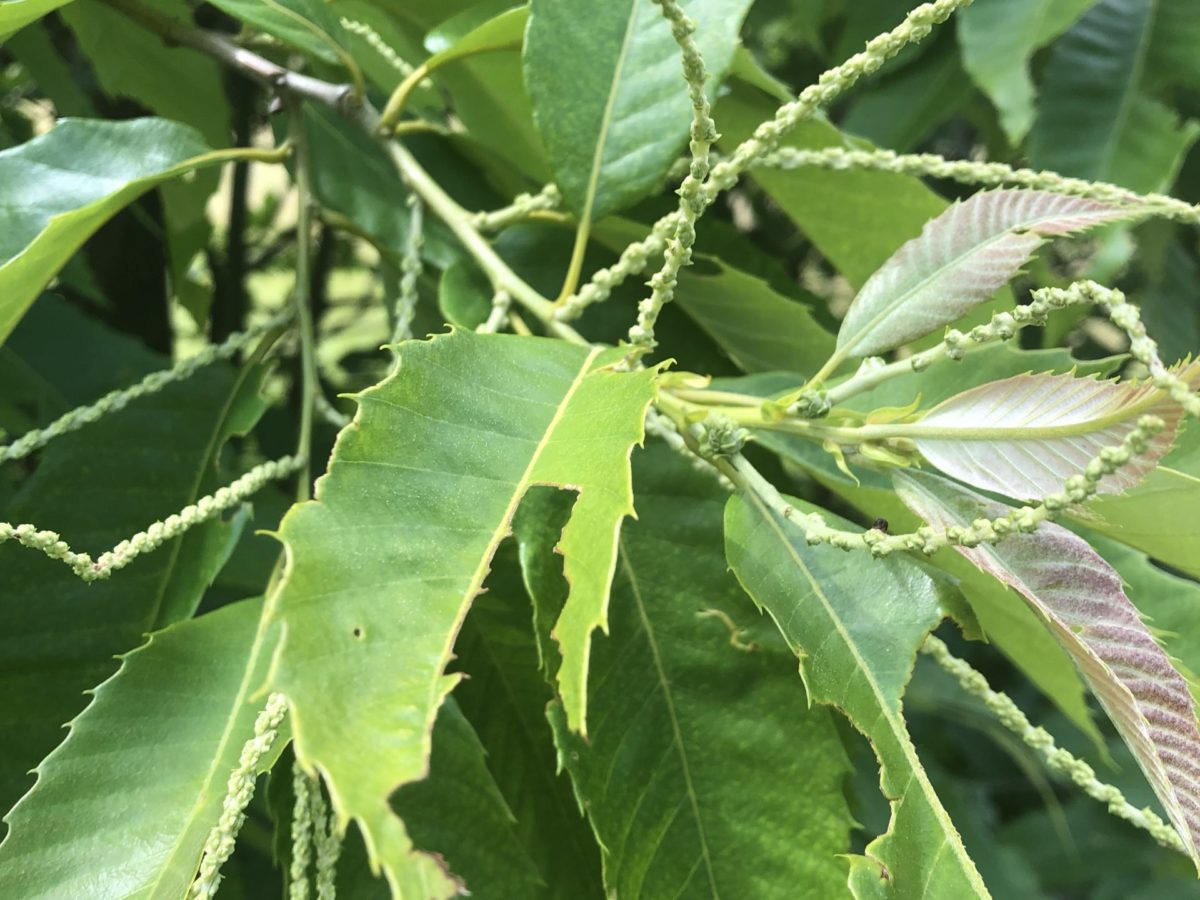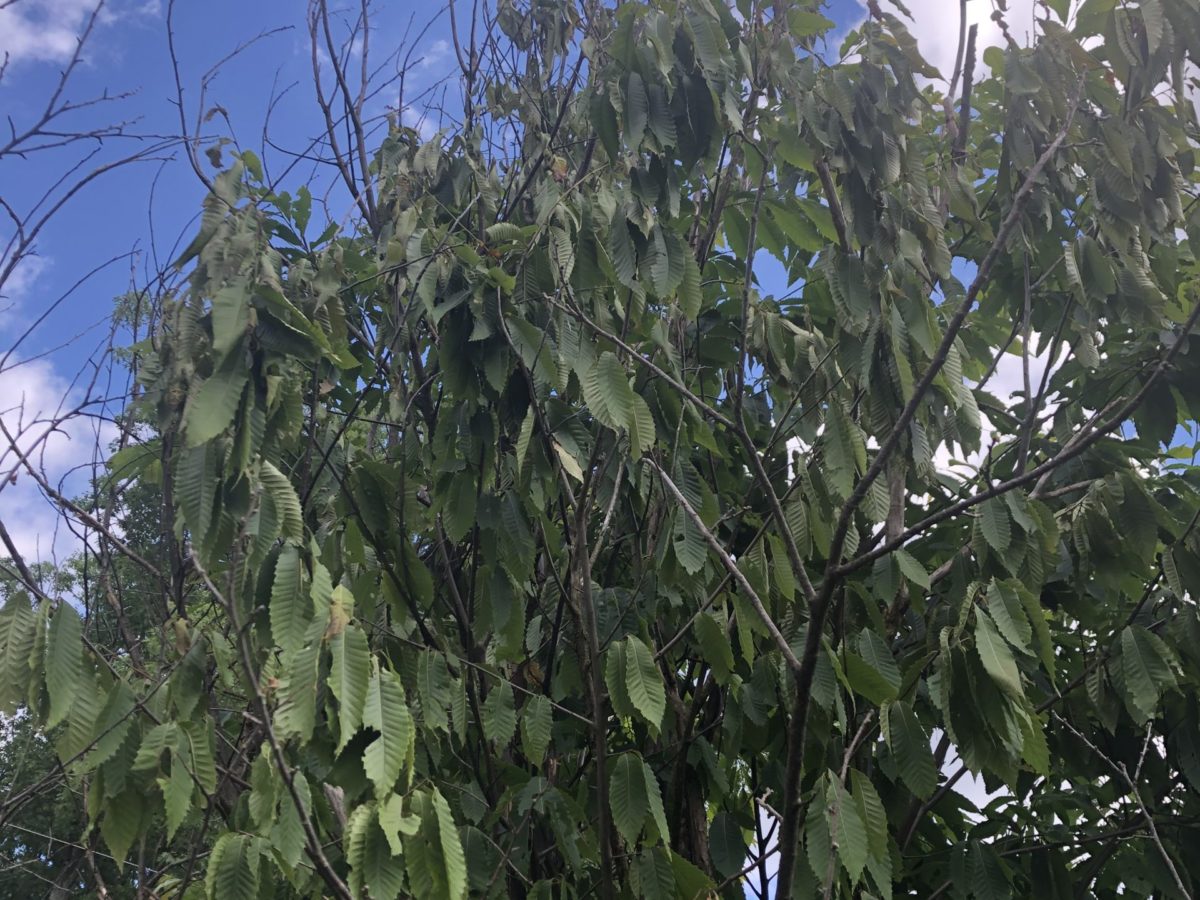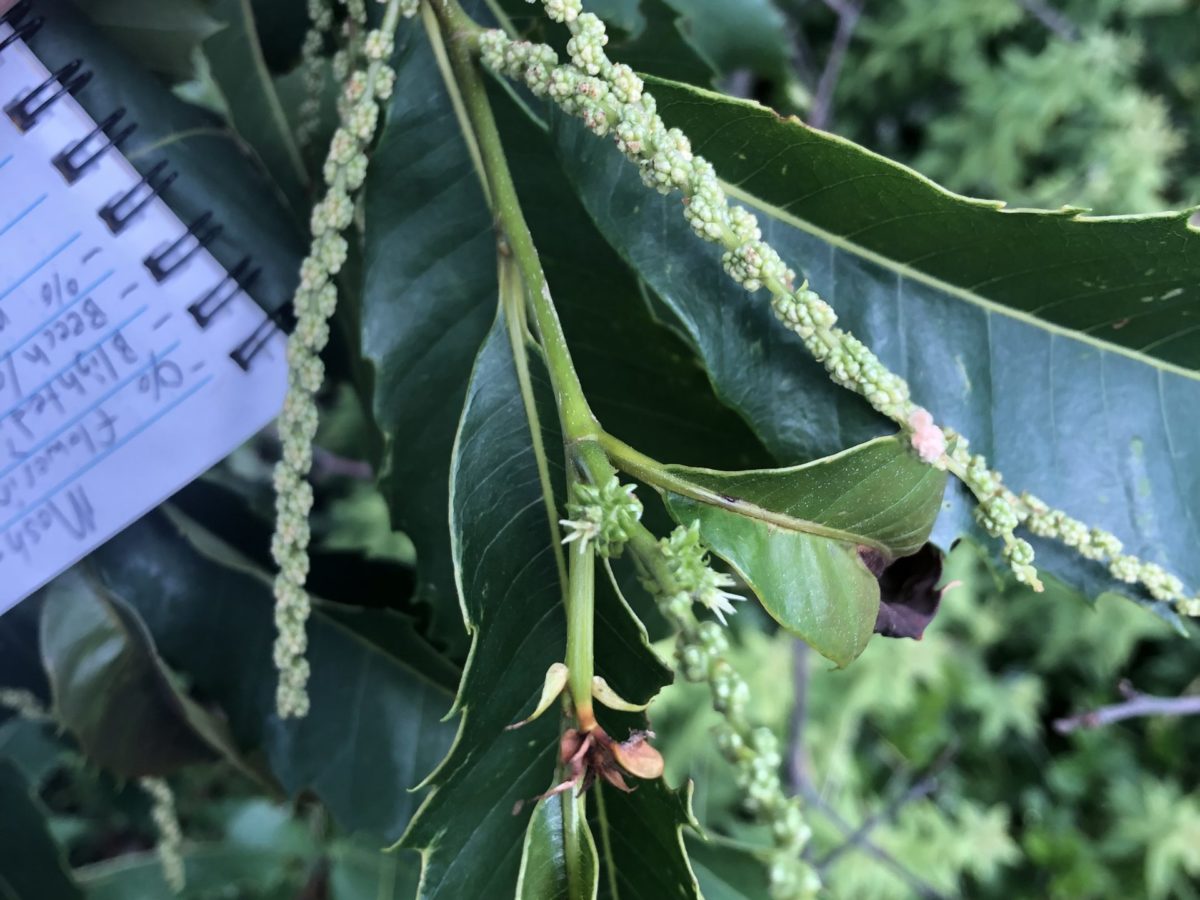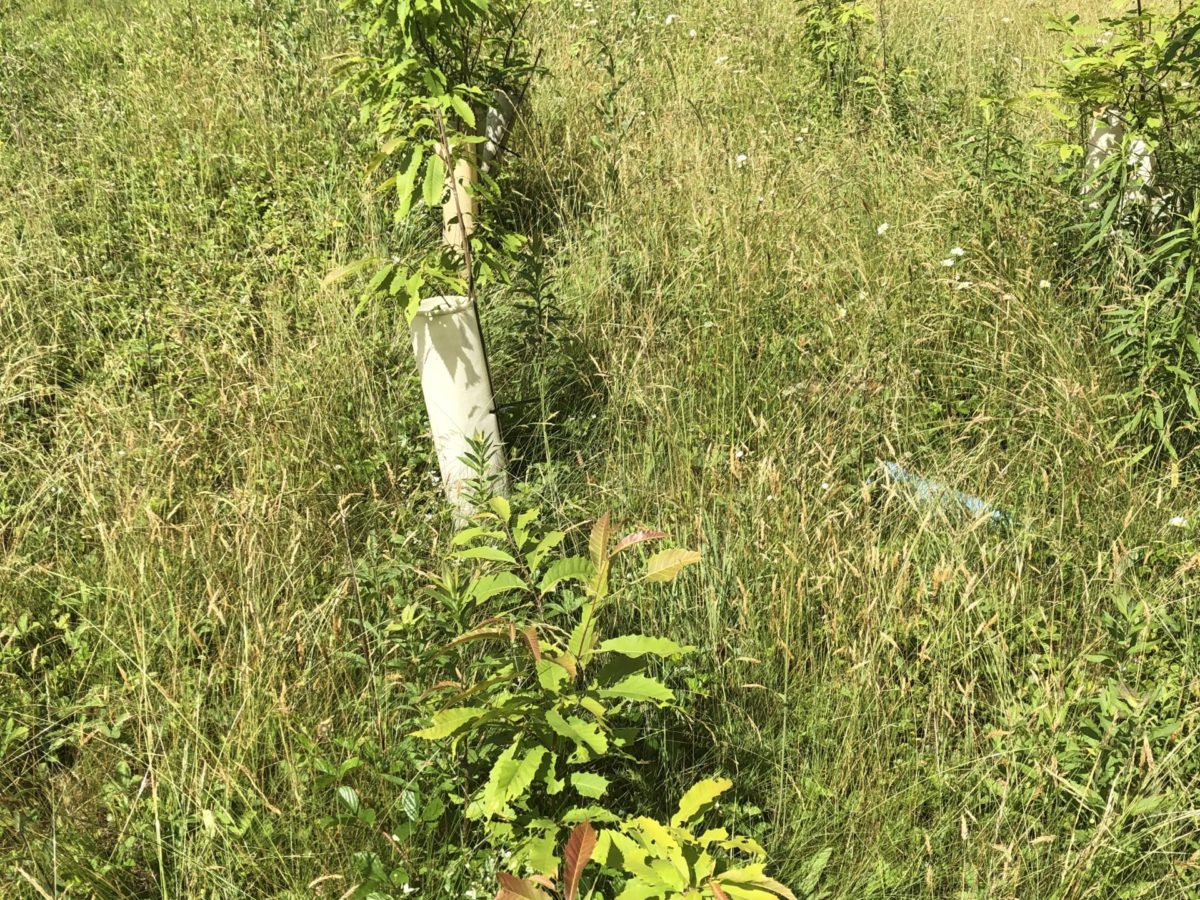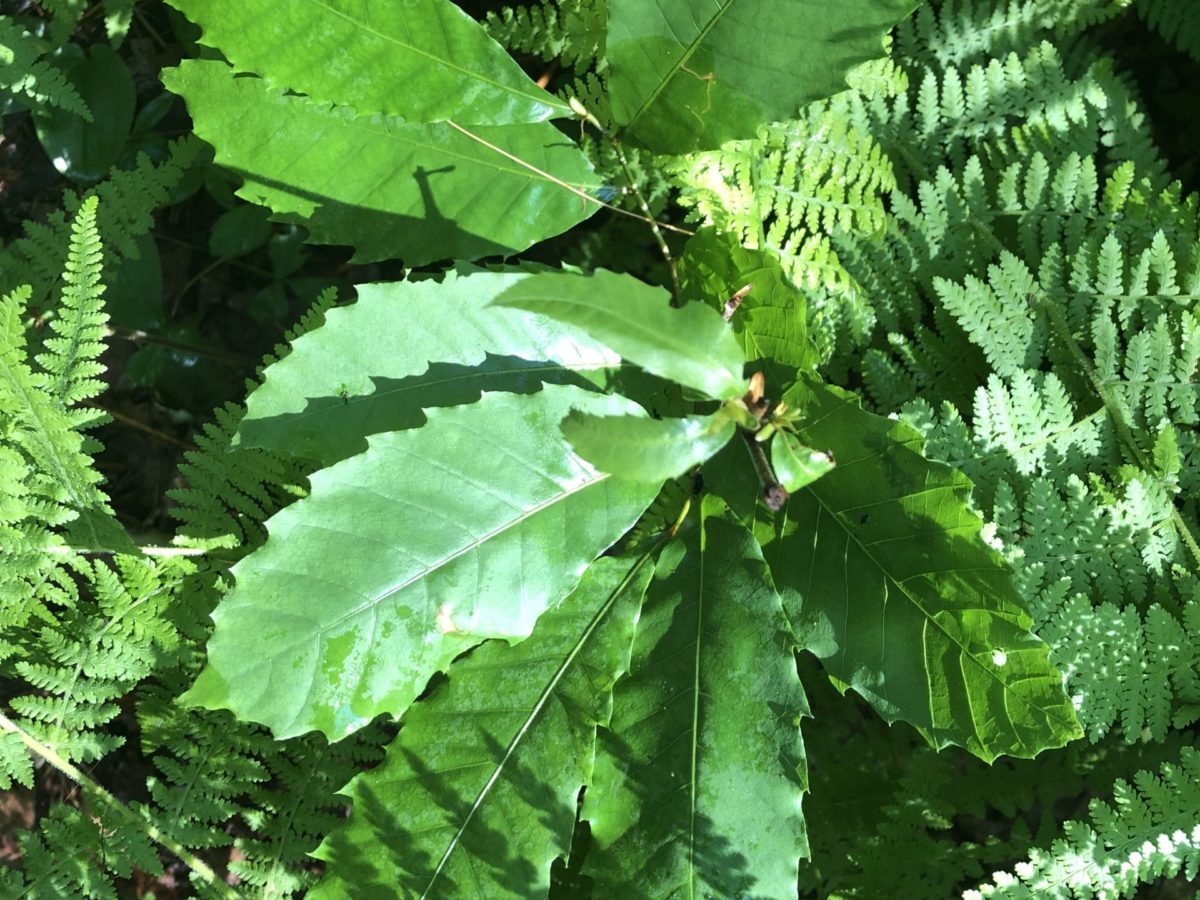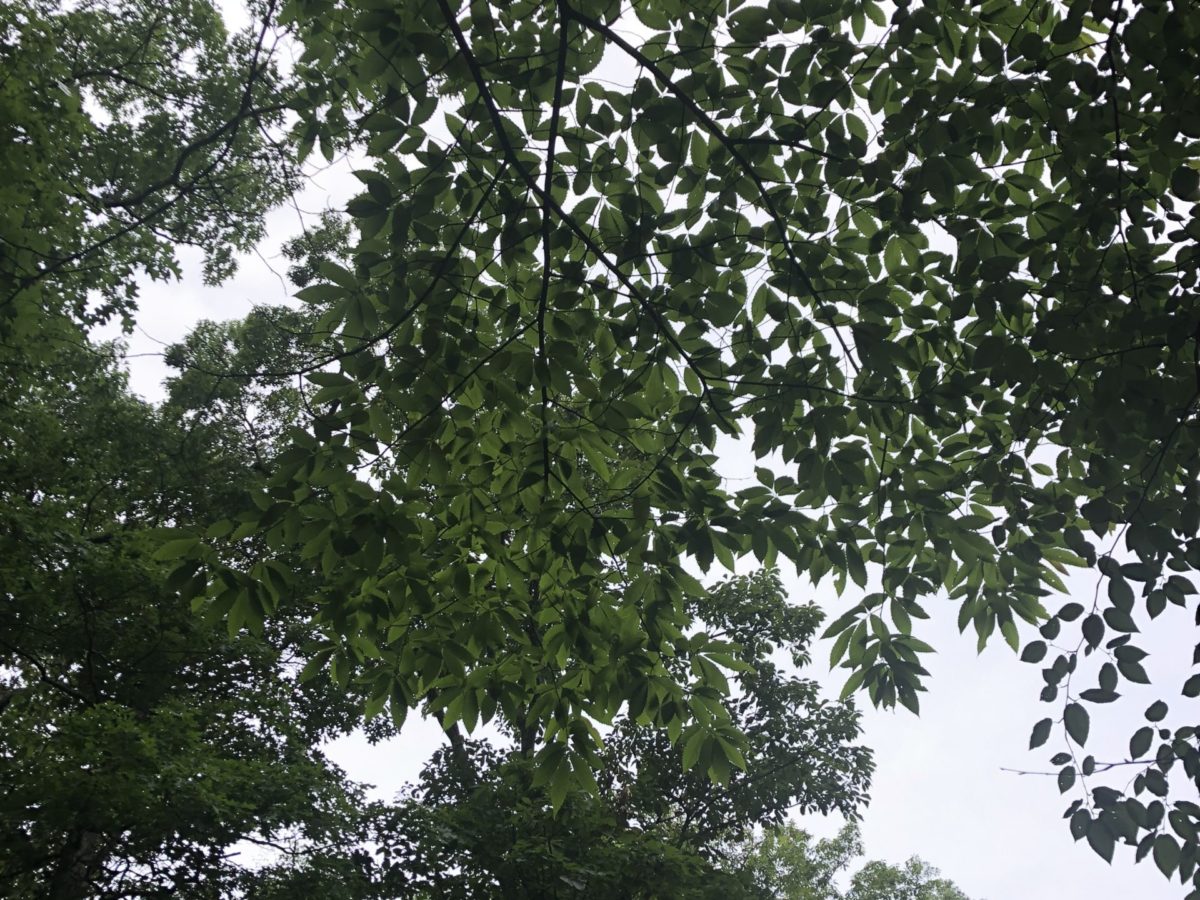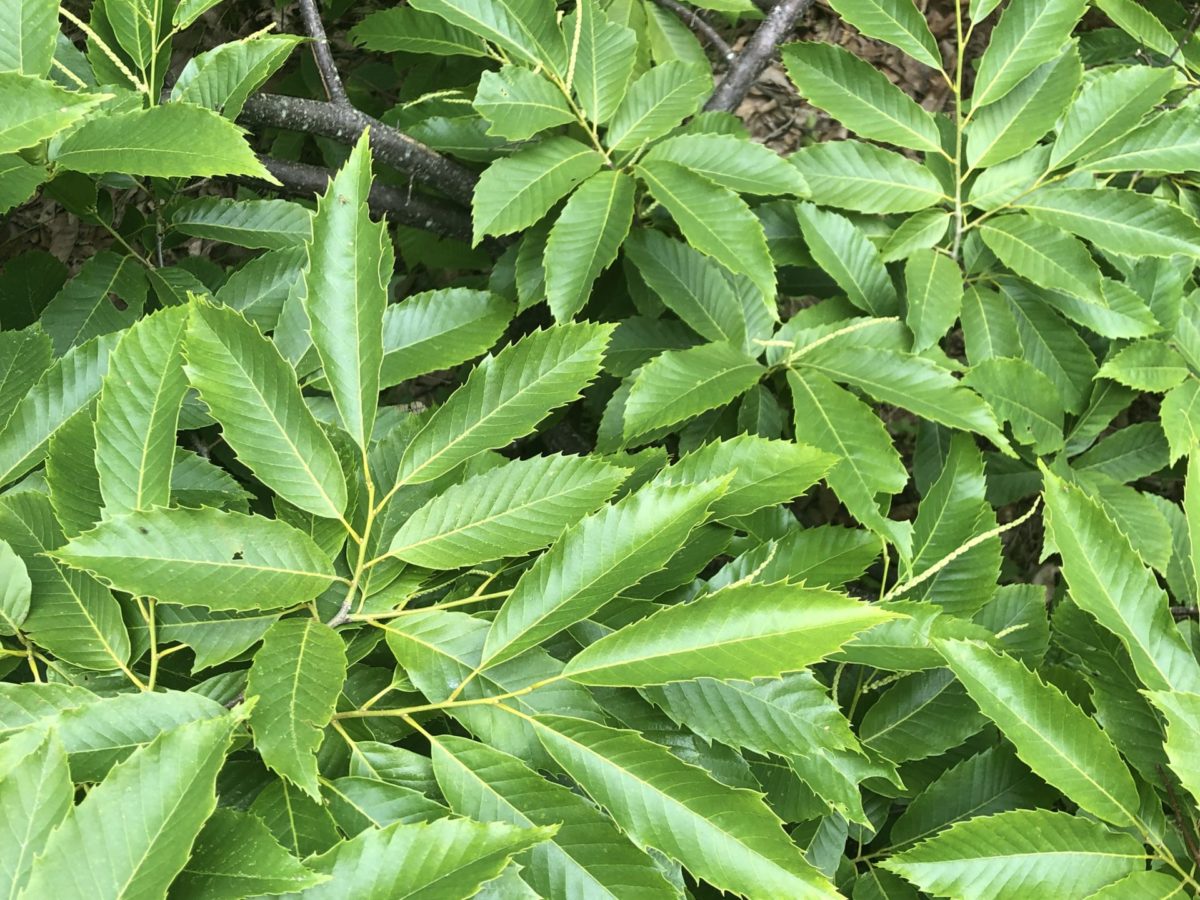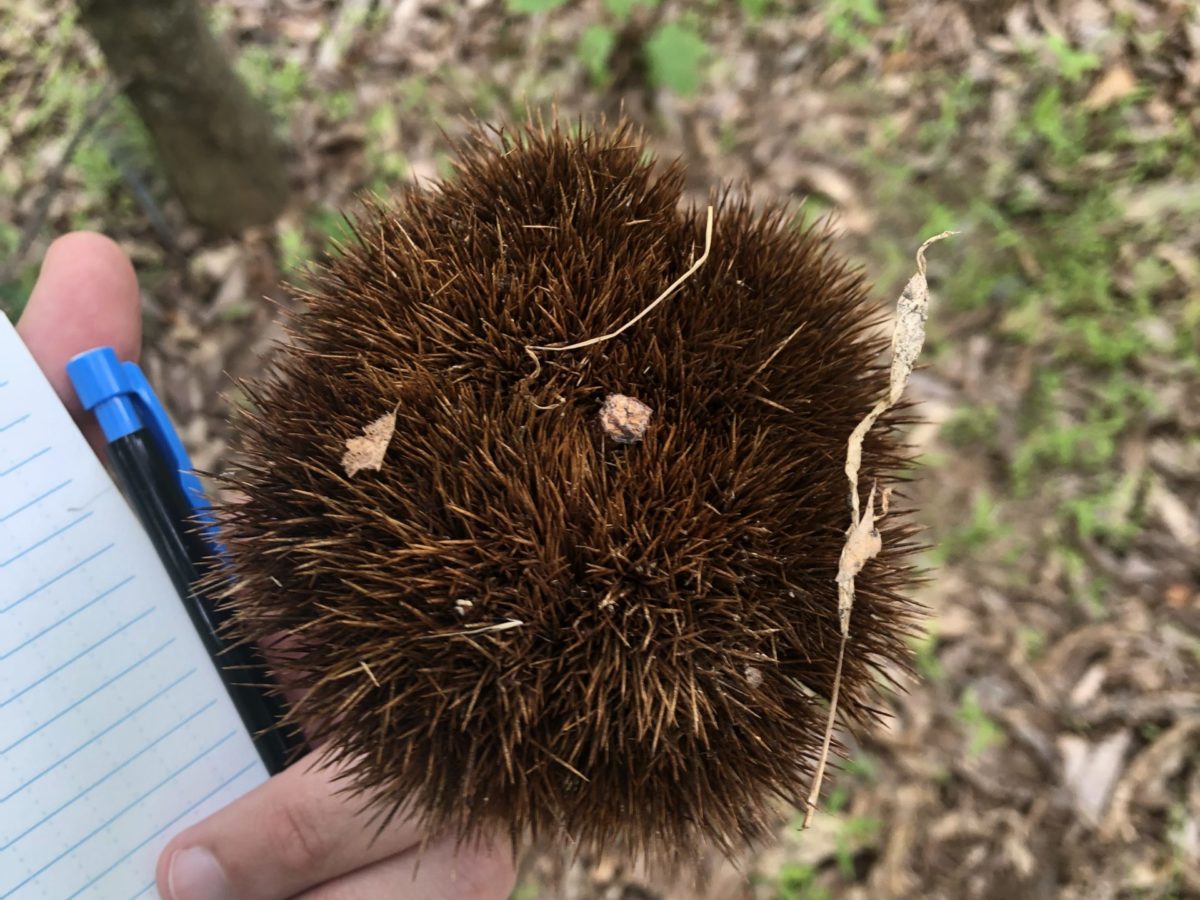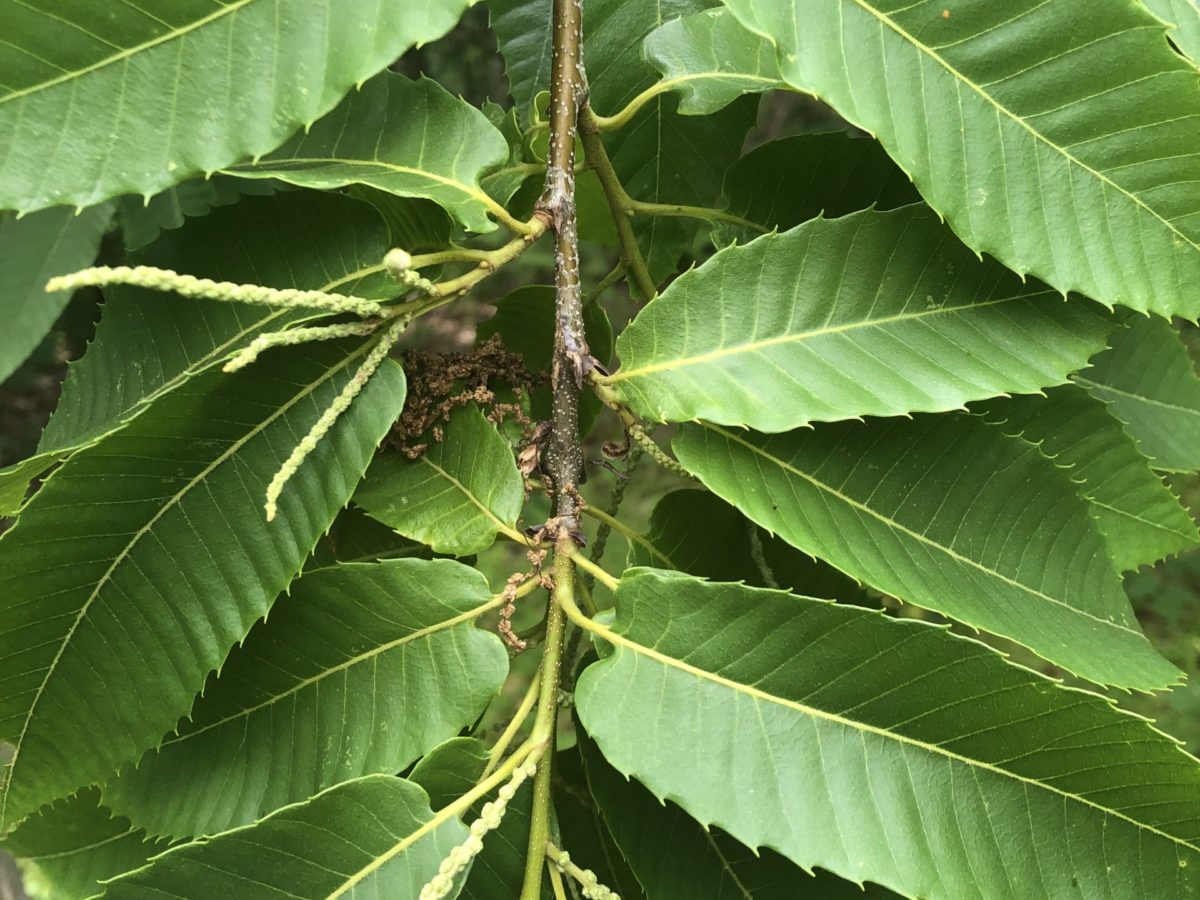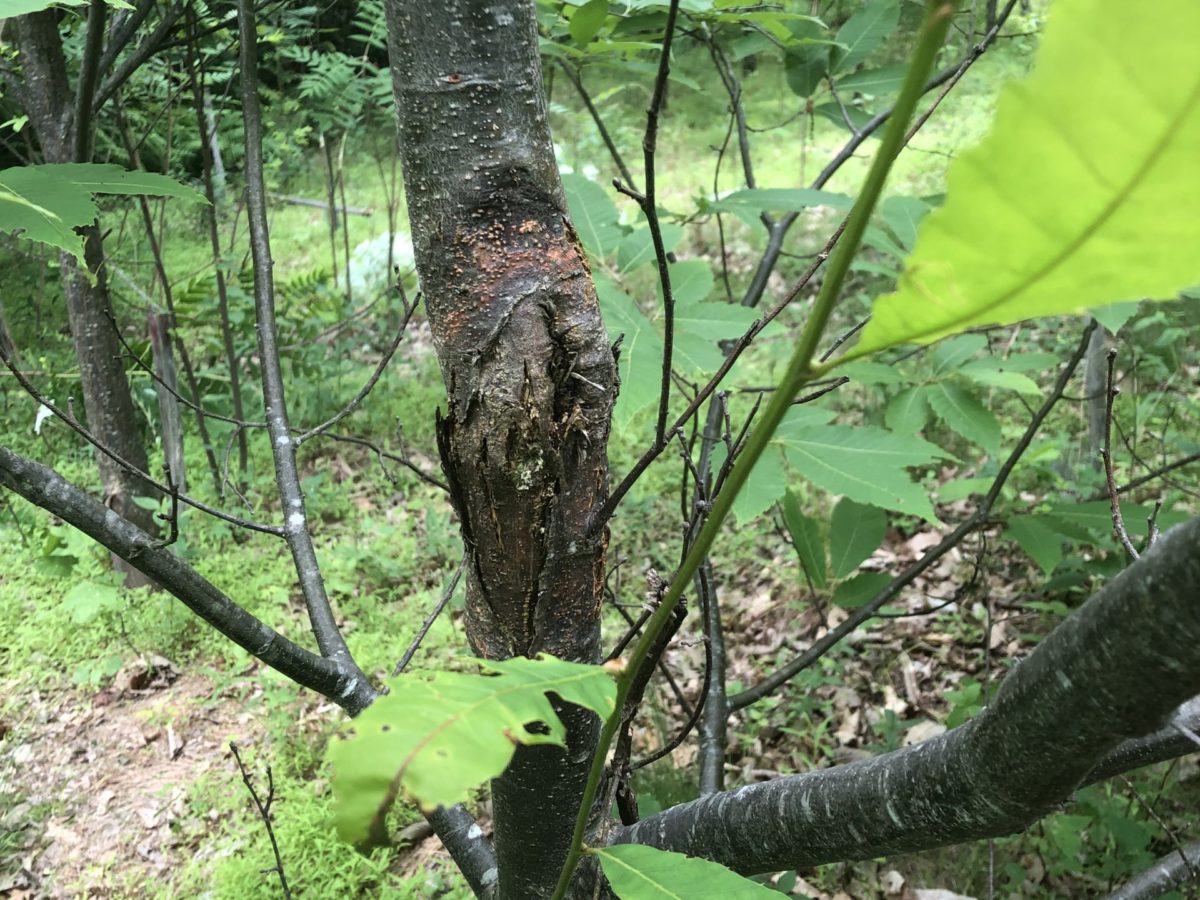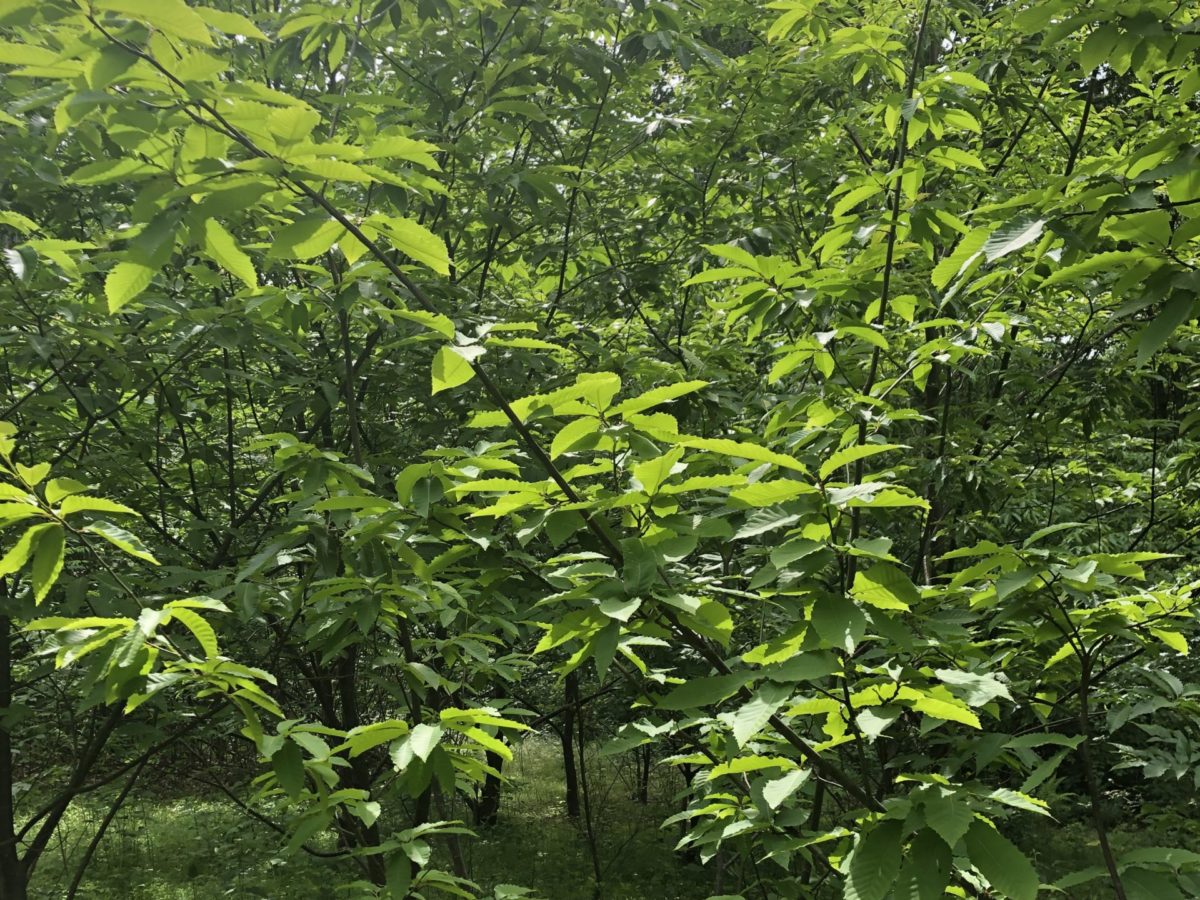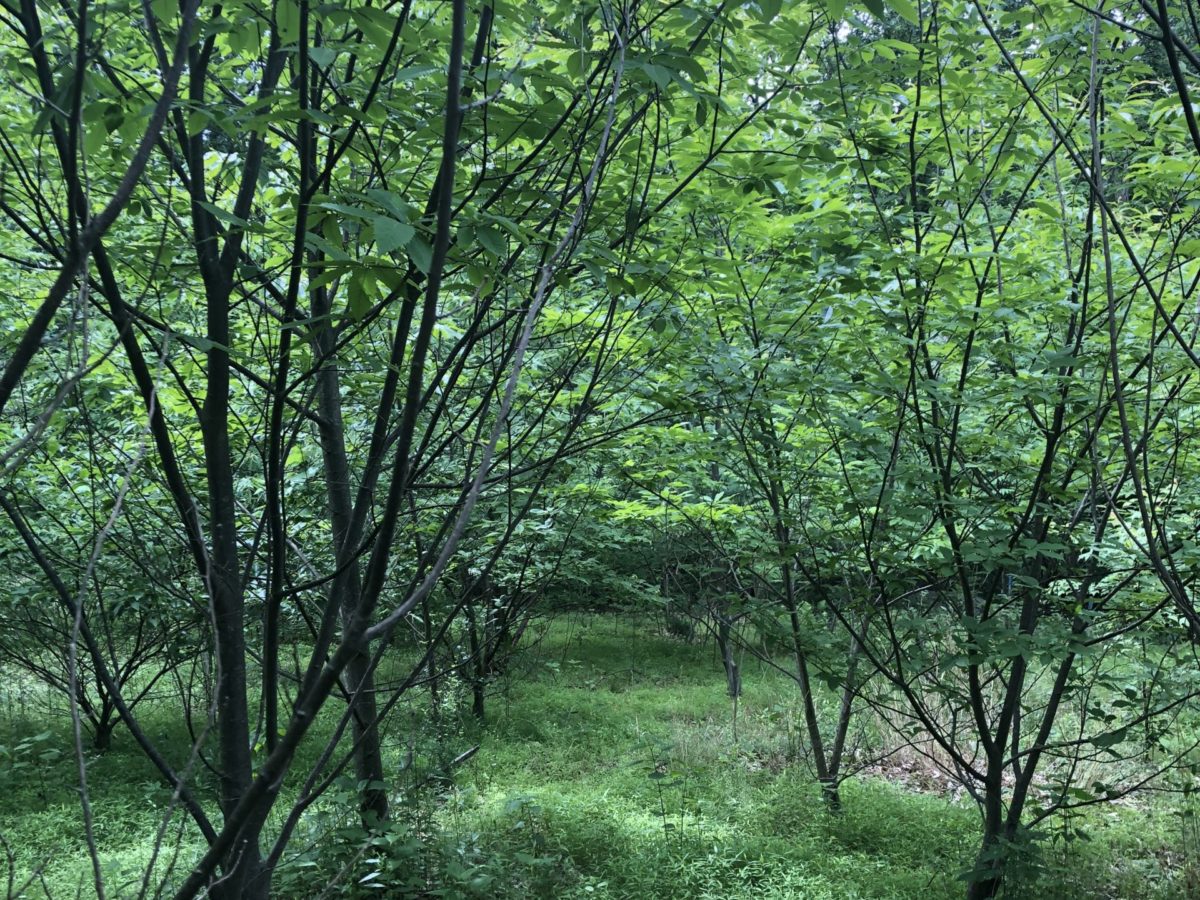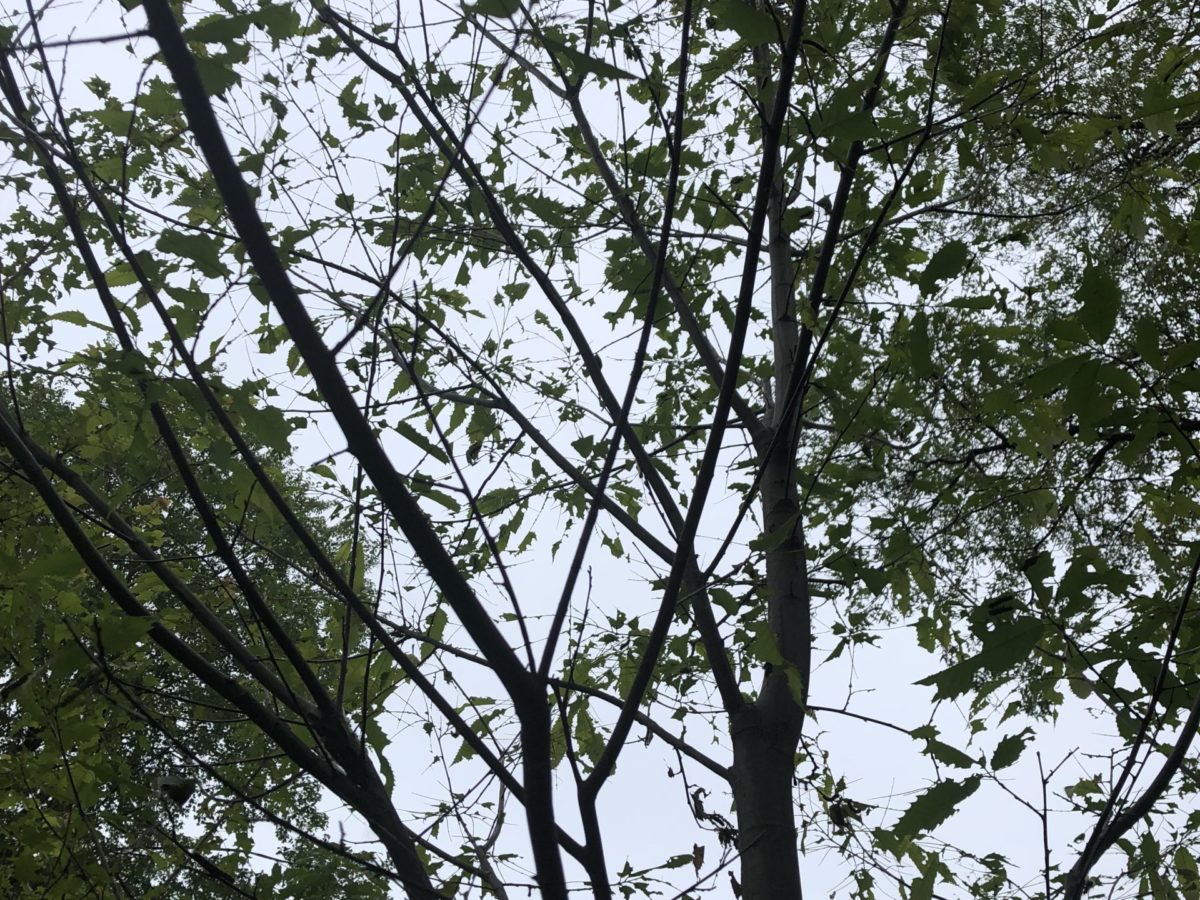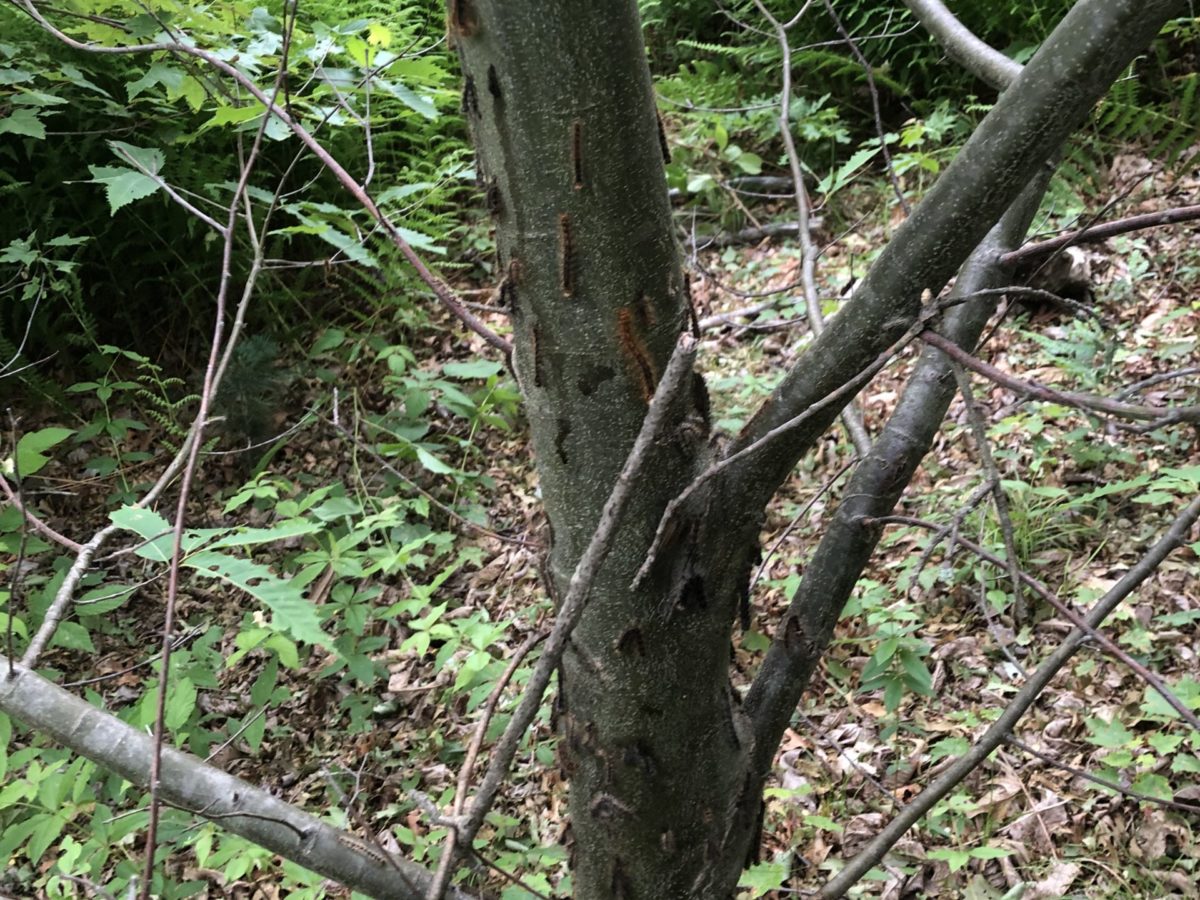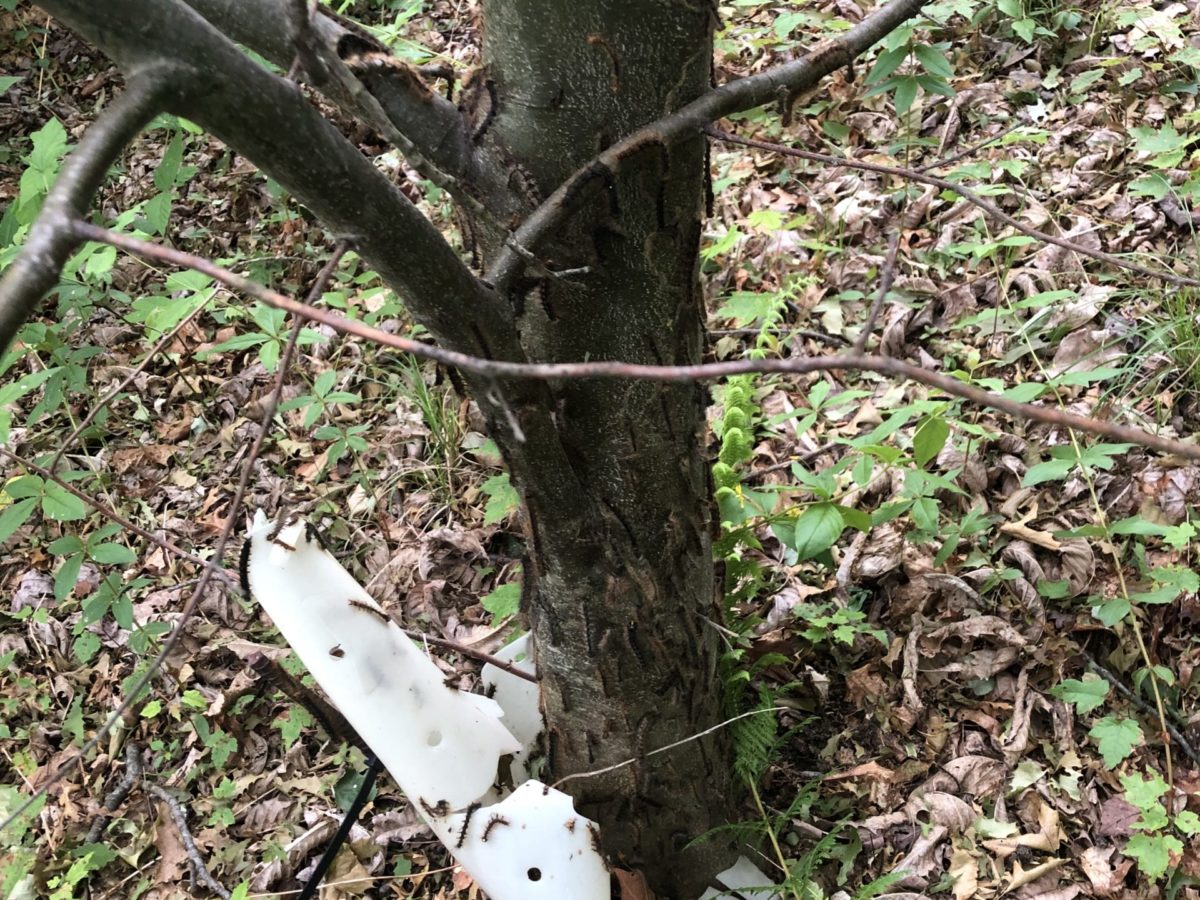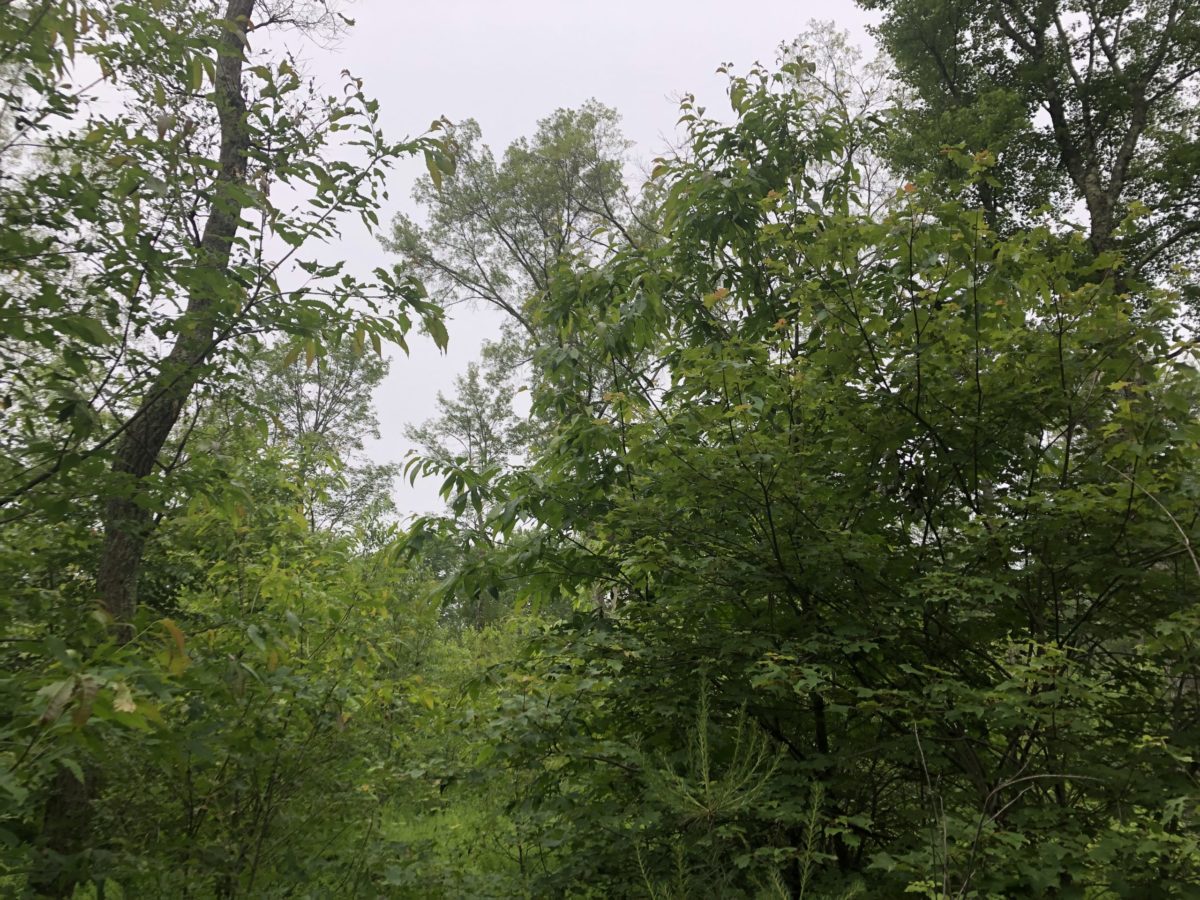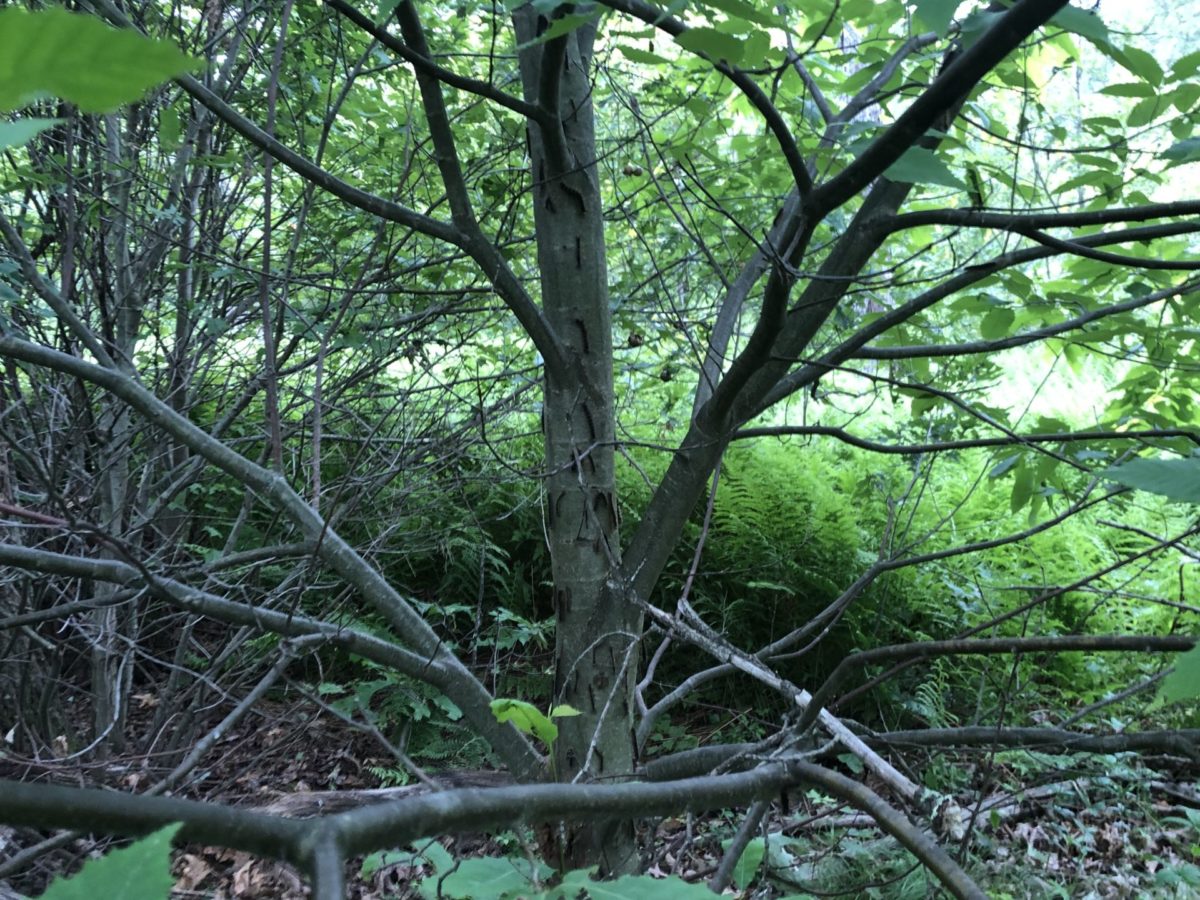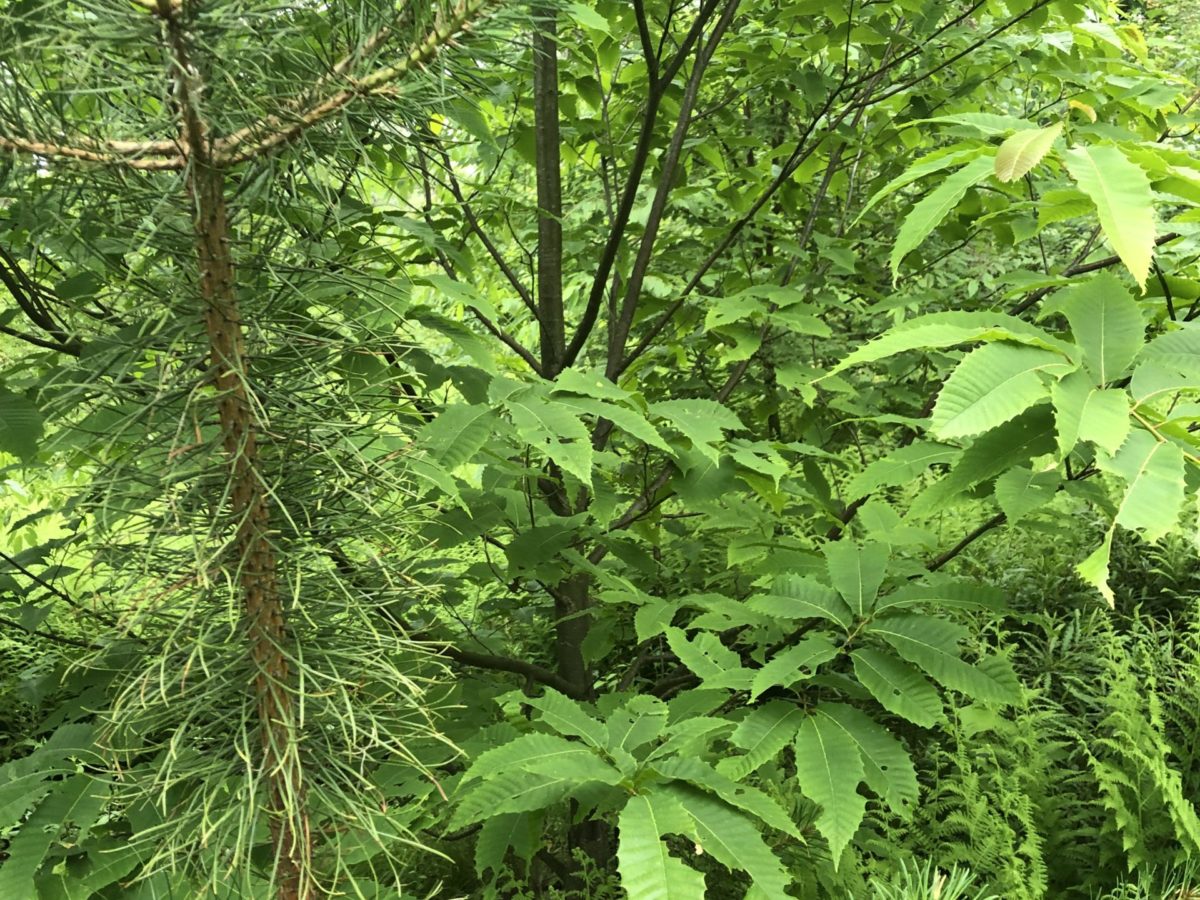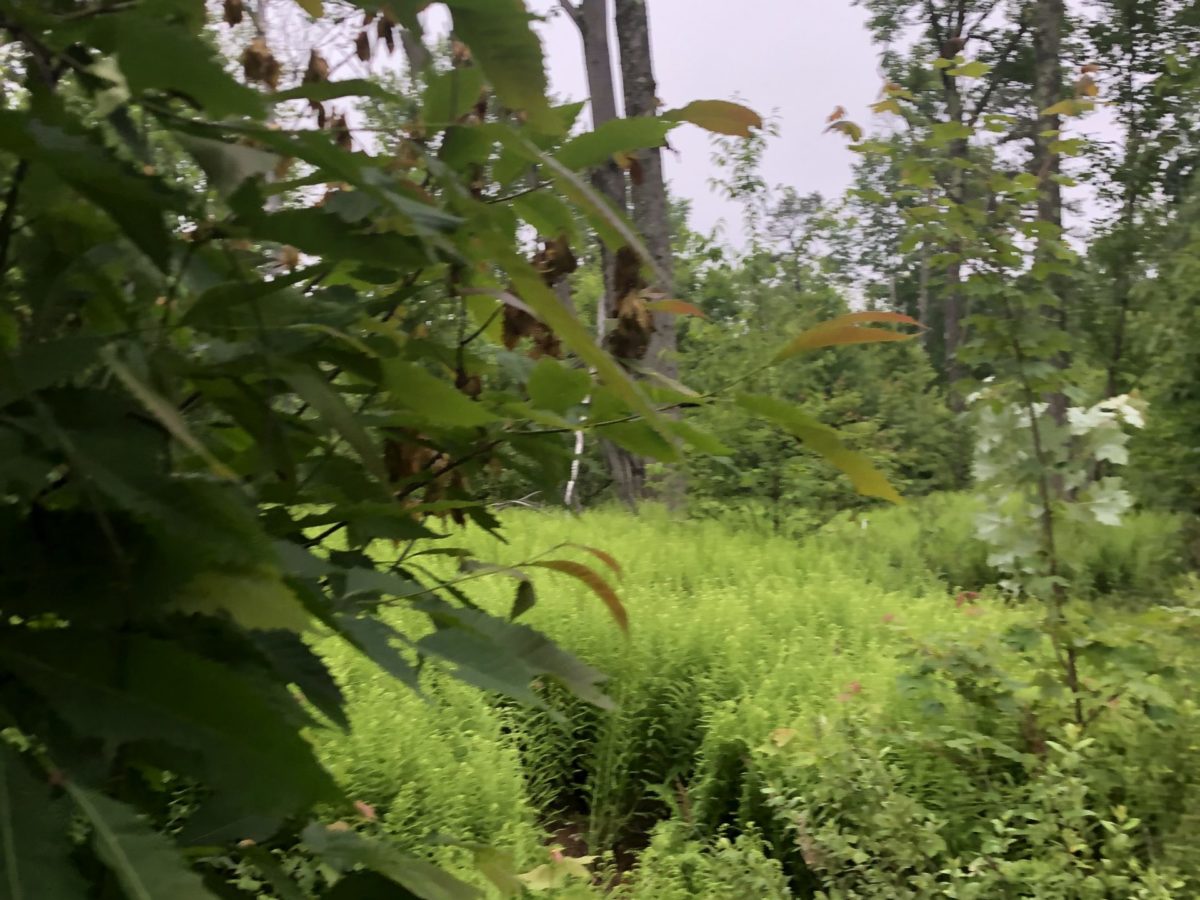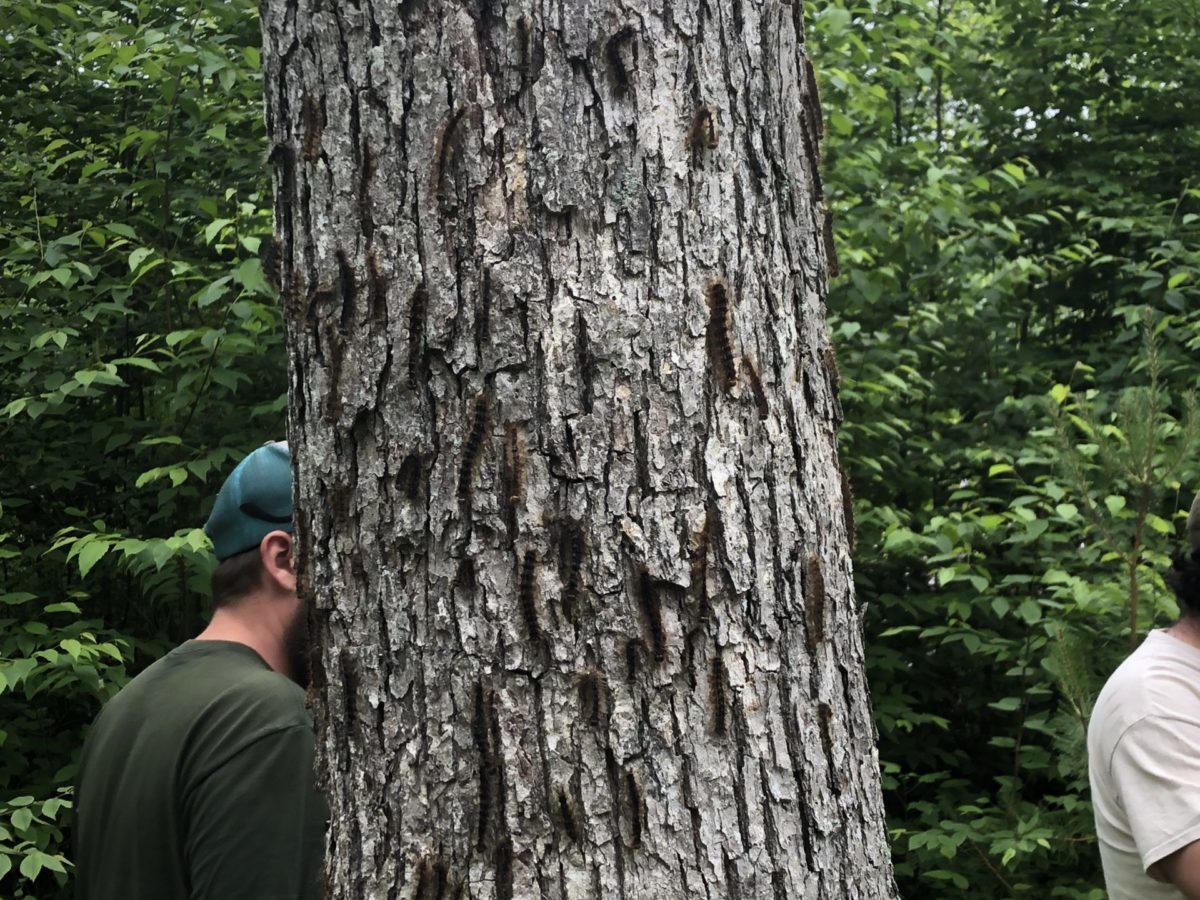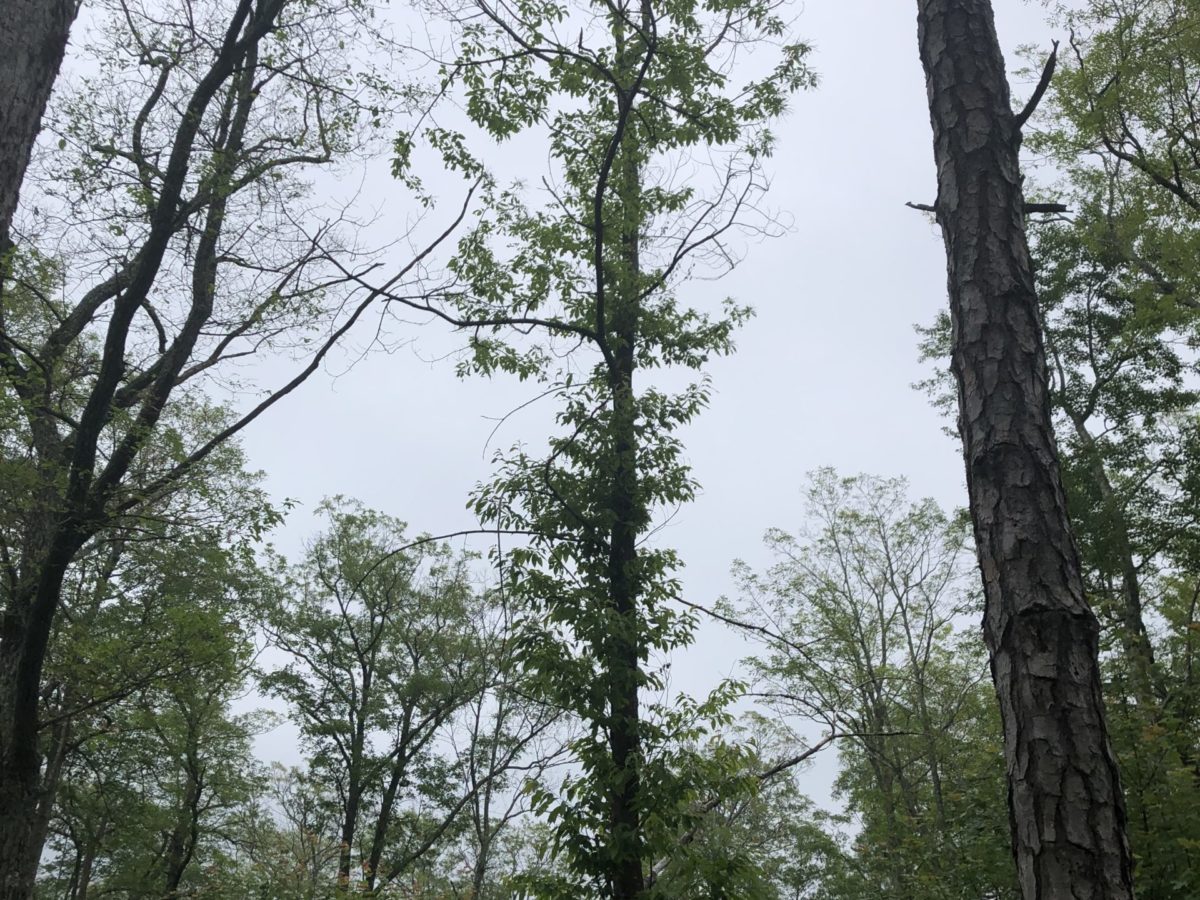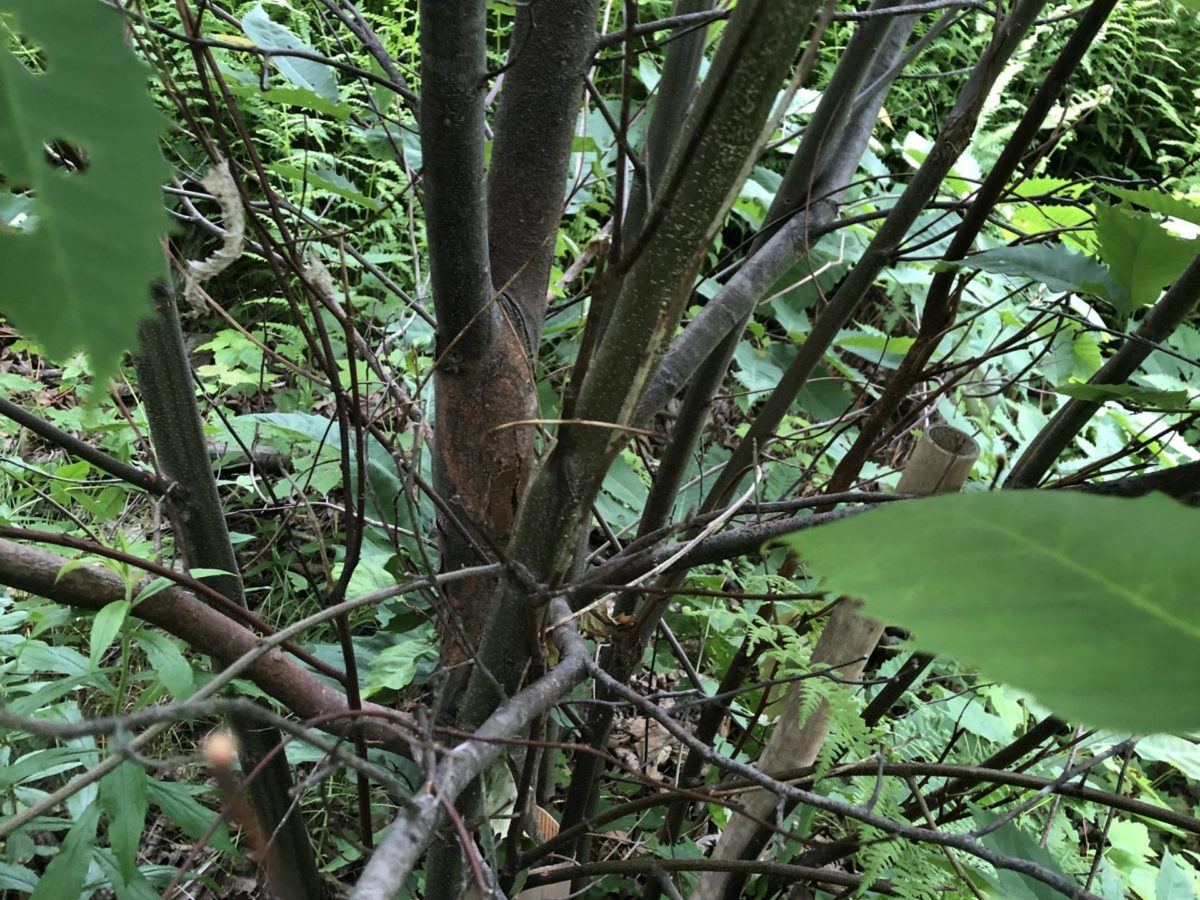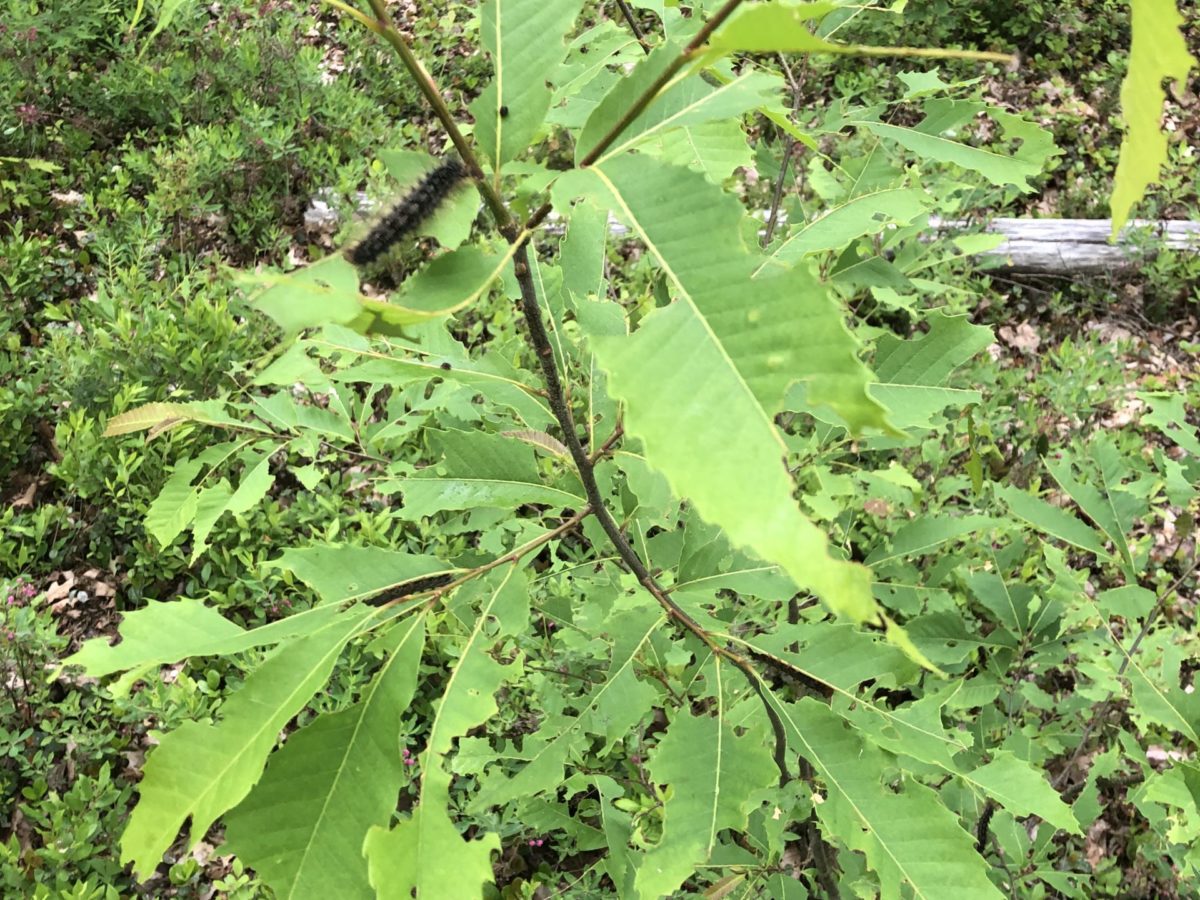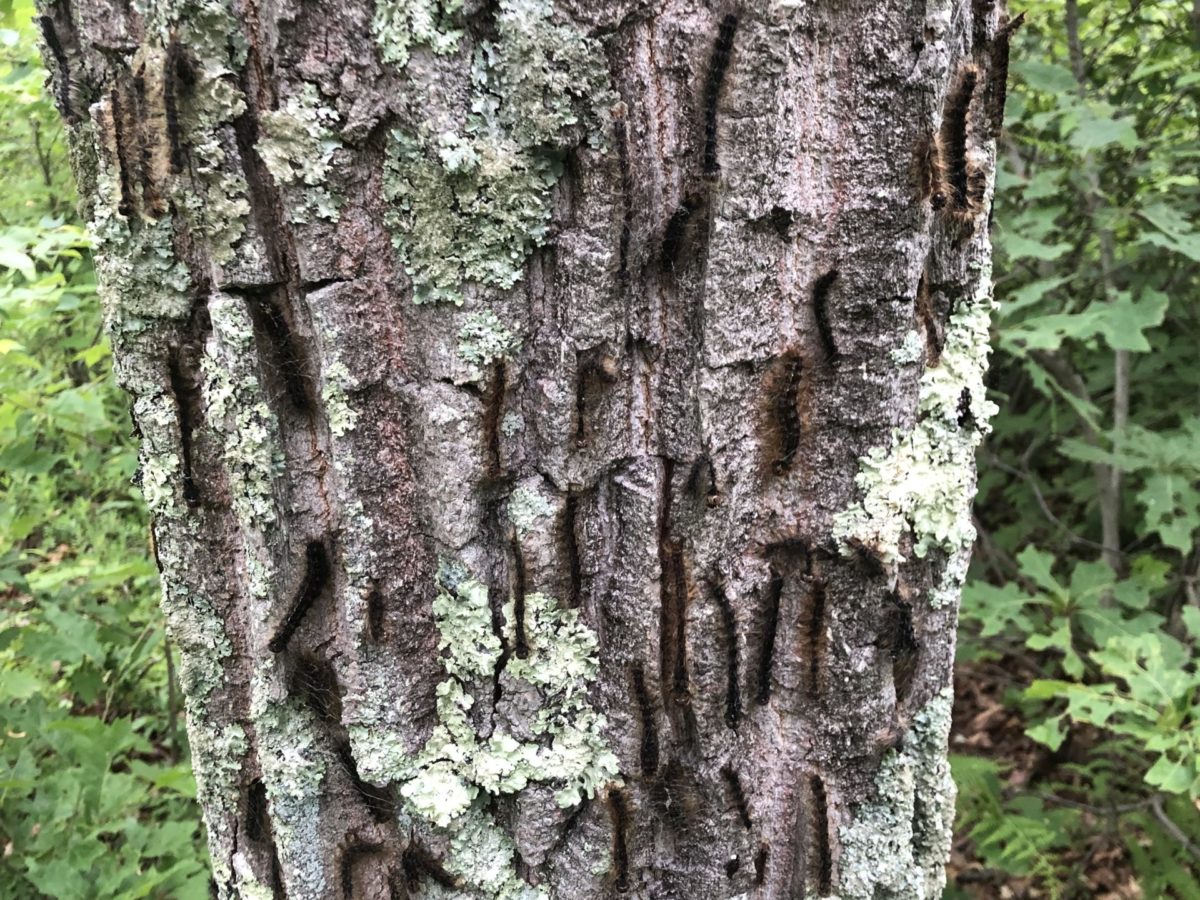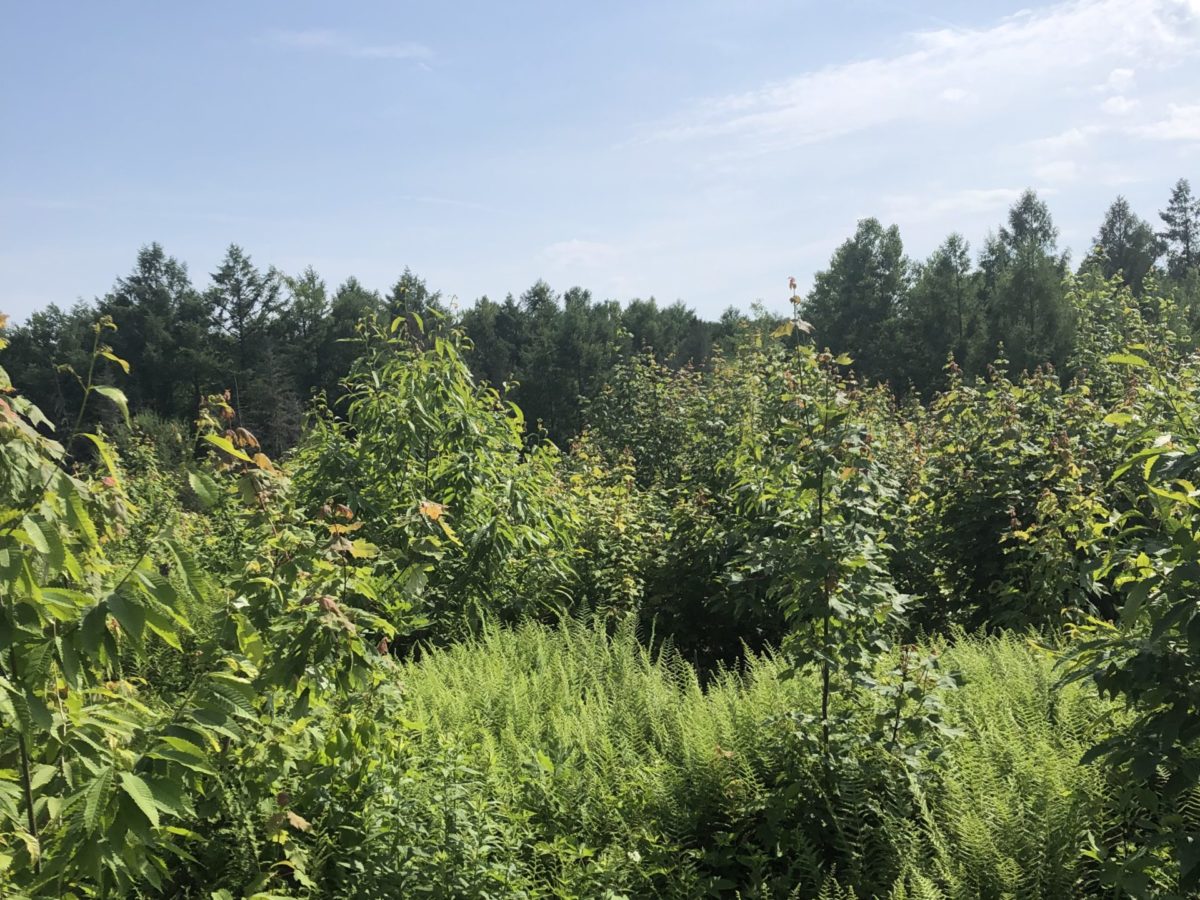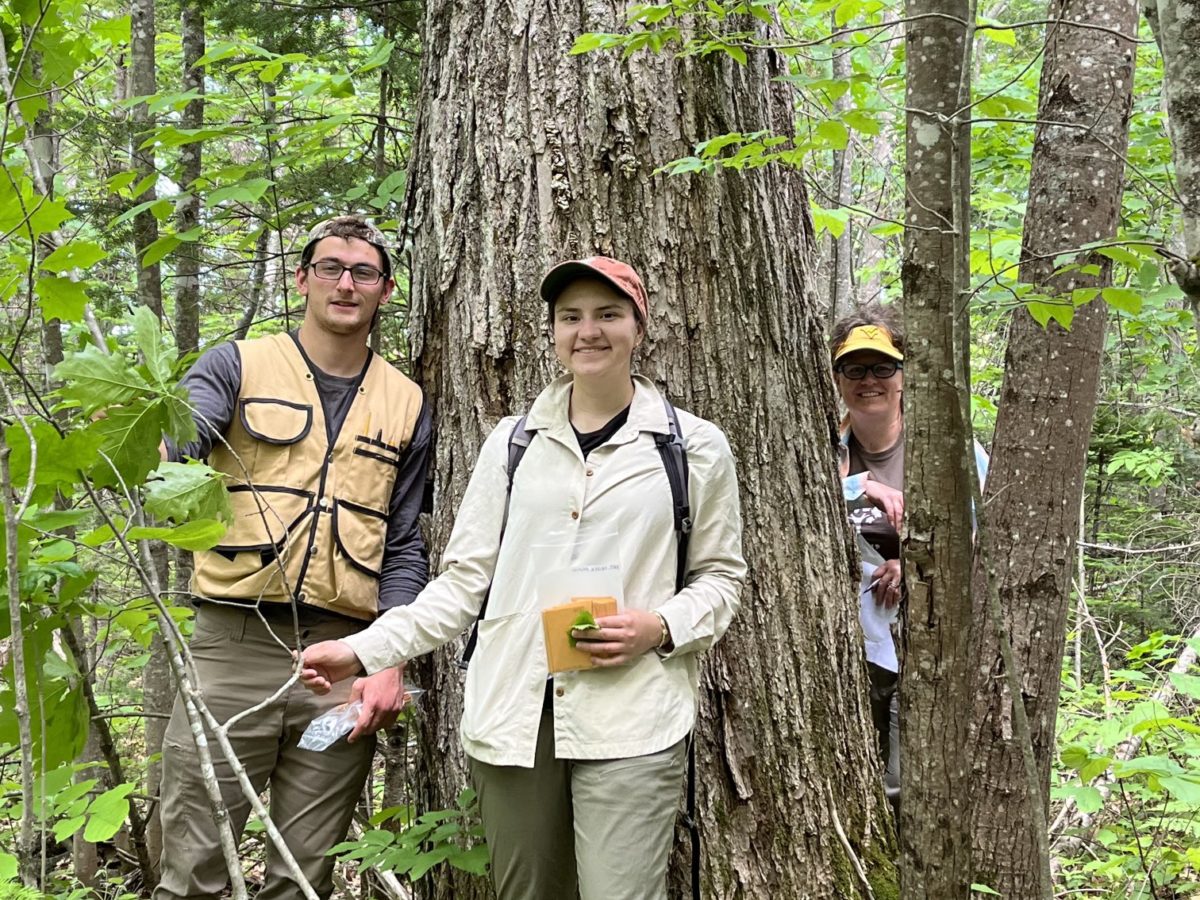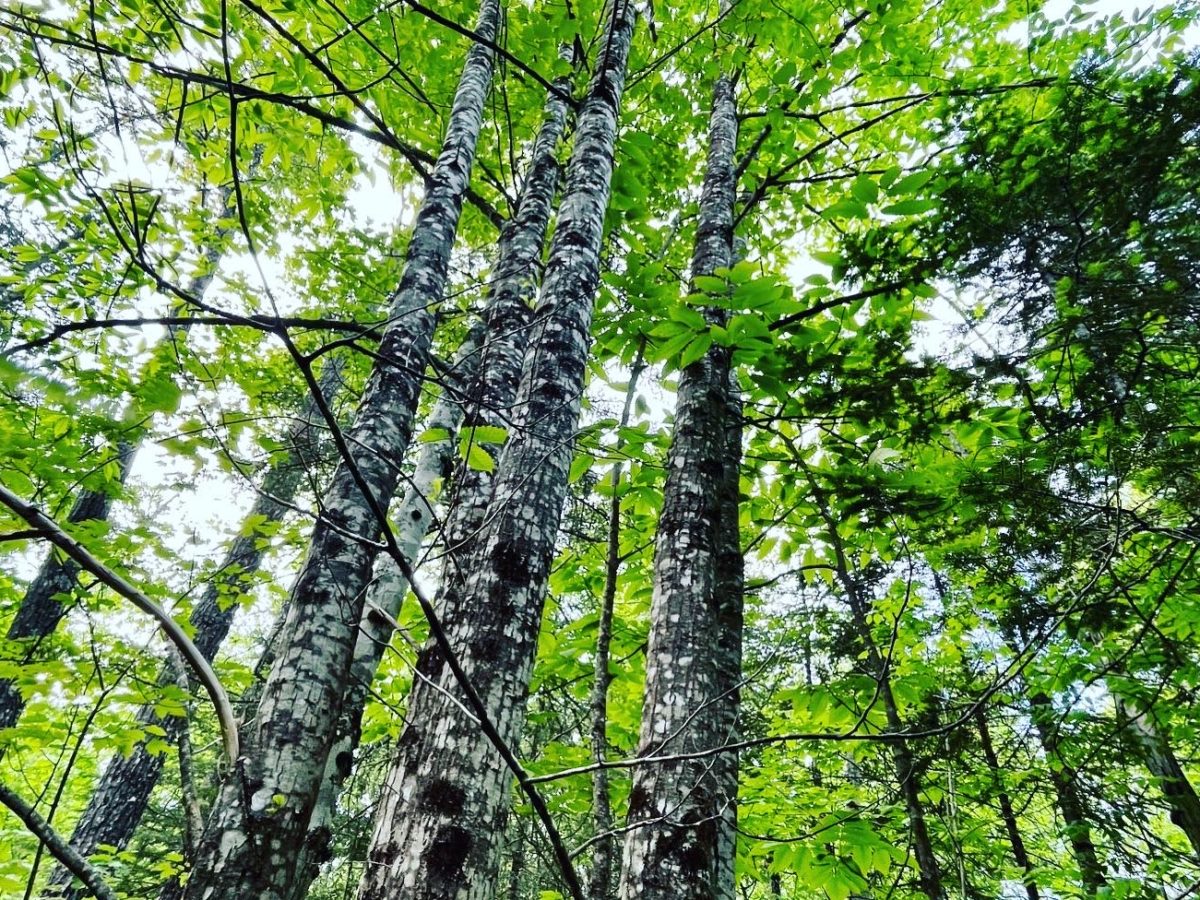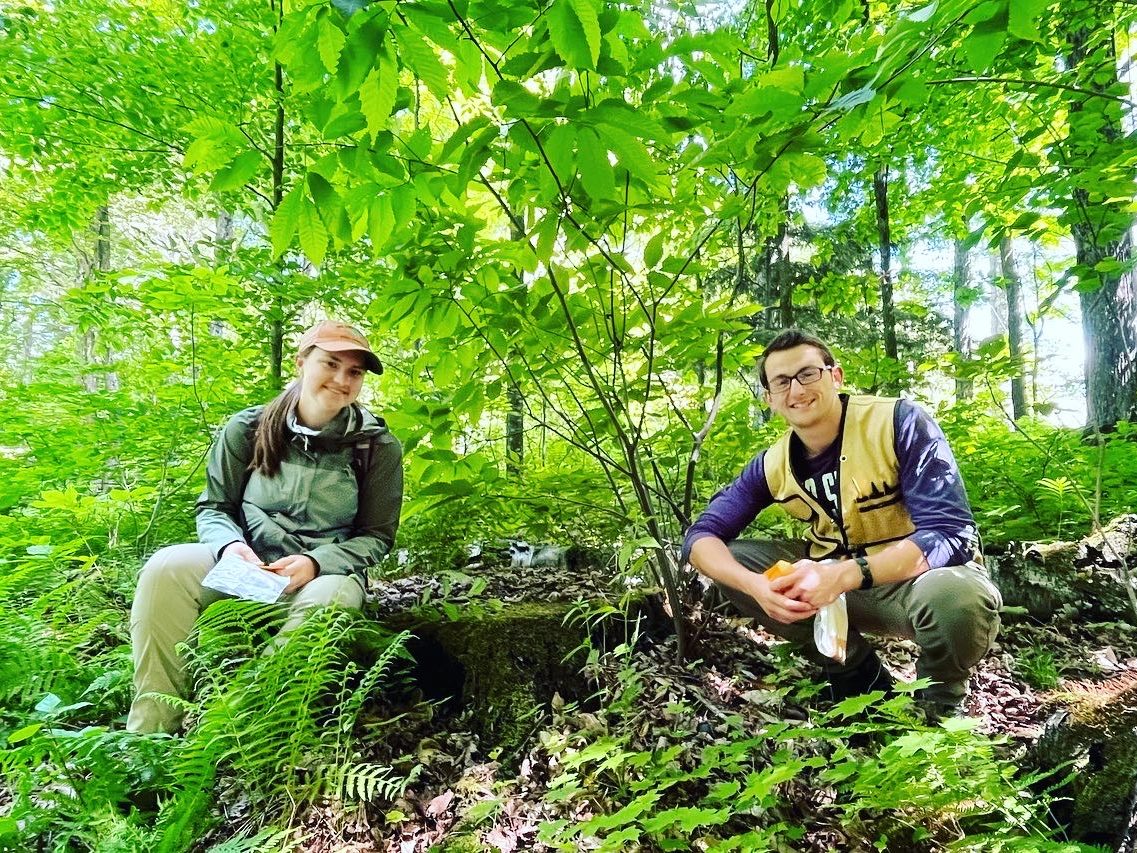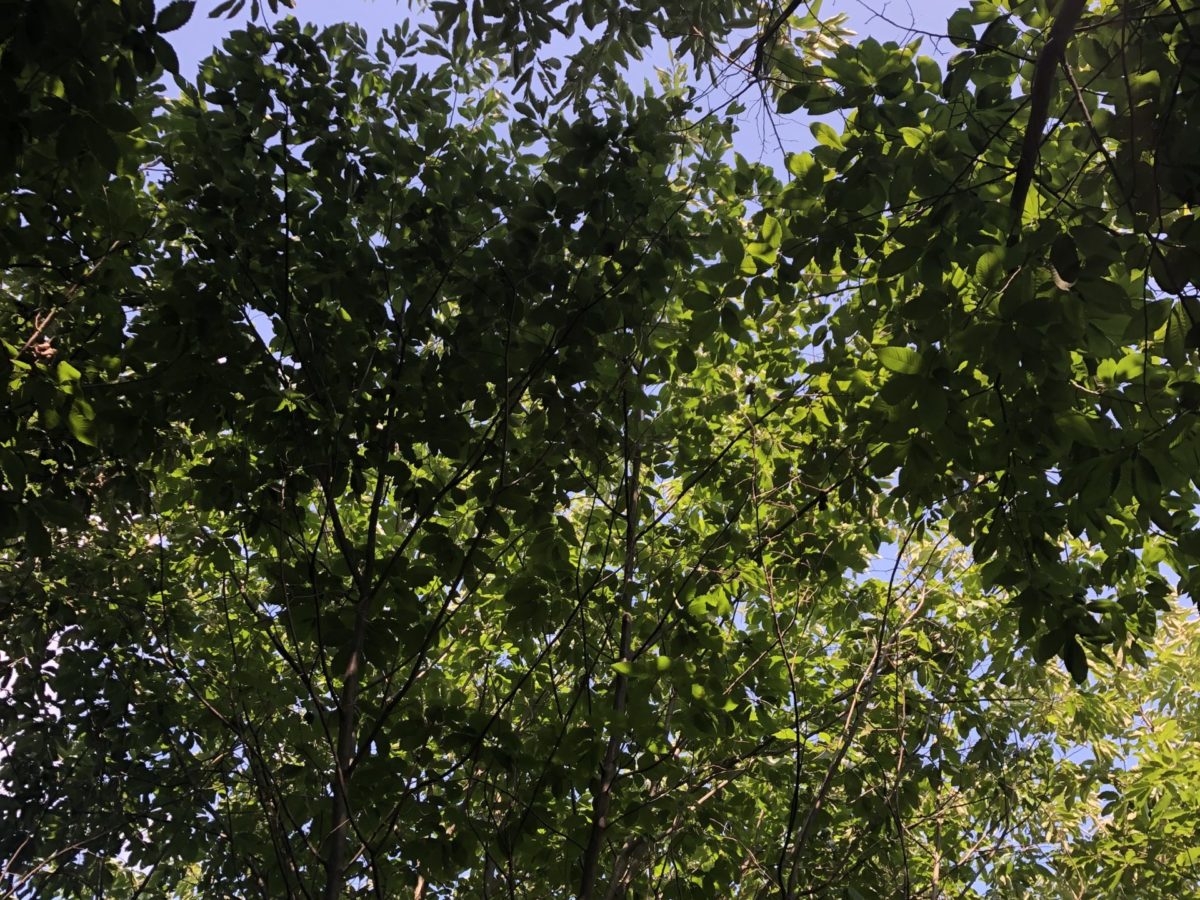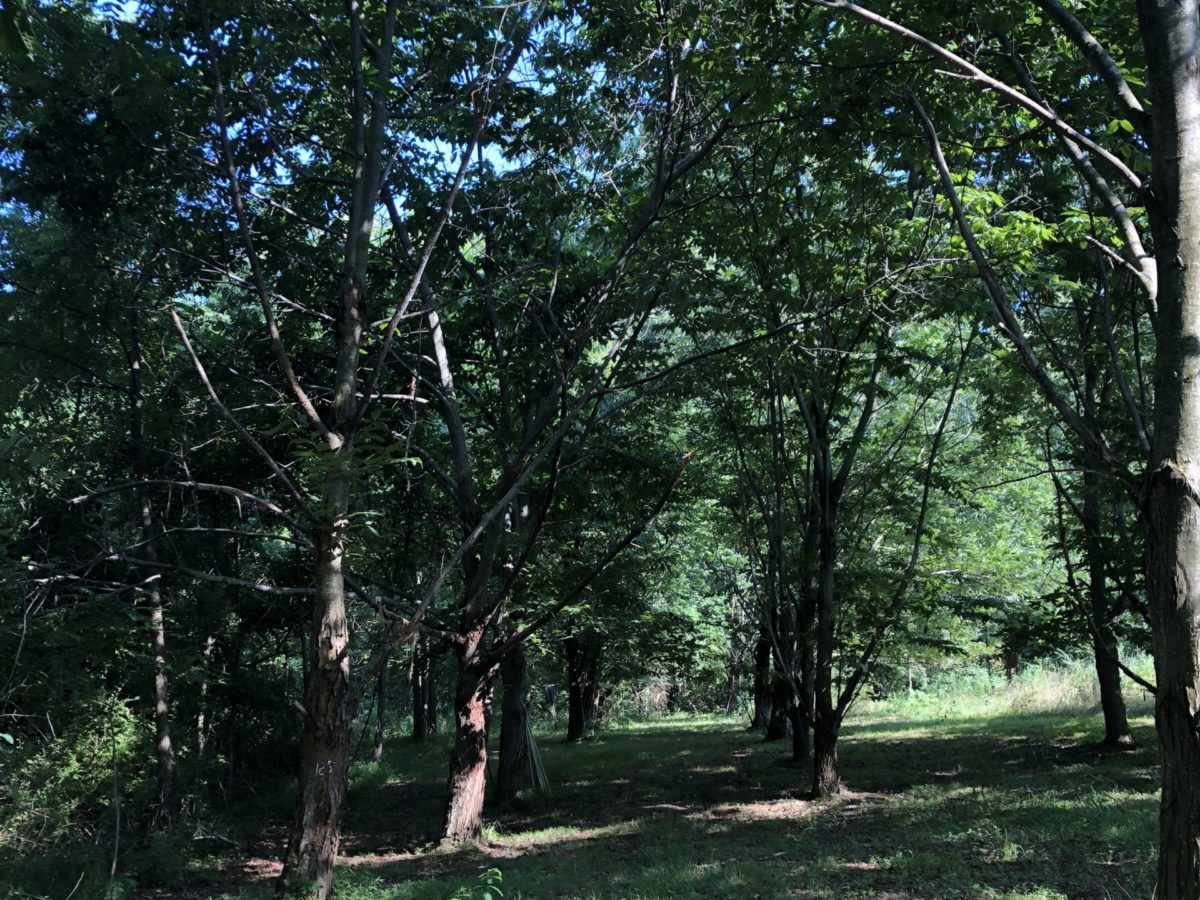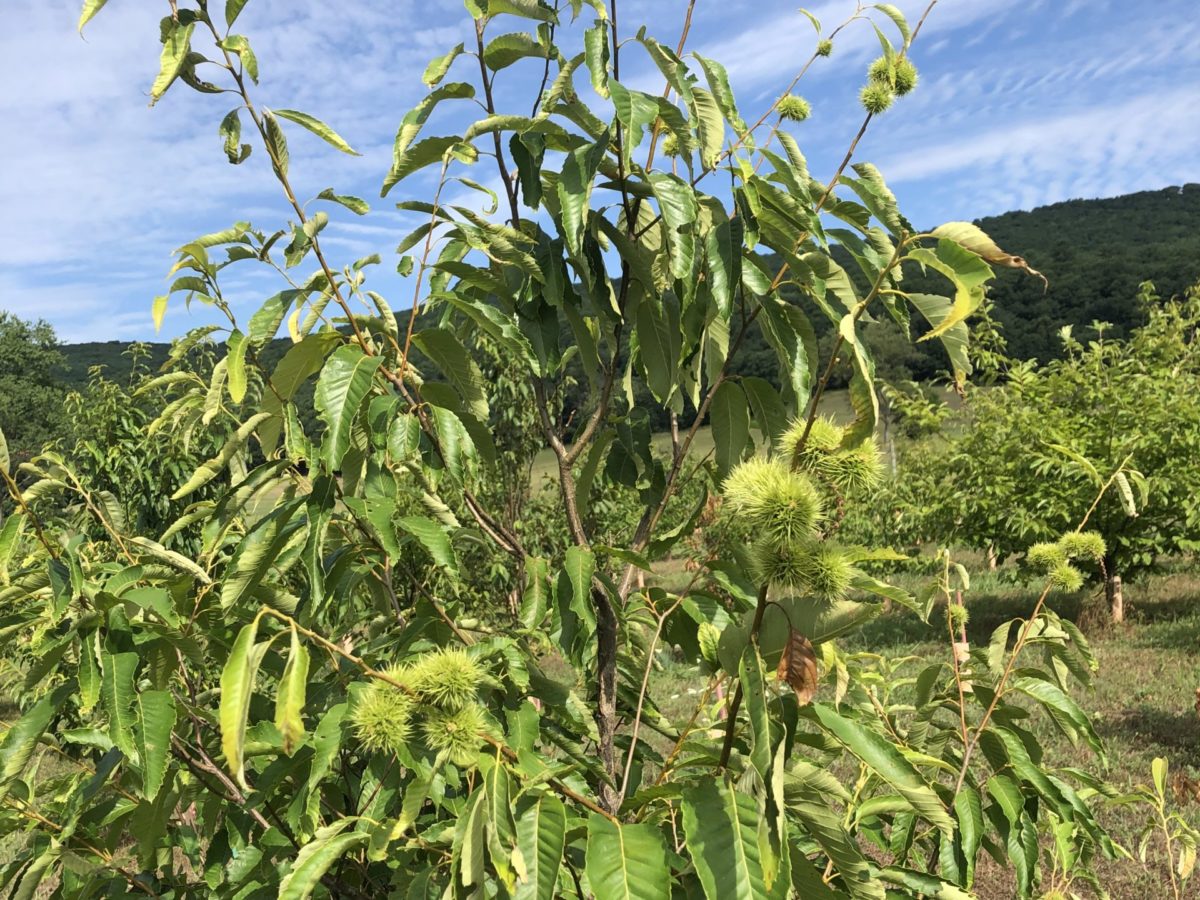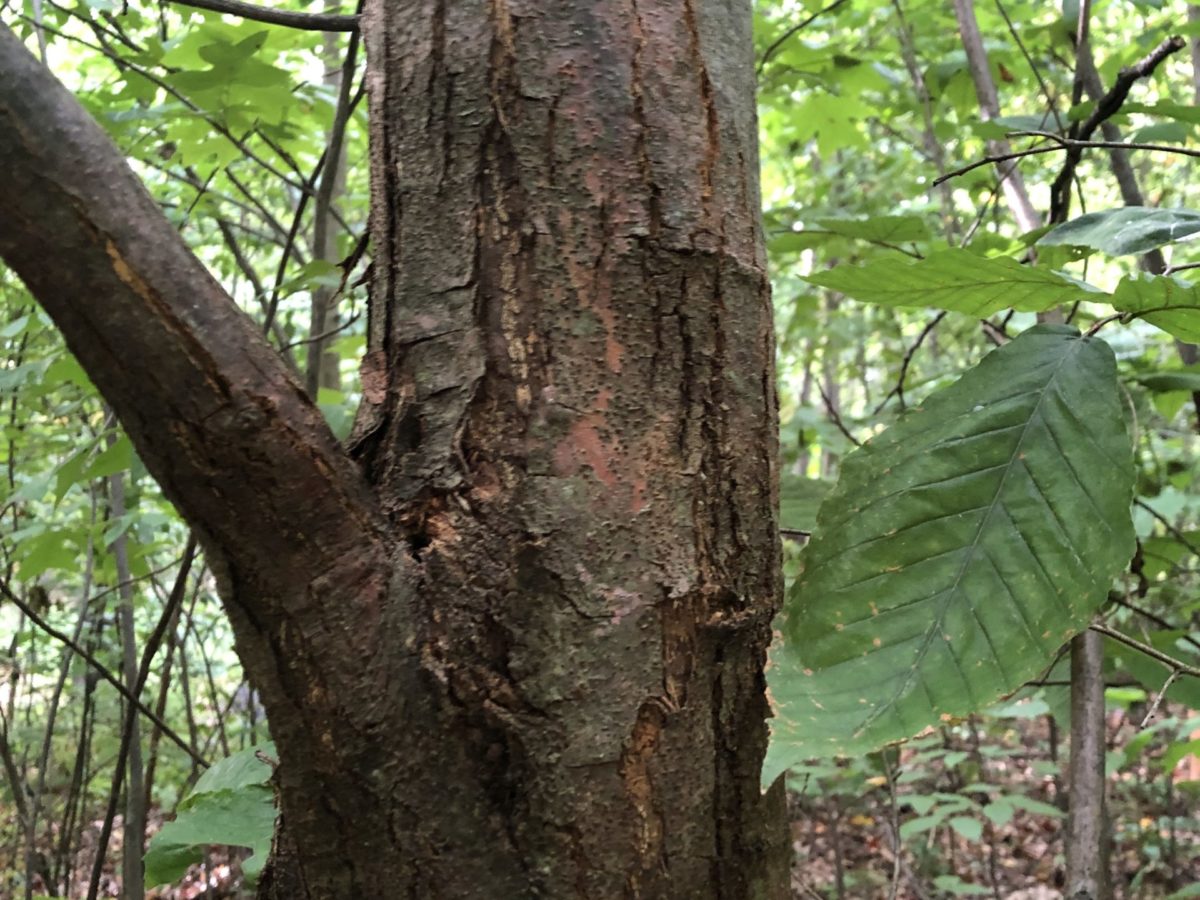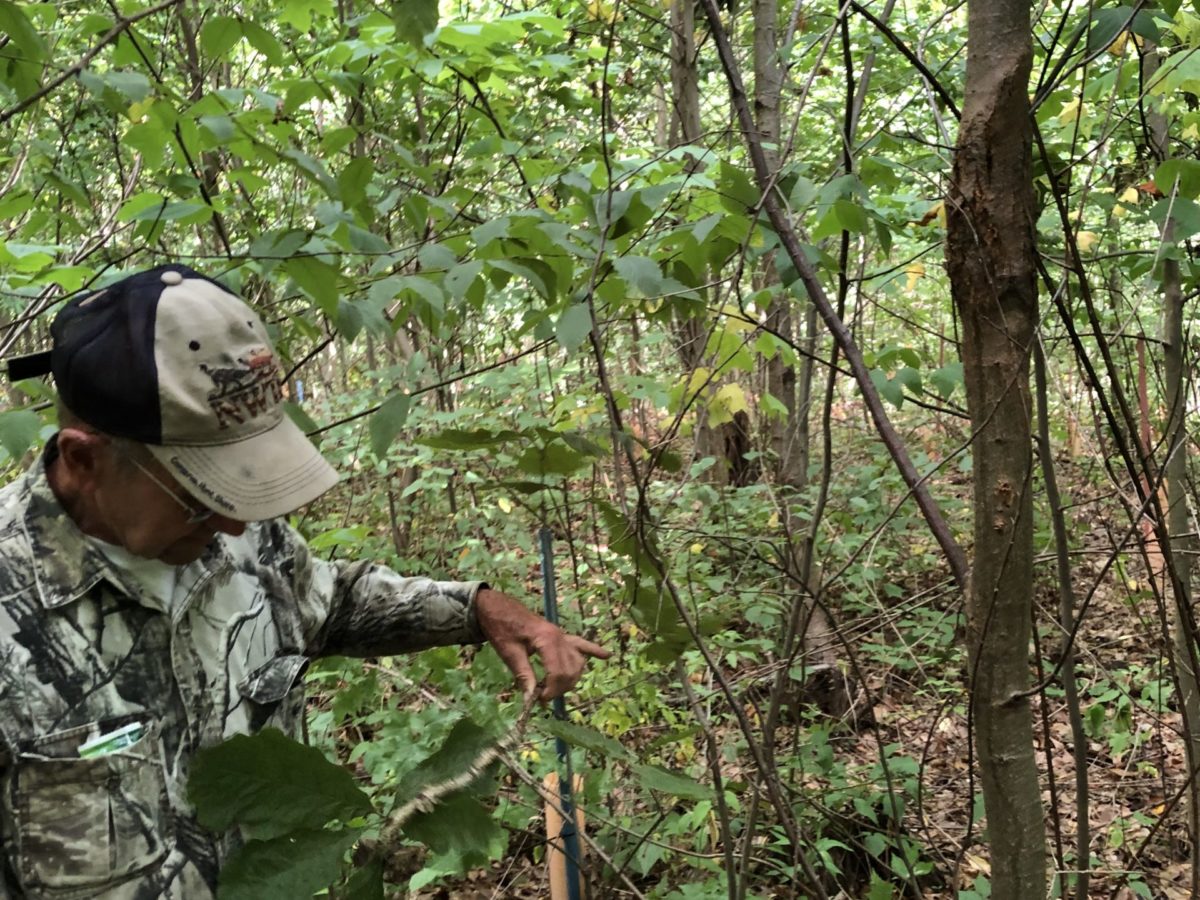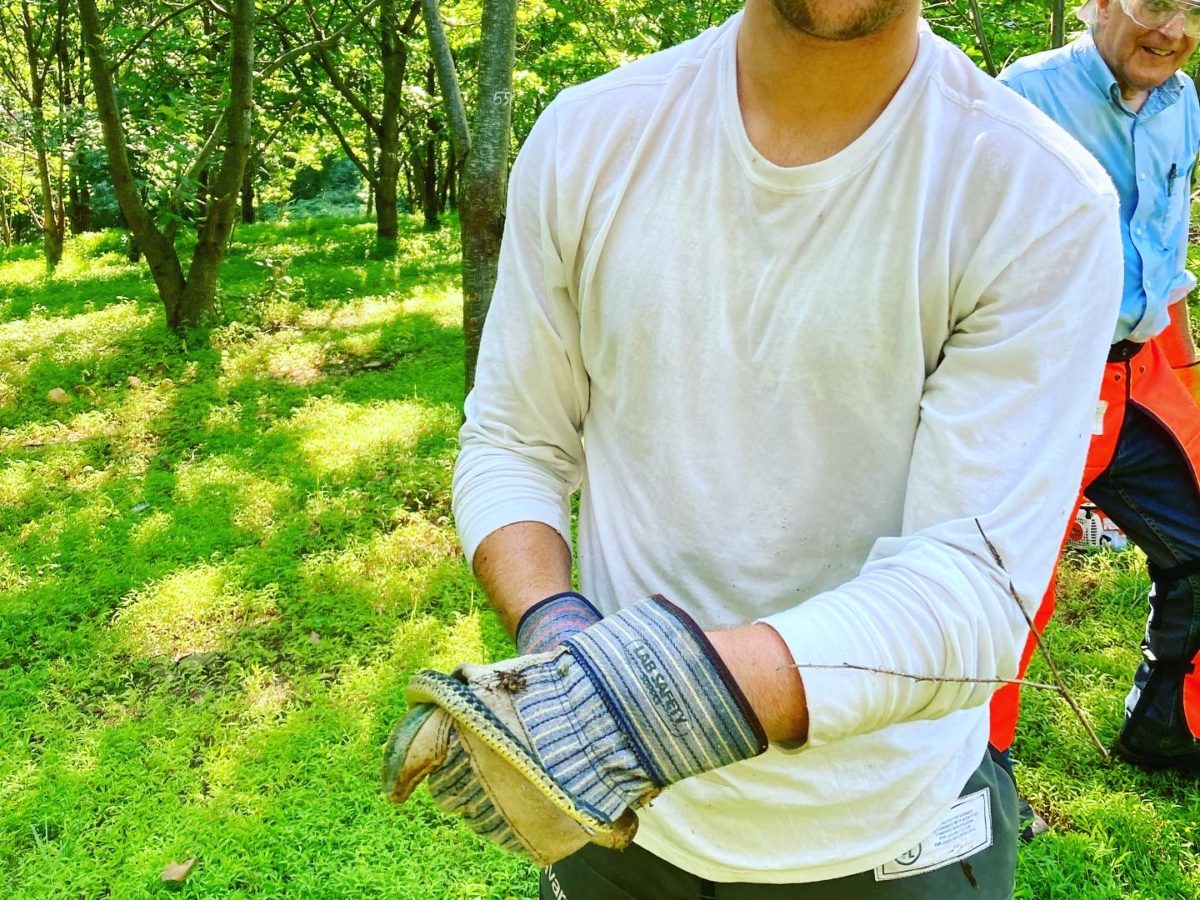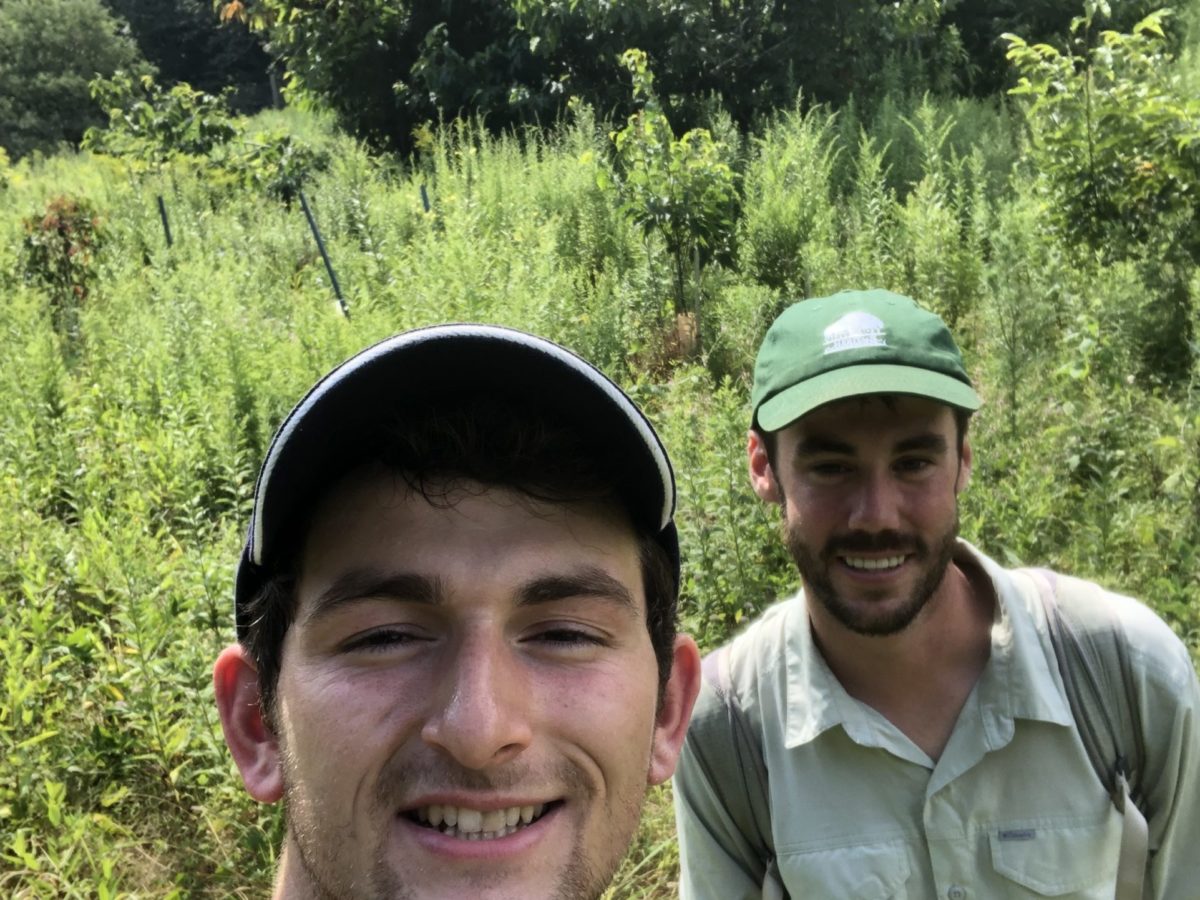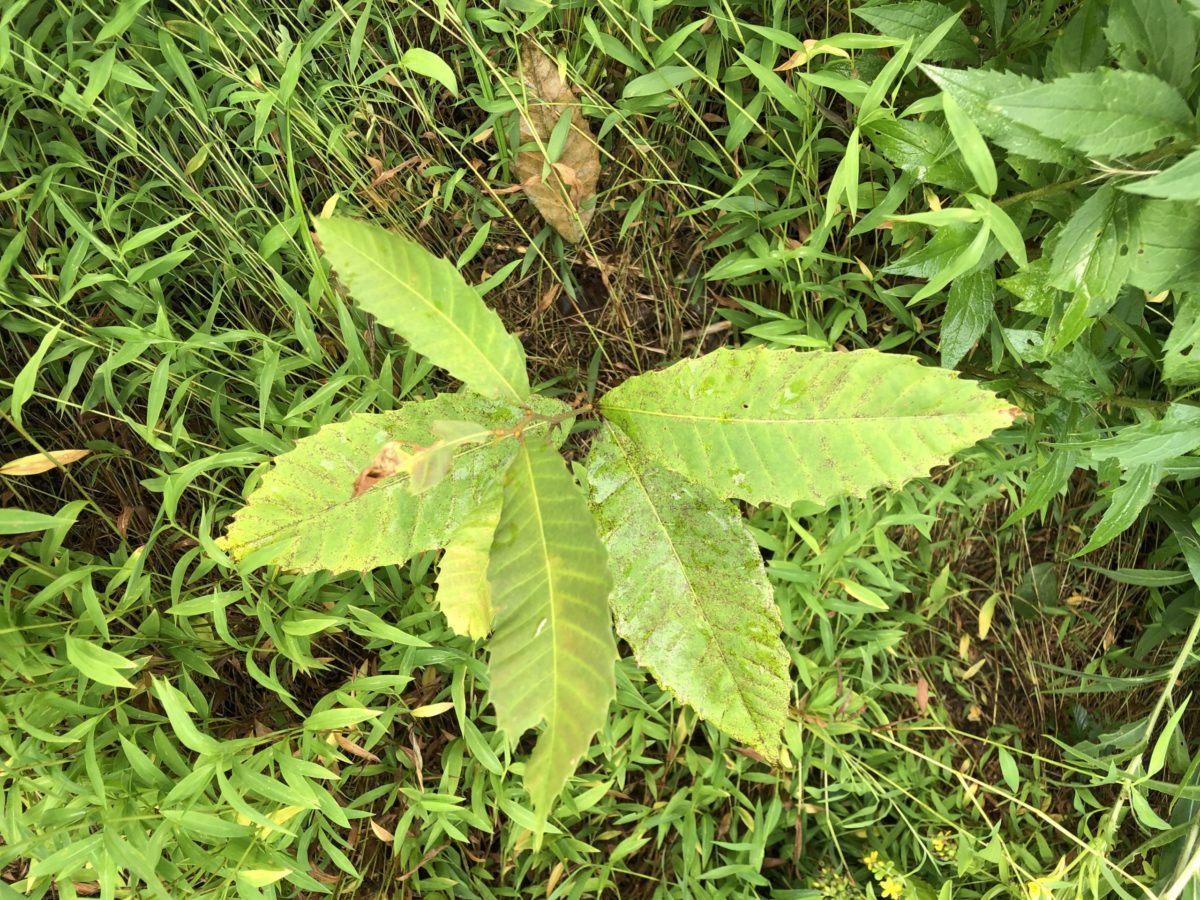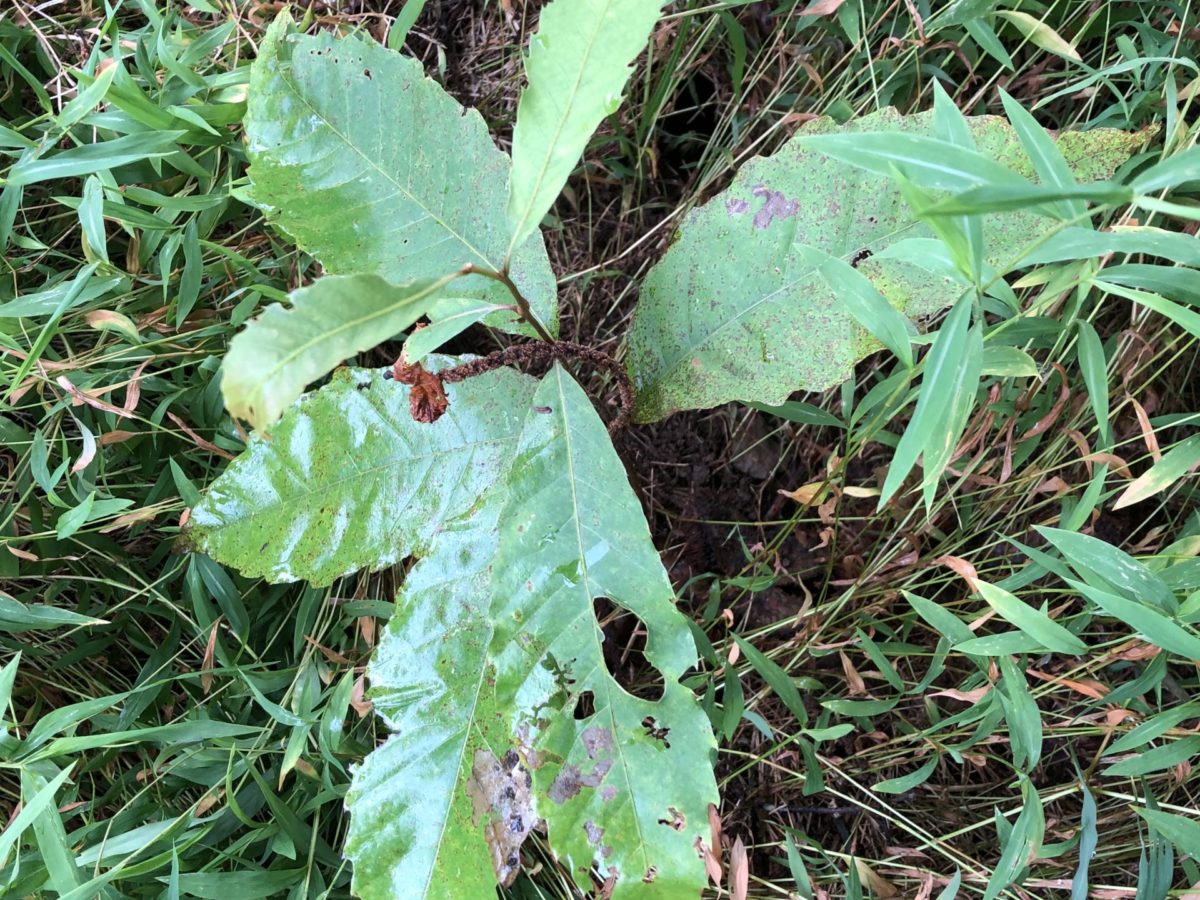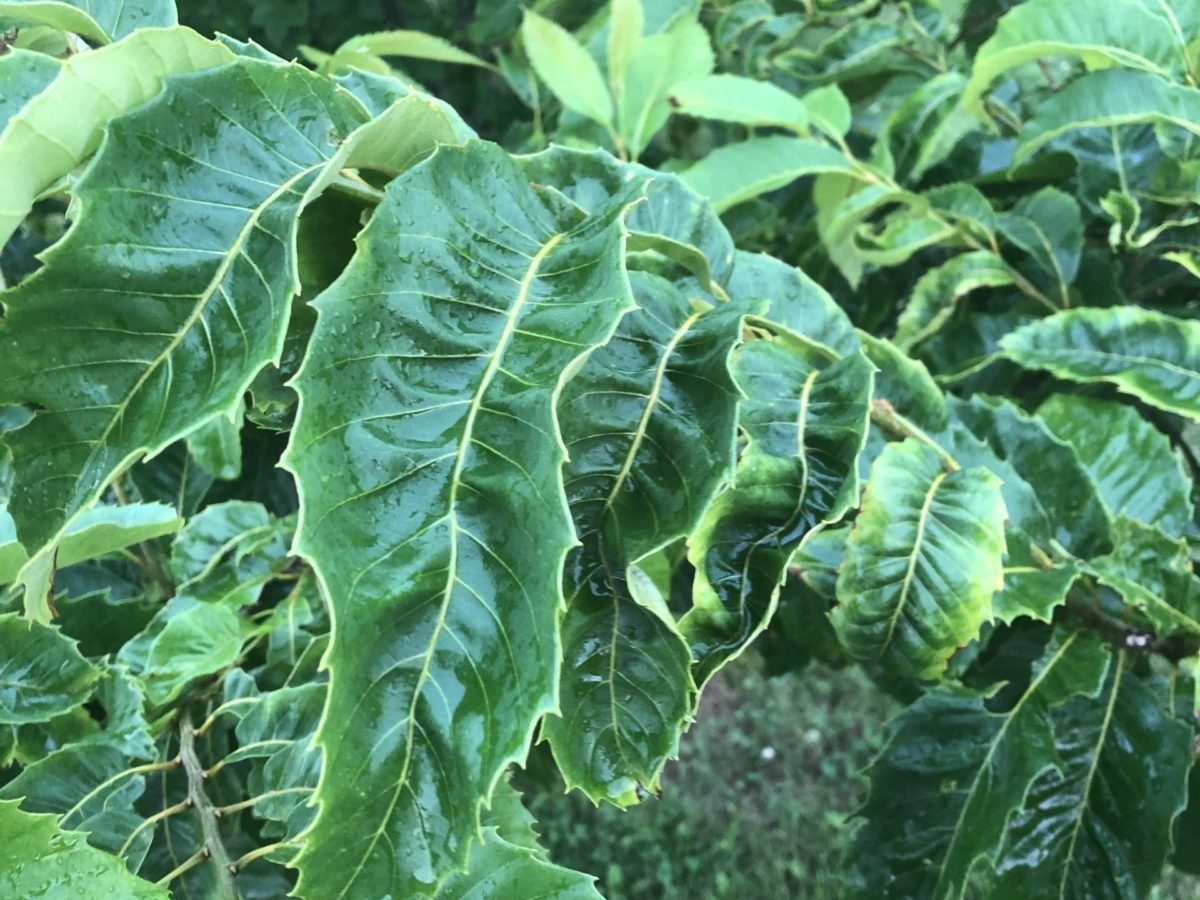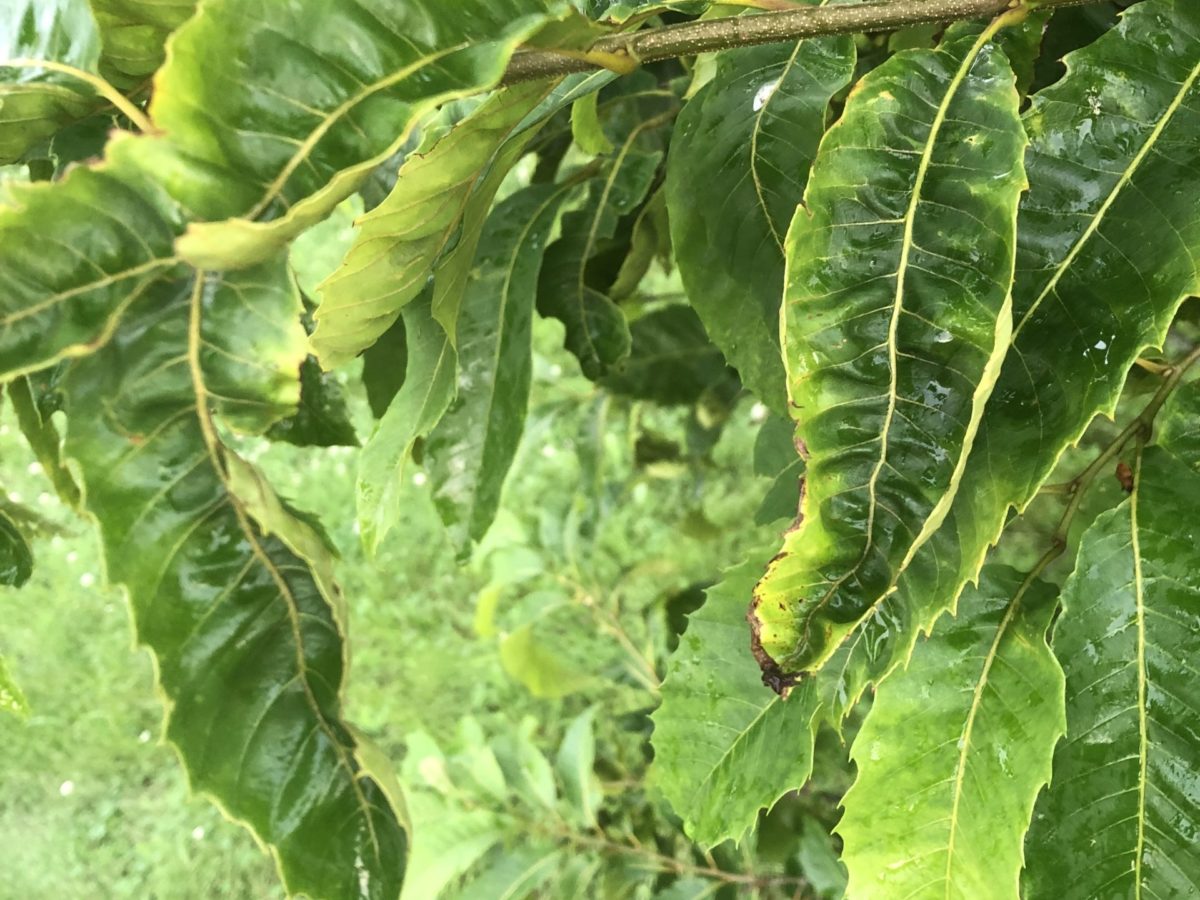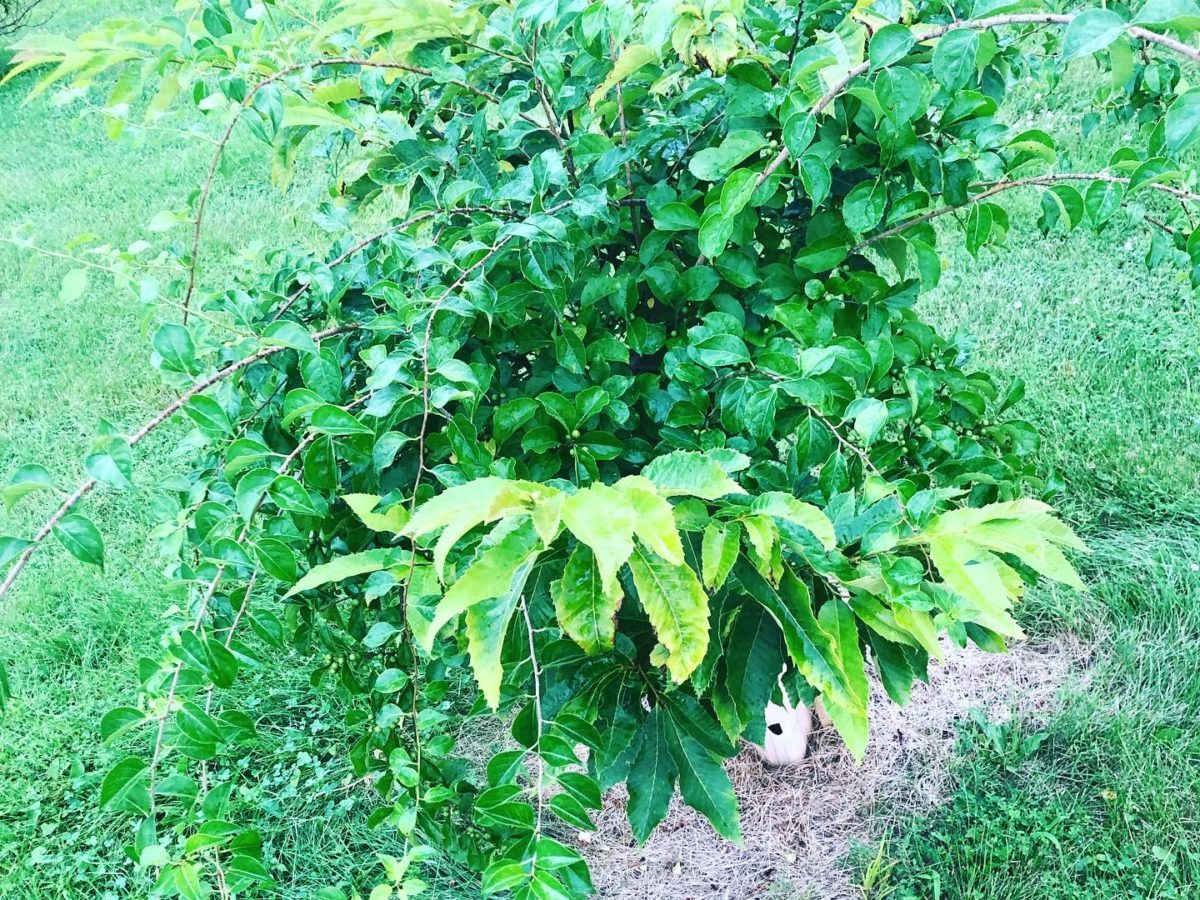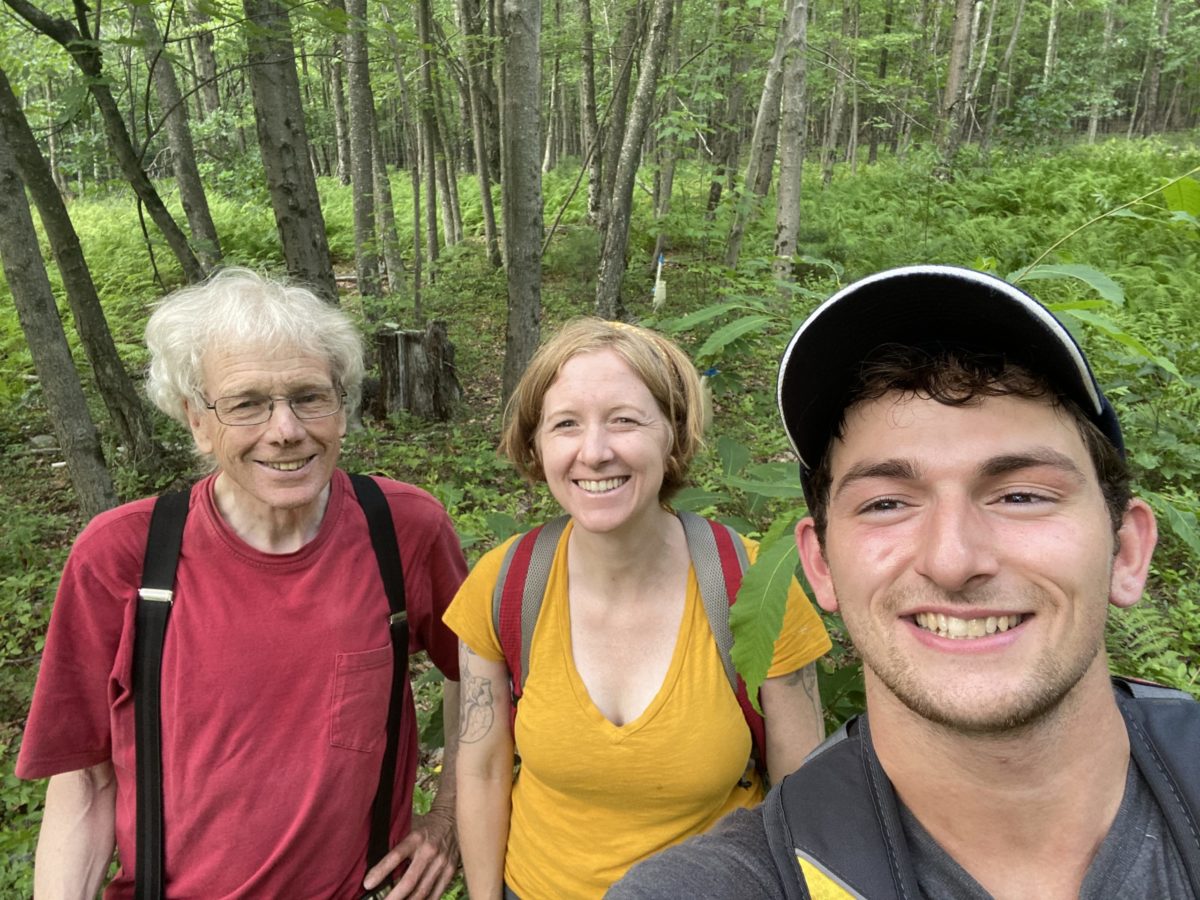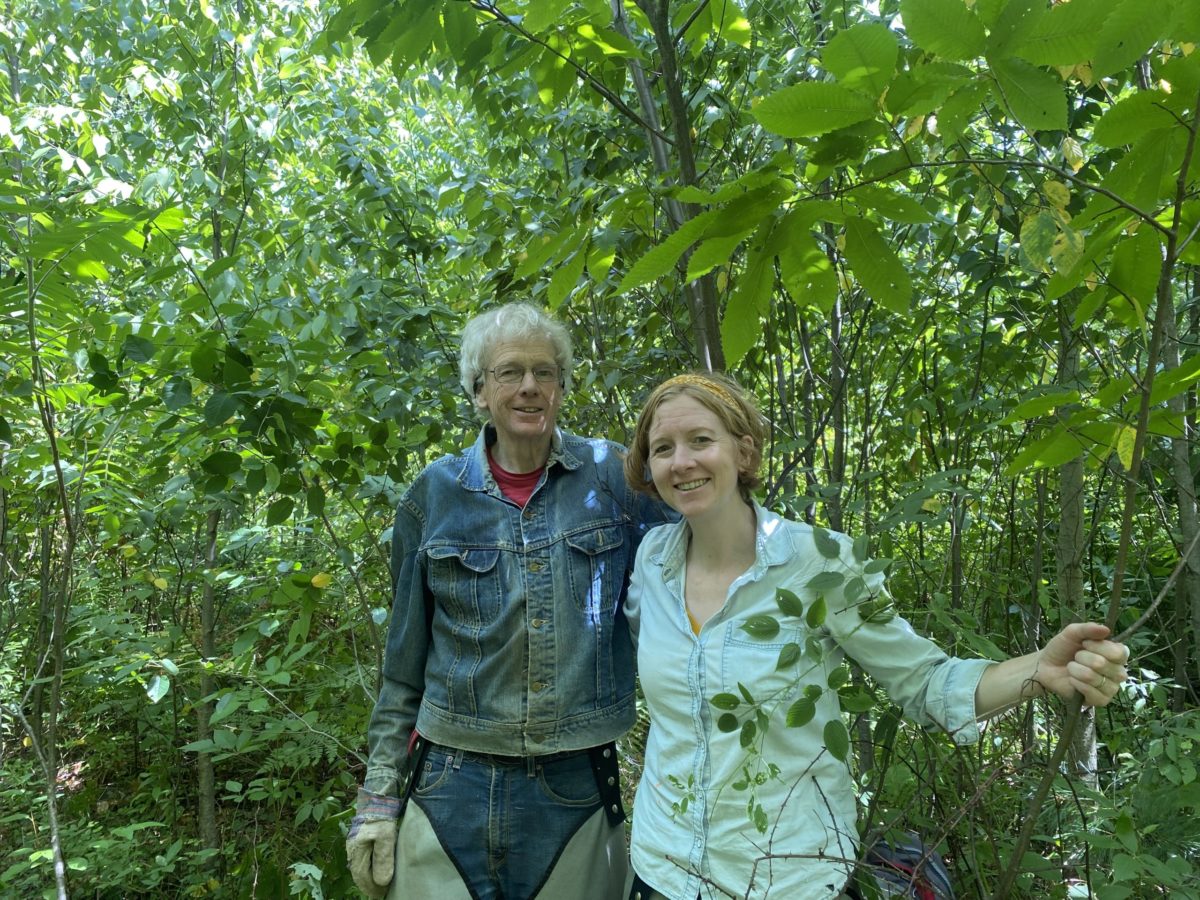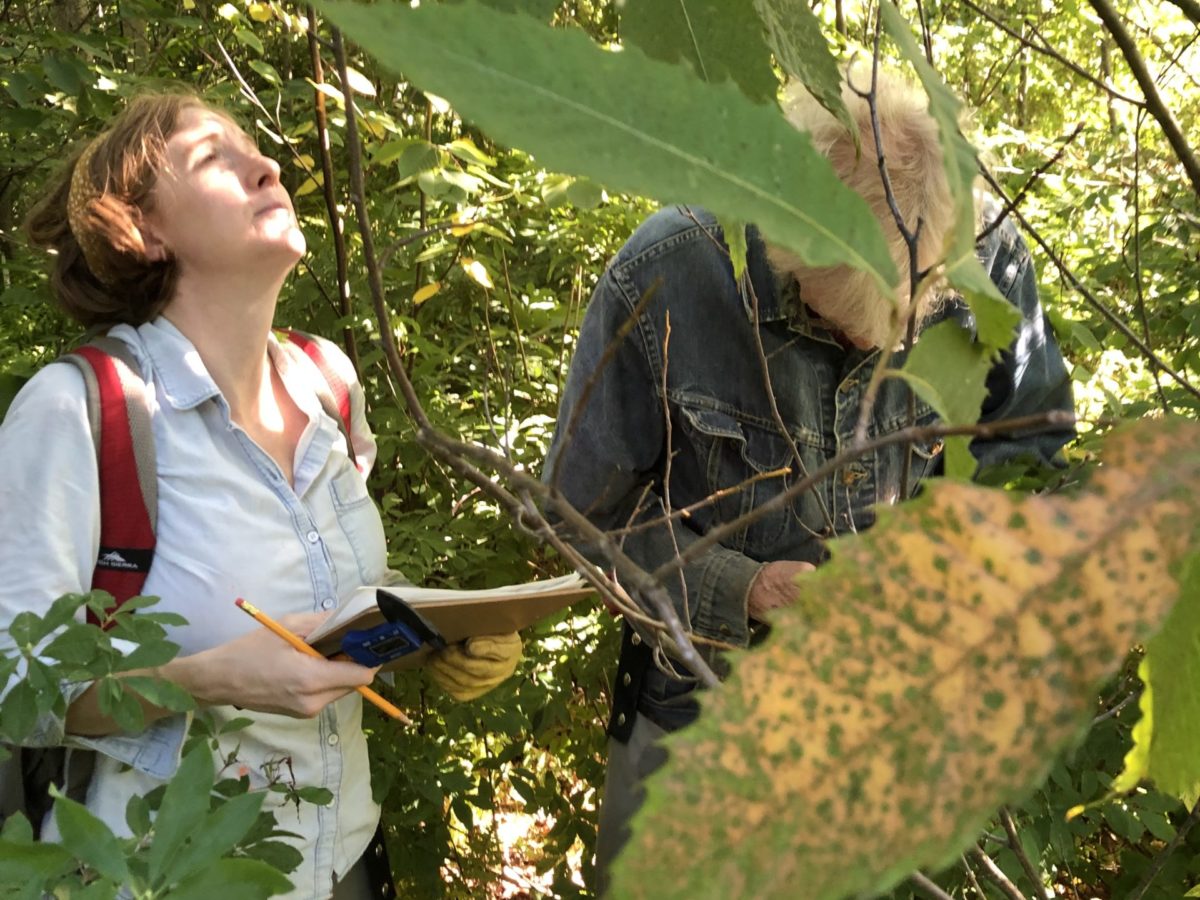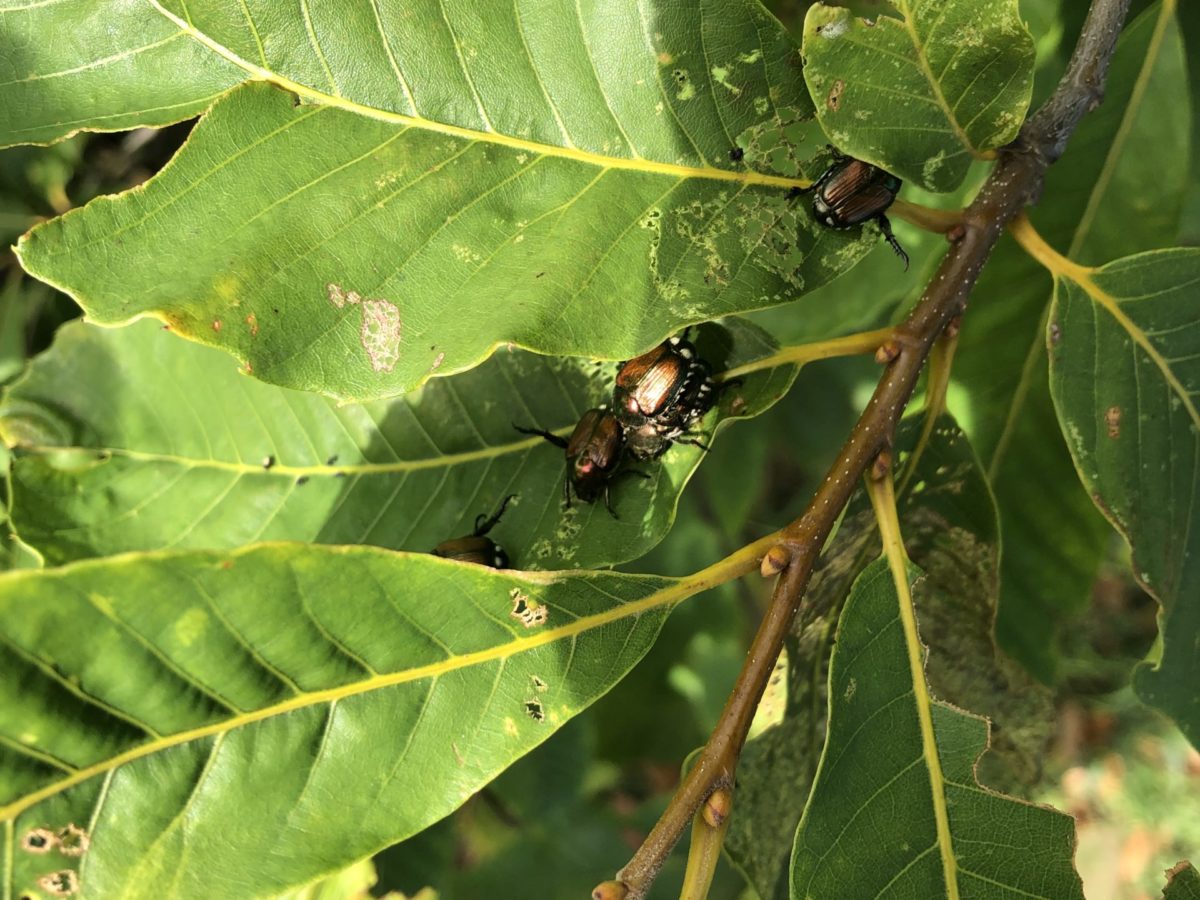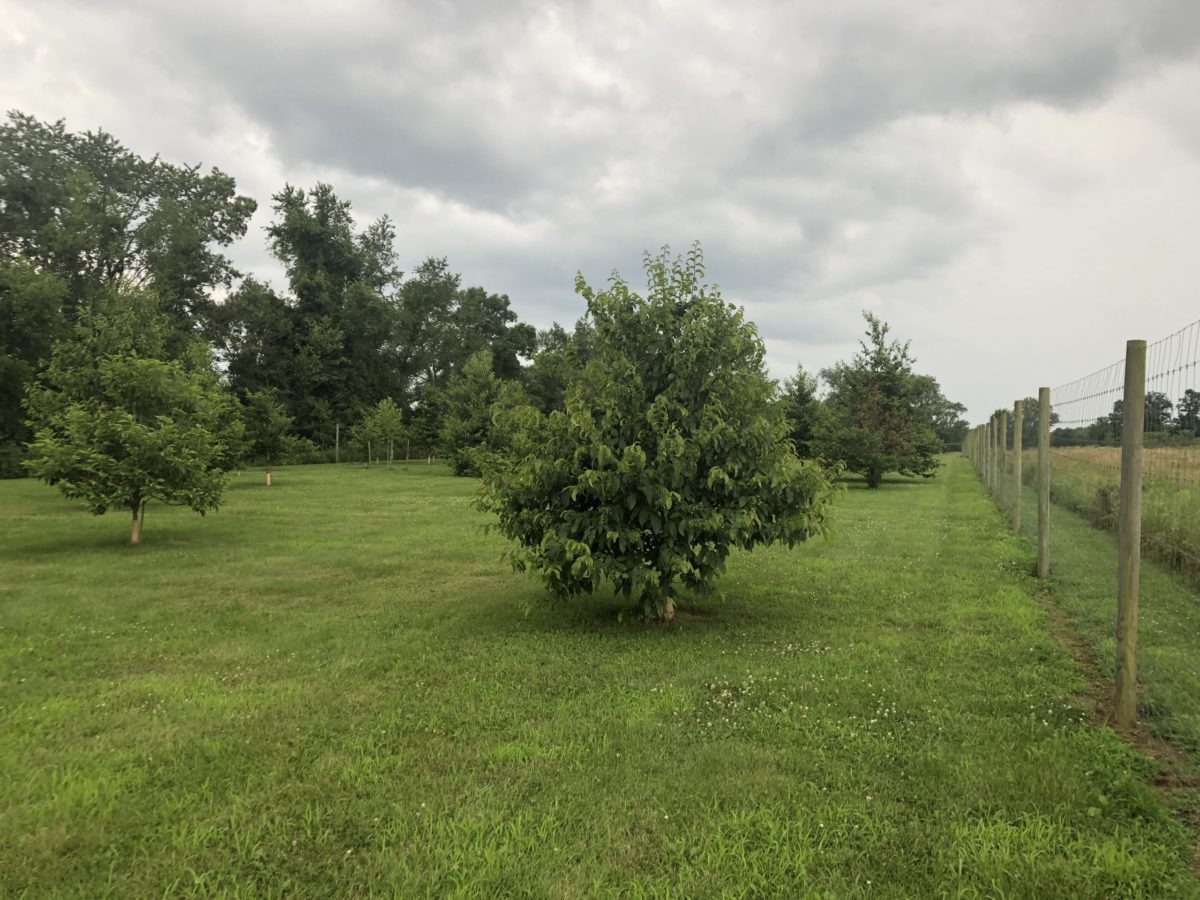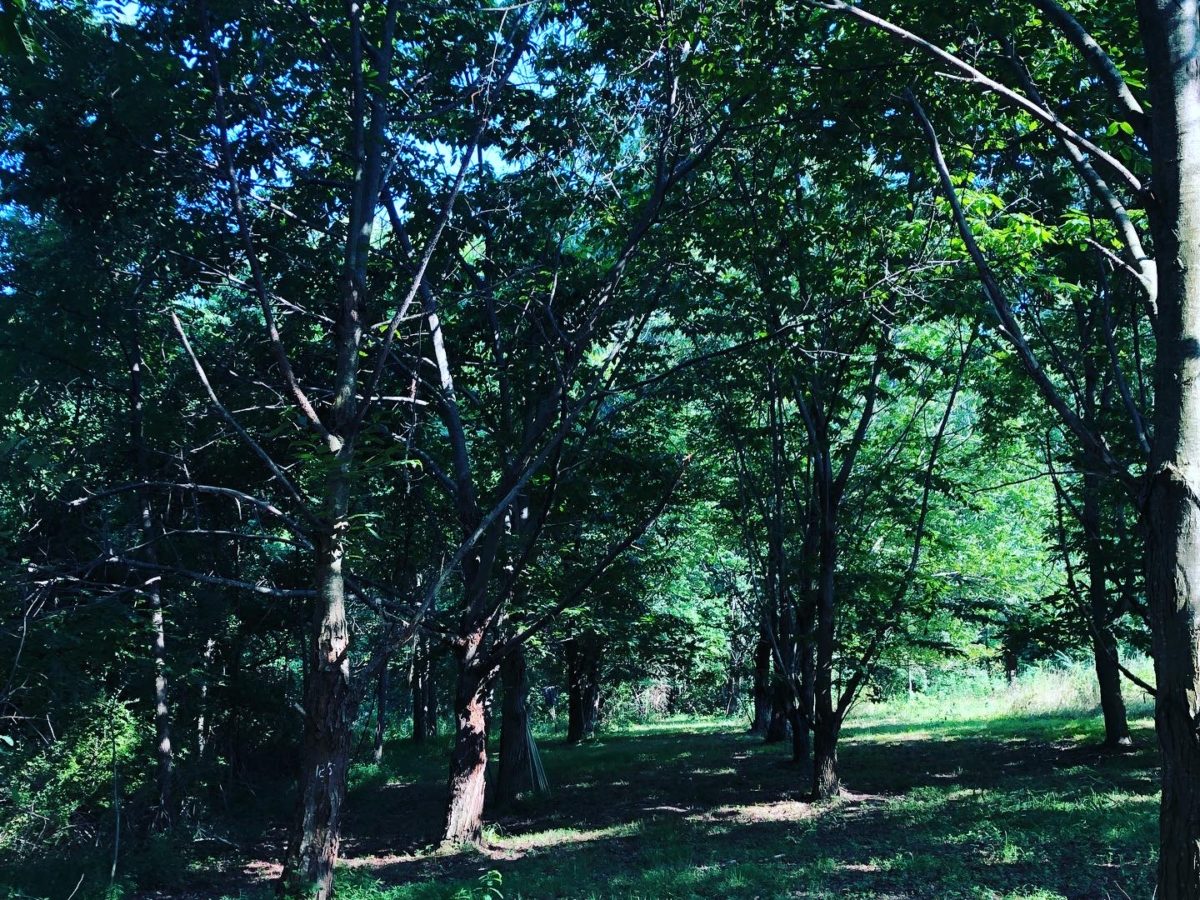The PA/NJ Chapter hired Dylan Longale as our Outreach and Data Management intern in May of 2022. Dylan covered a lot of territory, traveling over 3,400 miles to connect with members and growers around the state, and reporting on the status of trees and orchards.
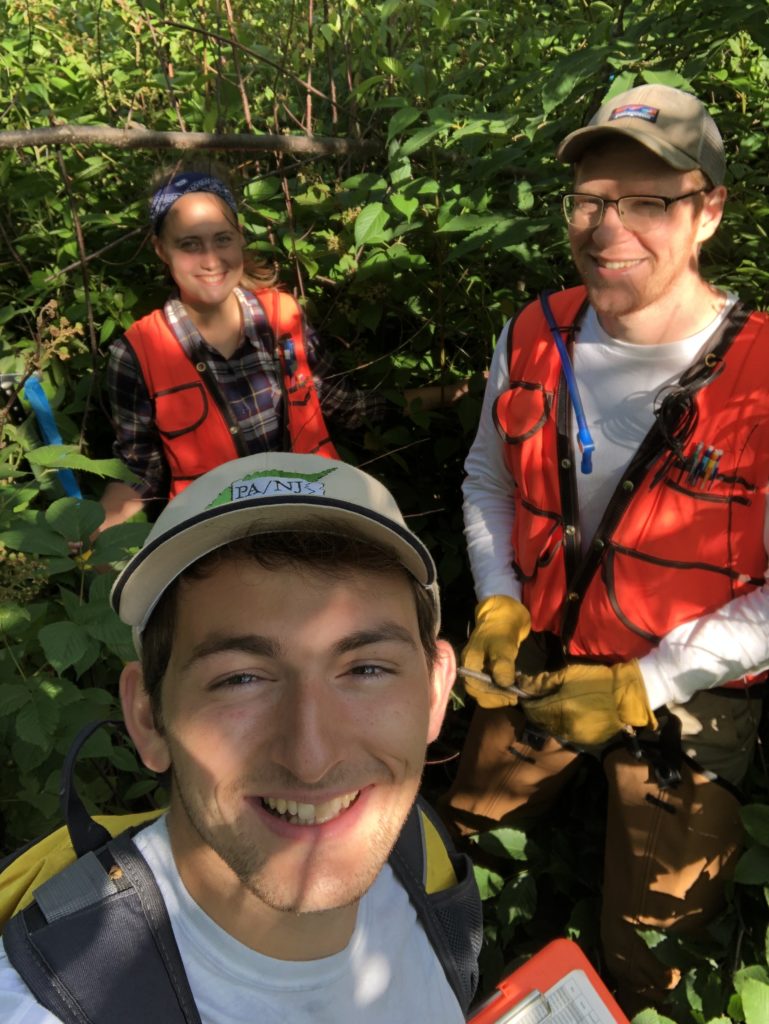
We were long overdue to reach out to growers, assess conditions, and find the best trees. Today, there are over 15,000 hybrid and wild-type American chestnut trees growing in over 100 orchards, restoration projects, and woodland locations. We are seeing great advances in both genomics and breeding for resistance.
Twenty years ago, Ann and Bob Leffel worked with the Duke Stanback Internship program to hire Sara Fitzsimmons as a summer intern.* Her role was to visit and evaluate the many member orchards across Pennsylvania. Since then, orchard outreach has been limited by staff resources. Sara remembers her intern experience fondly and it’s apparent that she never quite recovered from her love of the American chestnut. Today, she is the Cheif Conservation Officer for TACF and a valued authority on American chestnut restoration.
It was time to reach out and the energy and enthusiasm, not to mention the fresh perspective that Dylan brought to our mission have paid off. Not just for the growers and members that he visited but for our whole community. Check out his reports and photos below:
Outreach Report for May 2022
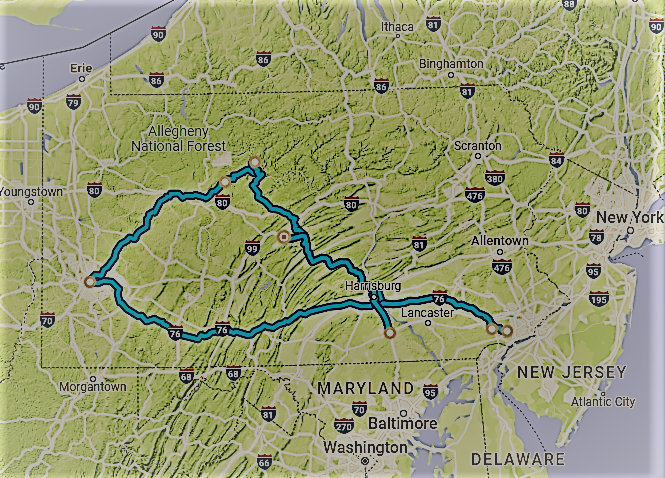
A report from Dylan Longale, our 2022 Outreach and Data Management
This month I got to meet some great people and saw some great orchards. I traveled 1,319 miles, met with 9 different members, and saw 11 different orchards.
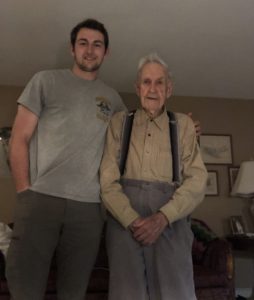
I started out the month traveling to York to interview George Perry. George just turned 100 and I got to hear all about his work with TACF from the chestnuts he has on his family farm to the work he did in the early days of the organization with Dave Armstrong and Robert and Ann Leffel.
After that, I traveled up to Cameron County to meet with Jim and Steve Zoschg. They had F2 orchards, and they showed me around their orchards as well as some decent size wild American chestnuts in the woods nearby. The Spongy Moth was hitting the trees hard up there, but some were persevering and looked nice.
Next, I went to Force, PA to look at an orchard that was established in 2013 on an old mining site that is now owned by the Western Pennsylvania Conservancy. I met up with Don Schmidt and we took survival data at this orchard. Don told me some of the history of the site and some of the restoration projects they were doing there.
My next stop was Pittsburgh where I met up with Ken Allshouse and Steve Johnstonbaugh. I went out and saw some orchards all around the city. I went to the North Park orchard with Ken. This orchard did not have deer fencing which led to huge problems with deer damaging the trees. It also had some problems with people coming in and damaging the orchard. Despite these setbacks, Ken has kept the orchard in shape. After North Park, Steve and I went to a forested planting in Sewickley heights. This site was very interesting because since it was a forested site it was fenced in and largely left alone. I got to see how the trees were doing in an unmaintained area with lots of competing vegetation. Most of the trees here were planted in 2012 and they looked great. Some of the trees were getting tall trying to fill in some of the gaps in the forest canopy.
My last stop this month was to Delaware county where I met Tom Struble and Dan O’Keefe. First, I went to see Tom’s F2 orchard in West Chester. He had about 60 trees at this orchard and was planning on planting more soon. The trees were planted in 2013 and were getting tall with not a lot of mortality. After that, I met with Dan O’Keefe at the Tyler Arboretum Orchard. This orchard is a wild American chestnut orchard established in 1997. Dan and his group of dedicated volunteers keep this orchard in great shape and still have many of their original plantings in the orchard. They are currently working on planting more wild American chestnuts and getting ready to bag flowers!
May Outreach — Orchard Images
Outreach Report for June 2022
A report from Dylan Longale, our 2022 Outreach and Data Management Intern
This month I traveled 913 miles, met four different members and orchard managers, and visited 7 different orchards. I also traveled to Maine and Vermont to see some natural regenerating chestnut sites.
June started off in Vermont and Maine, where I traveled with Sara Fitzsimmons, Dr. Jill Hamilton, and Jordan Basalyga. Dr. Hamilton is an Associate Professor & Director at, Schatz Center for Tree Molecular Genetics, and Jordan is her intern for the summer. They are doing some very fascinating research on Ash and emerald ash borer. Together we visited chestnut sites in Berlin, Vermont, and Atkinson, Maine, collecting leaf samples from many of the regenerating seedlings to test their genetics. At both sites, the population of regenerating trees stems from three mother trees that have since died. Dr. Hamilton will carry out genome sequencing to see how the founder’s effect and inbreeding are affecting the new seedlings. This will be useful for future restoration projects to see how many individual trees are needed to effectively establish a population.
Founder’s Effect: In population genetics, the founder effect is the loss of genetic variation that occurs when a new population is established by a very small number of individuals from a larger population.
https://en.wikipedia.org/wiki/Founder_effect
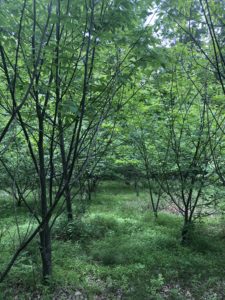
My next visit was to Blooming Grove hunting club and Steve Schoonover’s orchard up around Pike County. First, I visited Steve’s F2 orchard of about 200 trees planted in 2014. F2 trees are the second-generation offspring of a Chinese/Japanese chestnut crossed with American chestnut. Steve’s orchard looked great with lots of healthy trees. He had all the trees fenced but unfortunately, this did not stop bears from coming in and damaging a few of the trees. After that, I visited three orchards with Robin Wildermuth around Blooming Grove. First, we visited an orchard around Bethlehem water authority. This site was interesting because American chestnuts were planted alternately along rows of red and white oak. The site had been logged in 2018 and planted in 2019 so it was interesting to see how the chestnut competed with the oak and other regenerating species. The chestnut seemed to be doing well and outgrowing almost everything else on the site. Next, we went to two orchards around Blooming Grove hunting club and met up with the forester there, Devin Schappert. We worked on updating survival data at both the orchards. These orchards were getting hit hard by spongy moth defoliation and had a lot of sweet birch growing in to compete with the chestnut. When given enough room the chestnuts were able to compete and outgrow some of the birches but in some cases, the birch stands were too thick and choked out the chestnuts. There was also a problem with hay-scented fern taking over in these orchards.
My last visit this month was to Allegheny National Forest (ANF). On the way, I visited an orchard in Moshannon State Forest. This orchard was planted from 1998 through 2000. It was an earlier backcross orchard which means the trees here are the result of crossing an American and a Chinese chestnut with subsequent generations being crossed with the same recurrent American chestnut parent. Many of the trees here were not in great shape with the main stems of many trees dying back and a lot of them were producing sprouts.
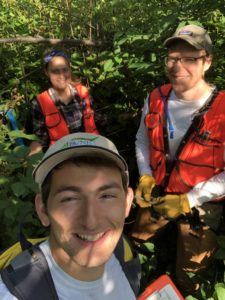
When I got to ANF I visited an early backcross orchard, planted in 1995. There were only a handful of trees remaining from this planting and many were very blighted although one looked nice and was working its way into the forest canopy. While at ANF I also worked with PA Forest Service interns, Nate Ferris and Emily Saltzer, who were doing some work researching American chestnuts. They were looking at how chestnuts faired in areas with silvicultural cuts of the overstory to promote regeneration. We looked at how the chestnuts did in competition with other species on these sites. Overall, we found they competed quite well if they didn’t get choked out early on, they were able to grow and compete with many of the other species on these sites such as sweet birch and cherry.
Orchard Images from June Outreach
Outreach Report for July 2022
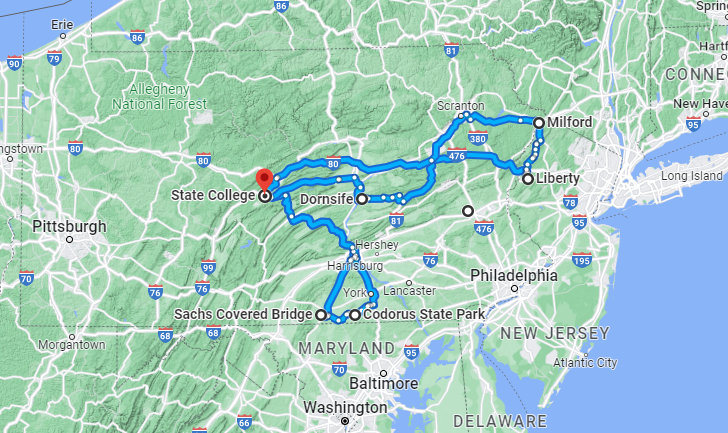
A report from Dylan Longale, our 2022 Outreach and Data Management Intern
Over the month of July, I traveled 810 miles divided into two trips — visiting seven orchards and meeting 10 fellow chestnut enthusiasts. I spent most of my time visiting plantings near York, Pennsylvania on my first trip, before heading up to Milford, Pennsylvania.
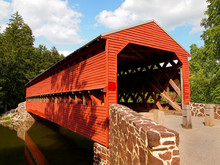
In Gettysburg, I visited an orchard next to the Sachs Covered Bridge. This orchard was an F2 orchard that was planted in 2014 and originally had 500 trees. Upon my visit, I found there were only about 200 trees remaining. A few trees were doing well although this site had a problem with invasives and some plant hopper damage. Invasives such as oriental bittersweet, Japanese honeysuckle, and white mulberry were growing around the trees resulting in some girdling due to the vines or just outcompeting the chestnuts. Planthoppers were also prevalent as they will feed on the sap from the leaves of the chestnuts resulting in a distorted leaf shape.
Next, I visited Jay Brenneman, Don Lehigh, Hasmukh Amin, and Lynn Doll at Codorus State Park. There are multiple orchards within the park including some F1, F2, and backcross orchards. We worked hard to cut and remove some of the dead trees in the orchards and cut back some of the vines and invasives growing on some of the trees. The orchards there were originally started by Dave Armstrong but eventually got overgrown. Jay worked to reclaim some of the trees and add to the orchards over the years. Now the orchards are in great shape due to the hard work of the members and volunteers there. I had a great time helping out.
My second trip included many stops at orchards all over the Eastern half of the state. I started out traveling to Dornsife, Pennsylvania to meet Chuck White from the Game Commission. They have an F2 orchard that has about 500 trees. The trees looked great and a few of them were just getting mature enough to produce burrs which Chuck said they have not had a lot of in the past. They did some replanting last year but some of the new seedlings were having trouble getting established. I saw a lot of Japanese beetles on the trees, but they did not seem to be causing too much damage. Chuck and the Game Commission do a great job maintaining this site and look forward to collecting some of this year’s nuts to out-plant into the forest.
Further down interstate 80, I met Wayne Martin at his family’s land in New Jersey. Wayne and his son Carl worked to establish a forest planting of F2 trees on an area of their land that was cleared by a storm years ago. The trees competed with other species regenerating on the site such as tulip poplar and sweet birch. This resulted in some of the trees being suppressed or dying off due to the lack of sunlight but also led to some nice tall chestnuts that were growing to be quite dominant trees.
Next, I went up to Milford experimental forest to meet Leila Pinchot and her dad Peter. This orchard had two types of B3F3 backcross plantings. One was a planting following a timber harvest in which the trees were growing against tons of new regeneration such as aspen and sweet birch. The second was forest planting under a younger-growth birch forest. We had a great time spending the day fighting through brush collecting measurements and updating survival data. The trees in the more recently harvested site seemed to be doing very well and competing against the other regenerating species. The trees planted in the younger growth birch were more suppressed and smaller likely due to the limited sunlight they were receiving. They plan on hopefully cutting out some of the more dominant birches at this site in hopes of creating space for the chestnut saplings to grow.
My last stop was at an orchard established on Heritage Conservancy land out around Allentown. Here I met Tyler who works for the Heritage Conservancy, and we worked to update survival data for the trees left in the orchard. There were originally about 110 trees in this orchard that were planted in 2002 that were F1 and wild American trees. Since then, many have died, but last year they planted a few of the newer backcross trees and some of them seem to be doing well. There were also a few regenerating seedlings I found in this orchard which is always an exciting find!
ORCHARD IMAGES FROM JULY OUTREACH
